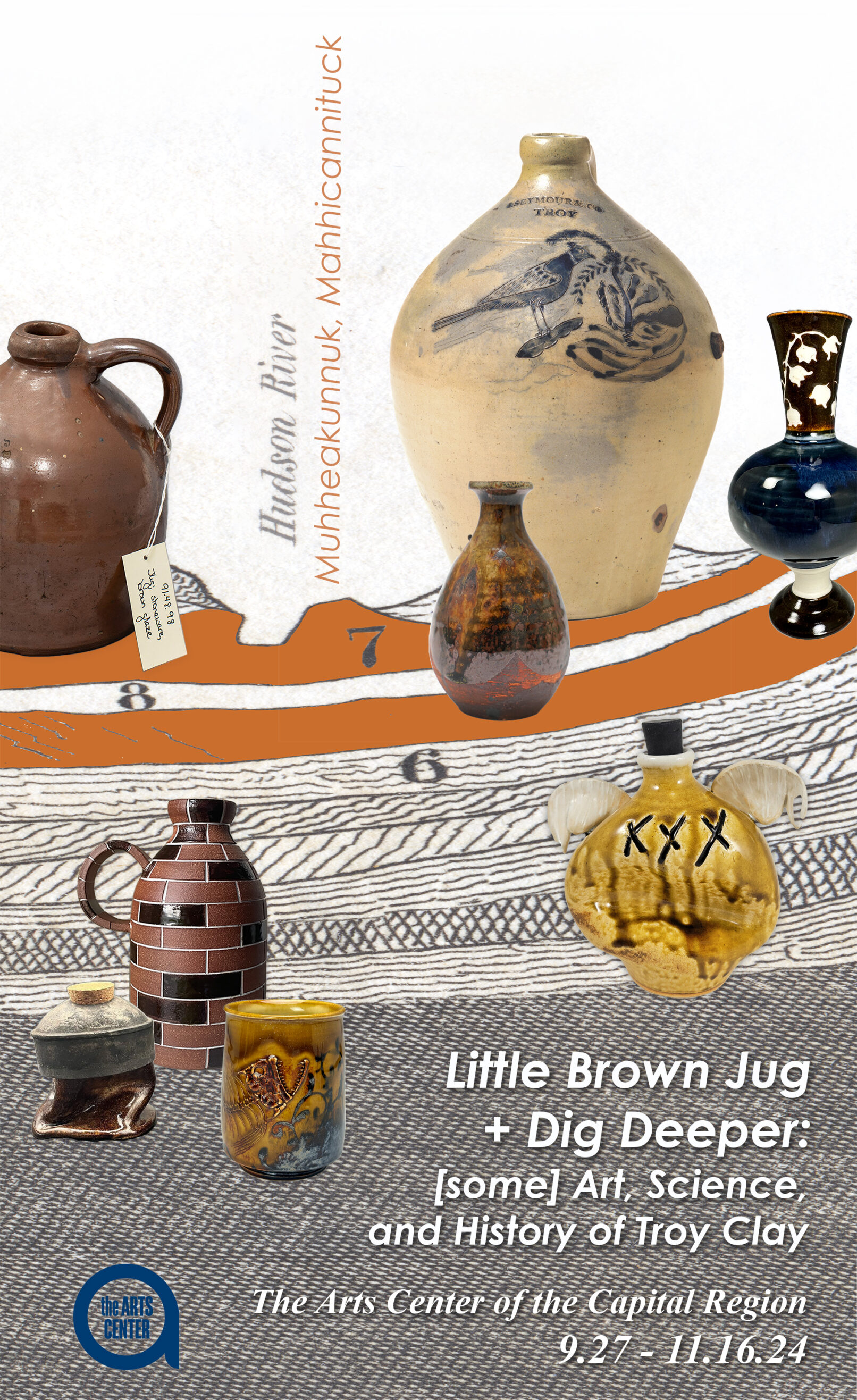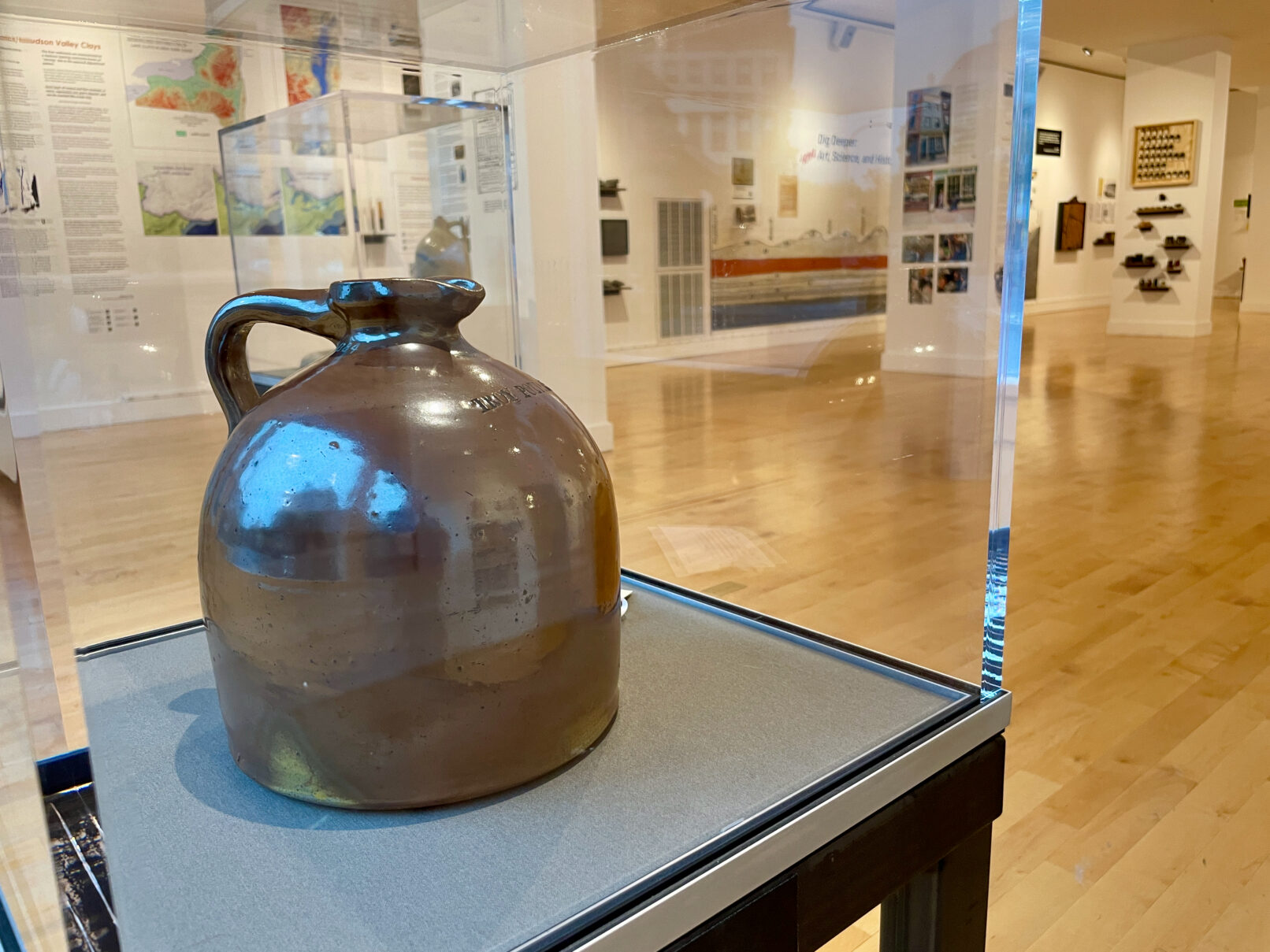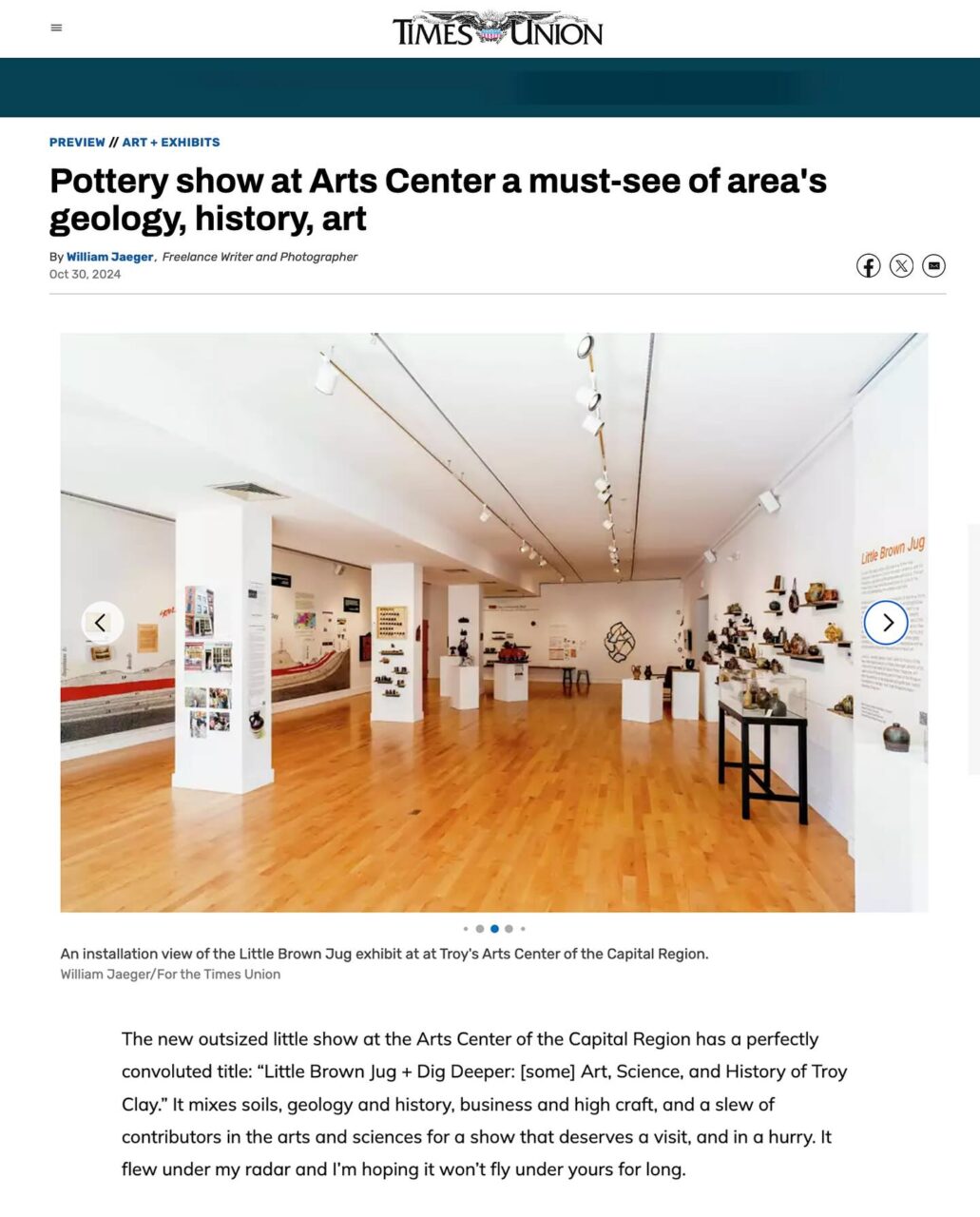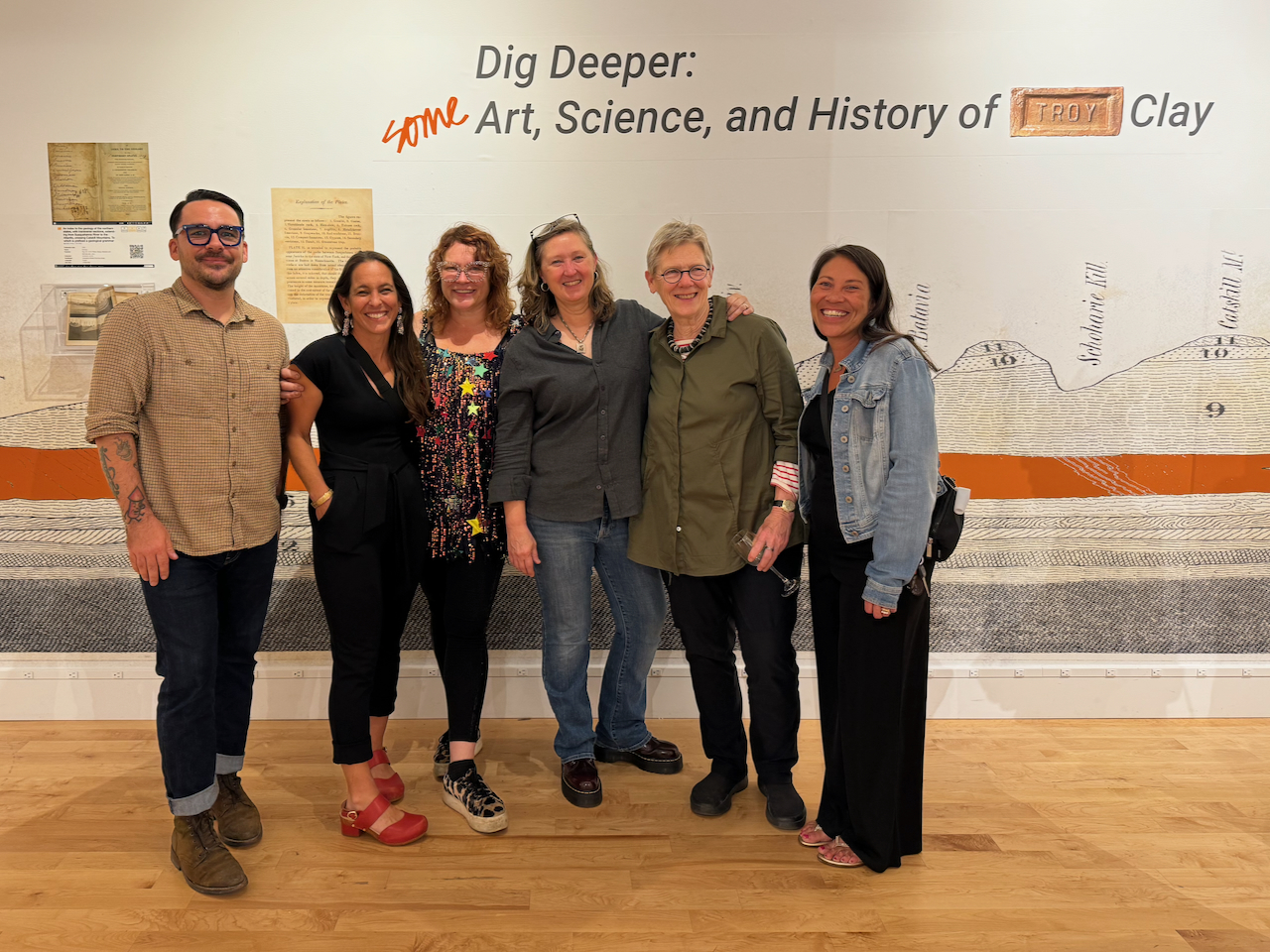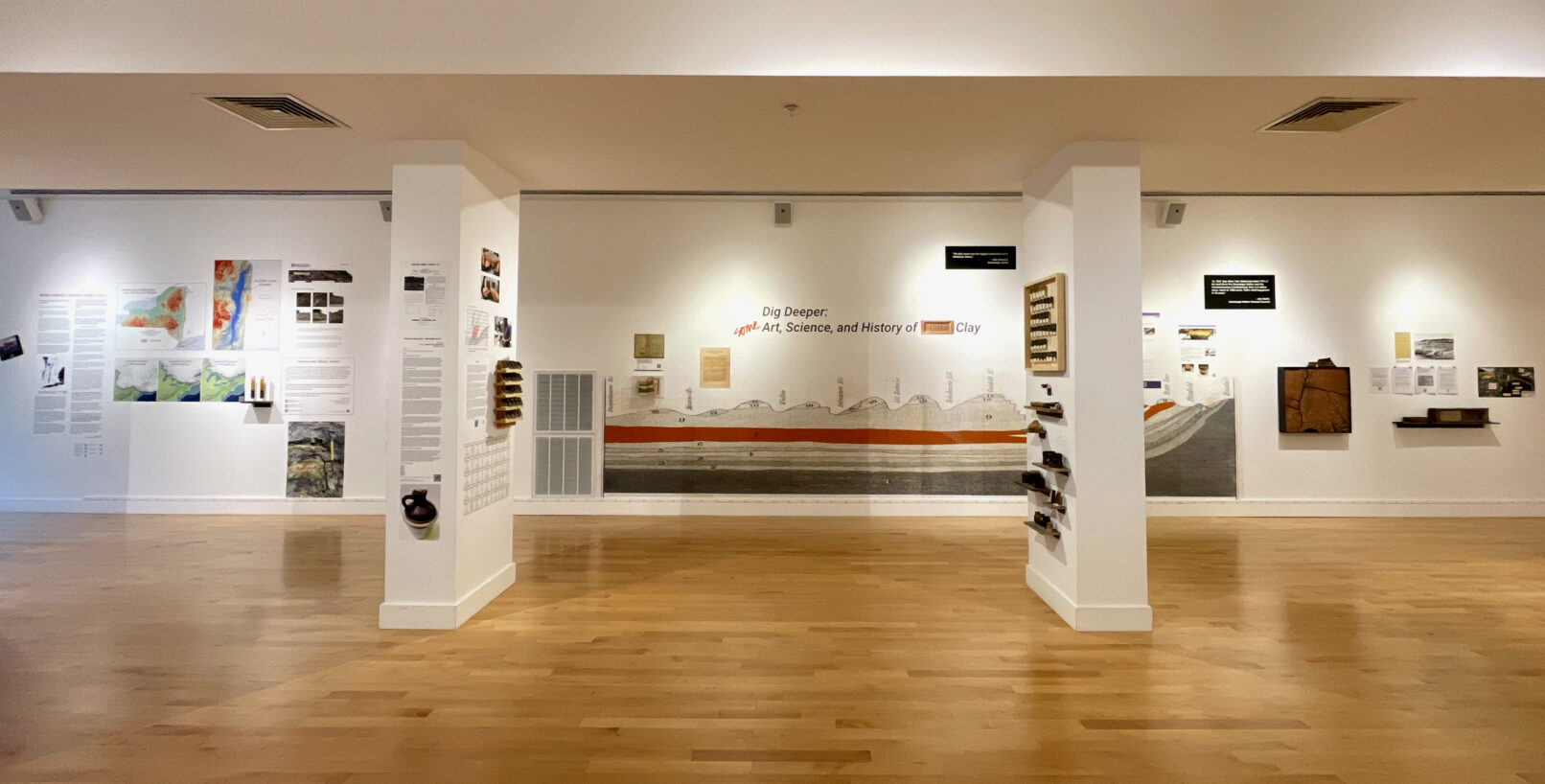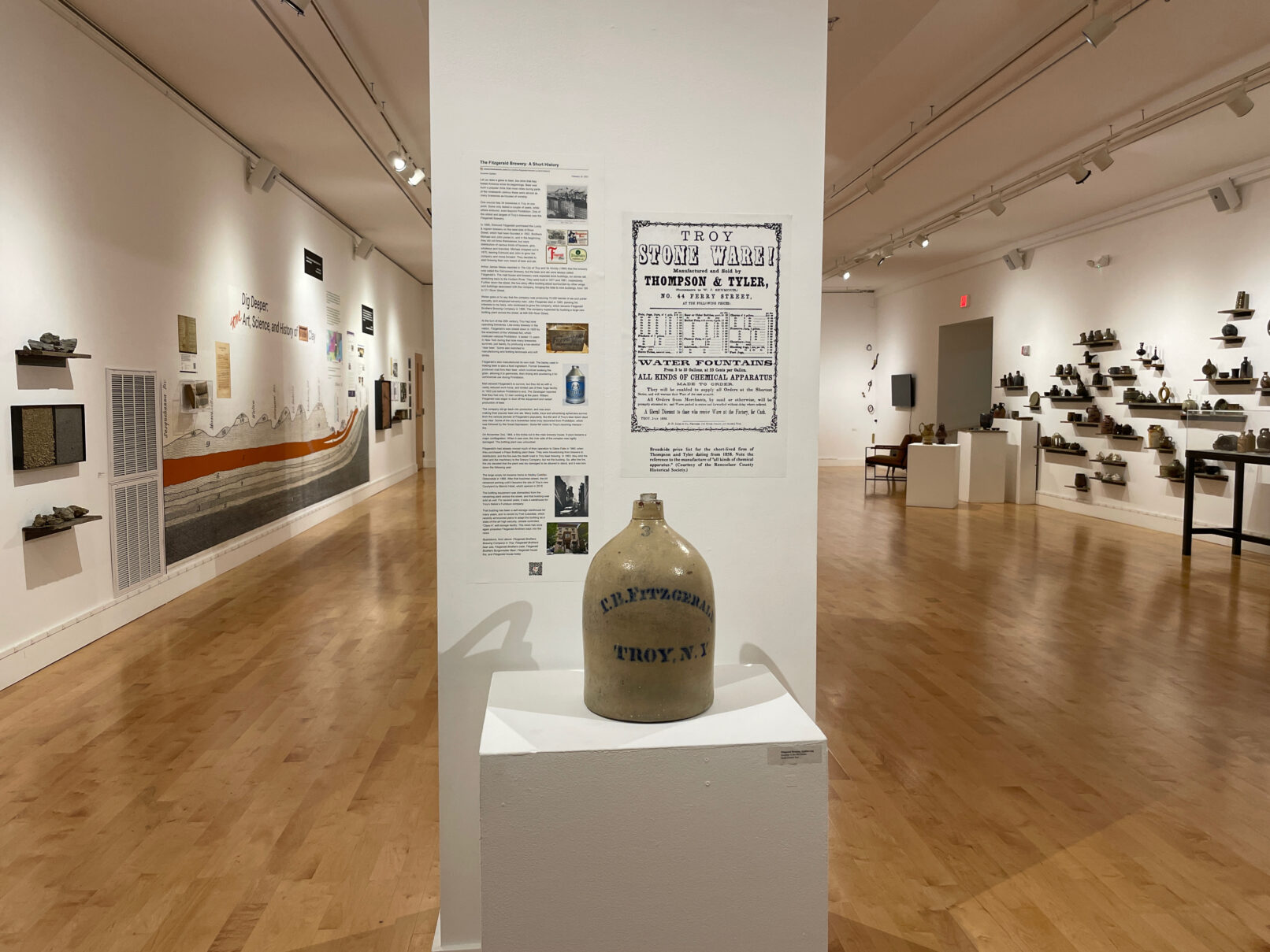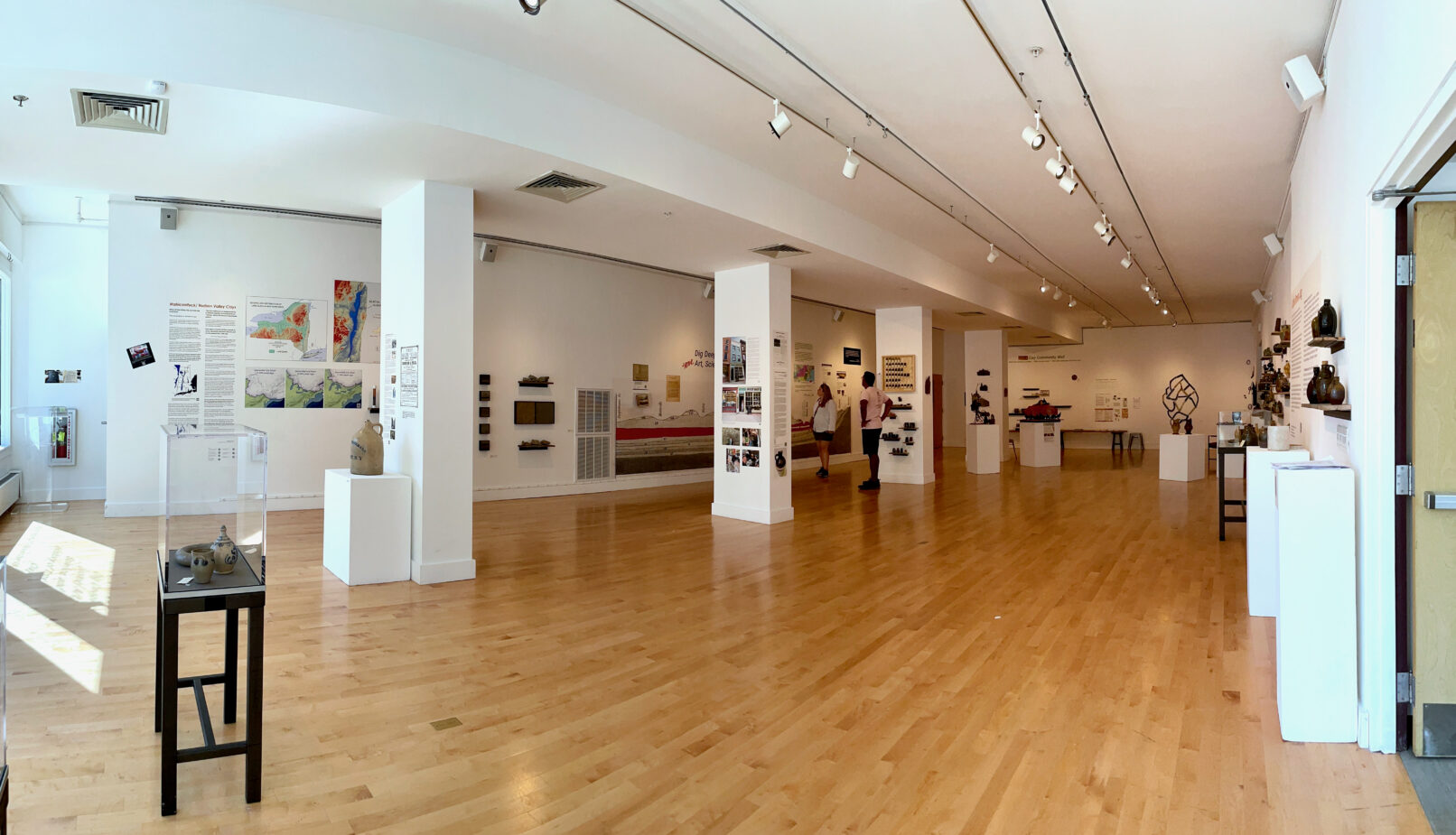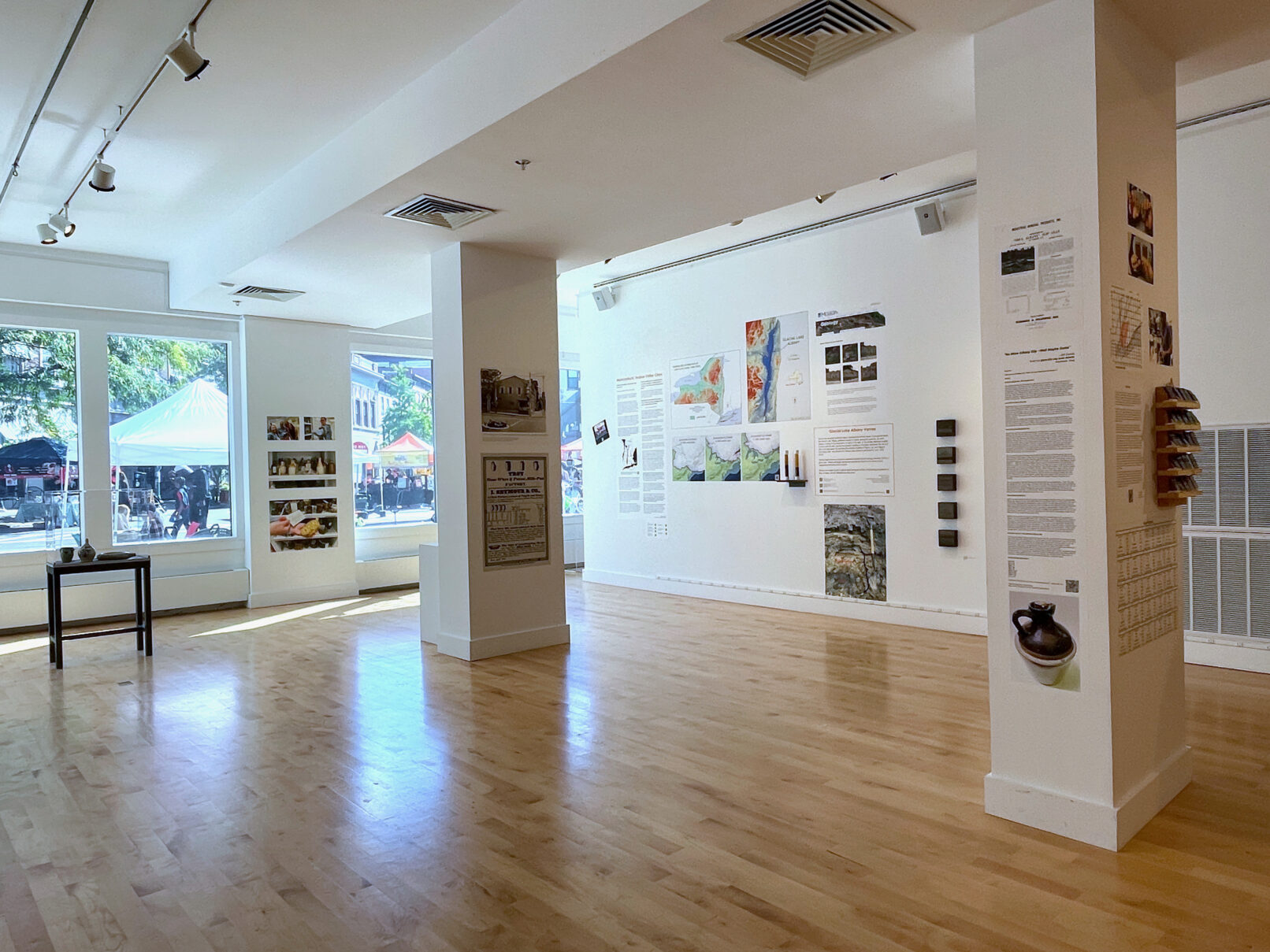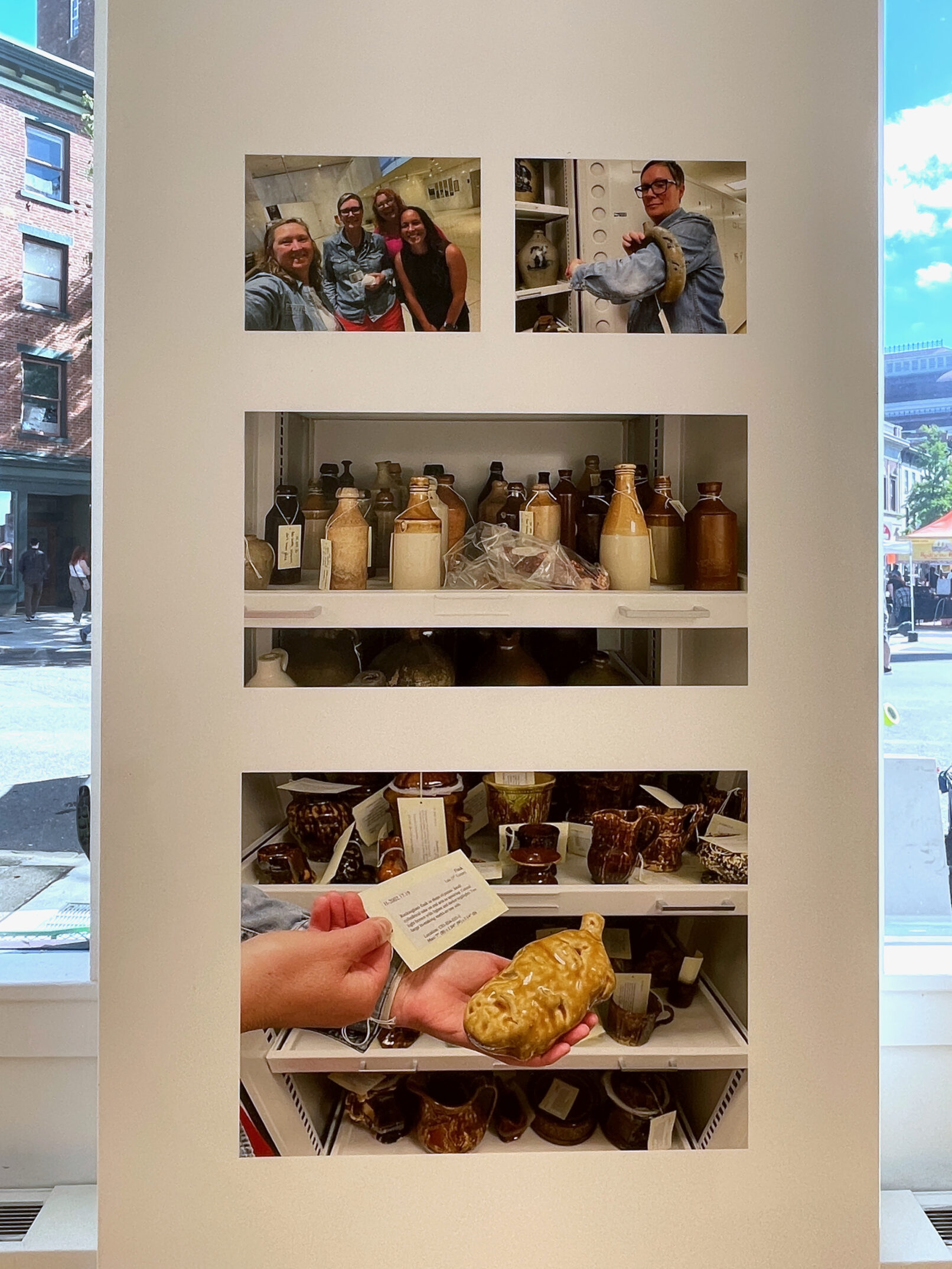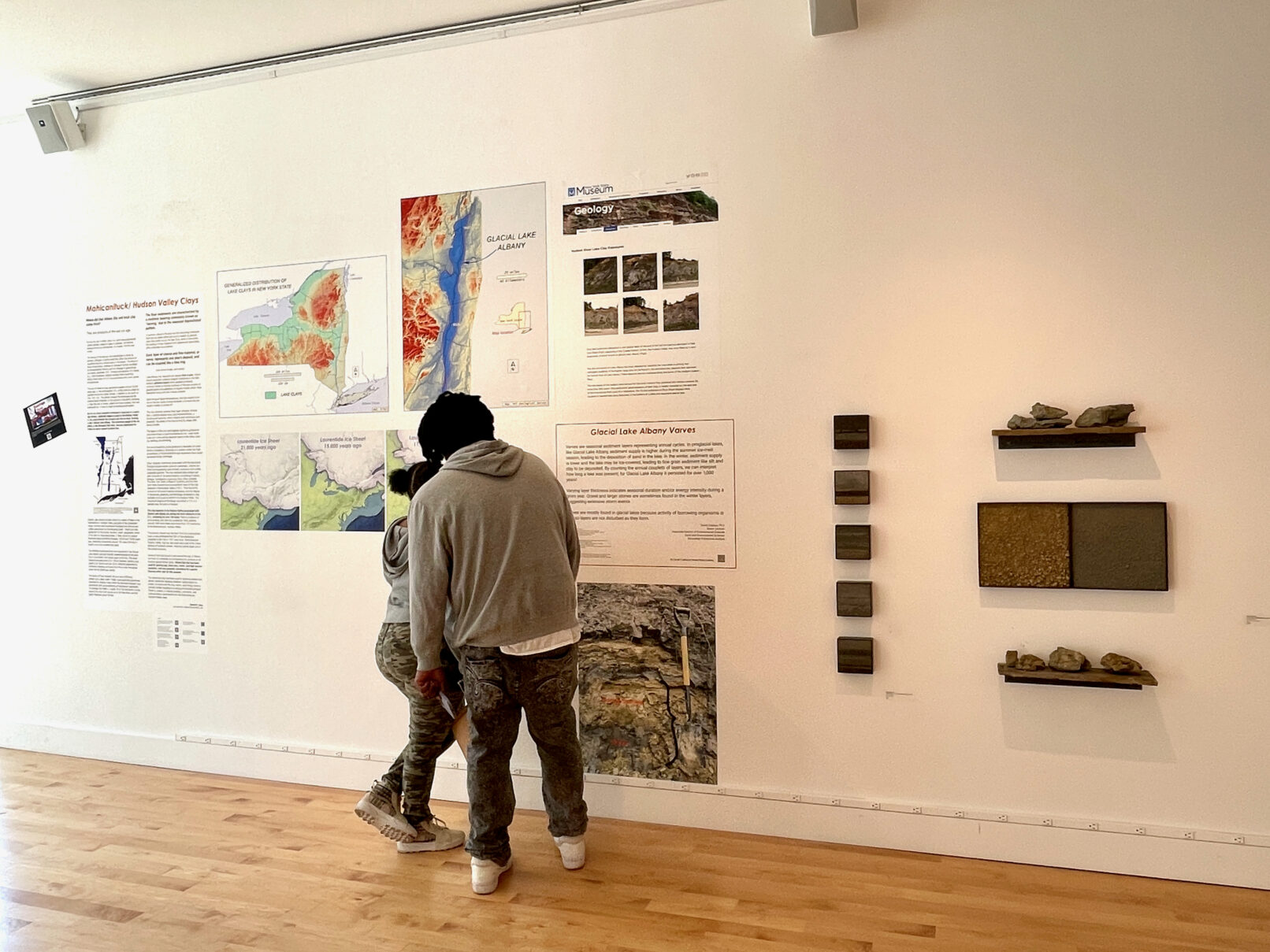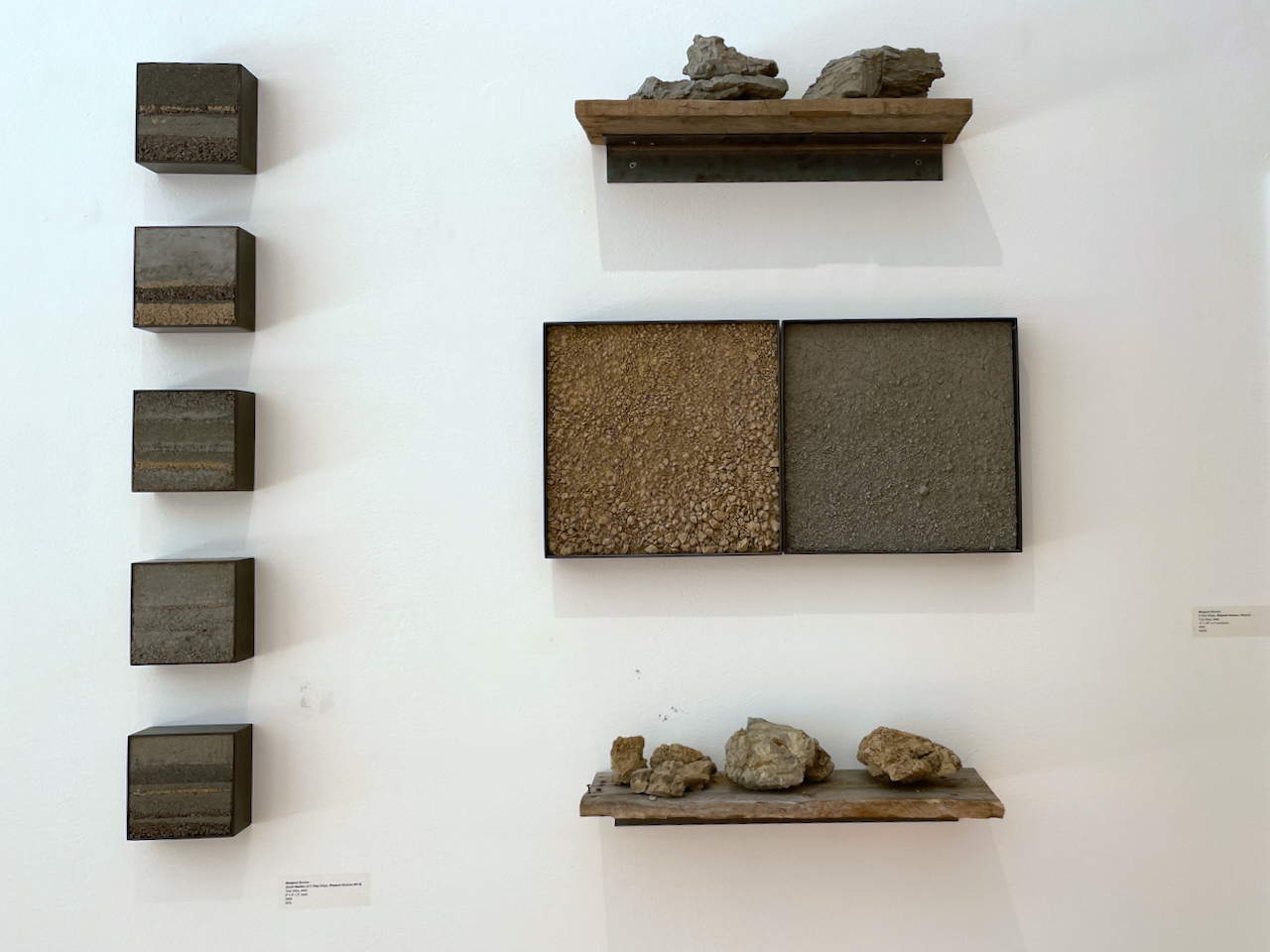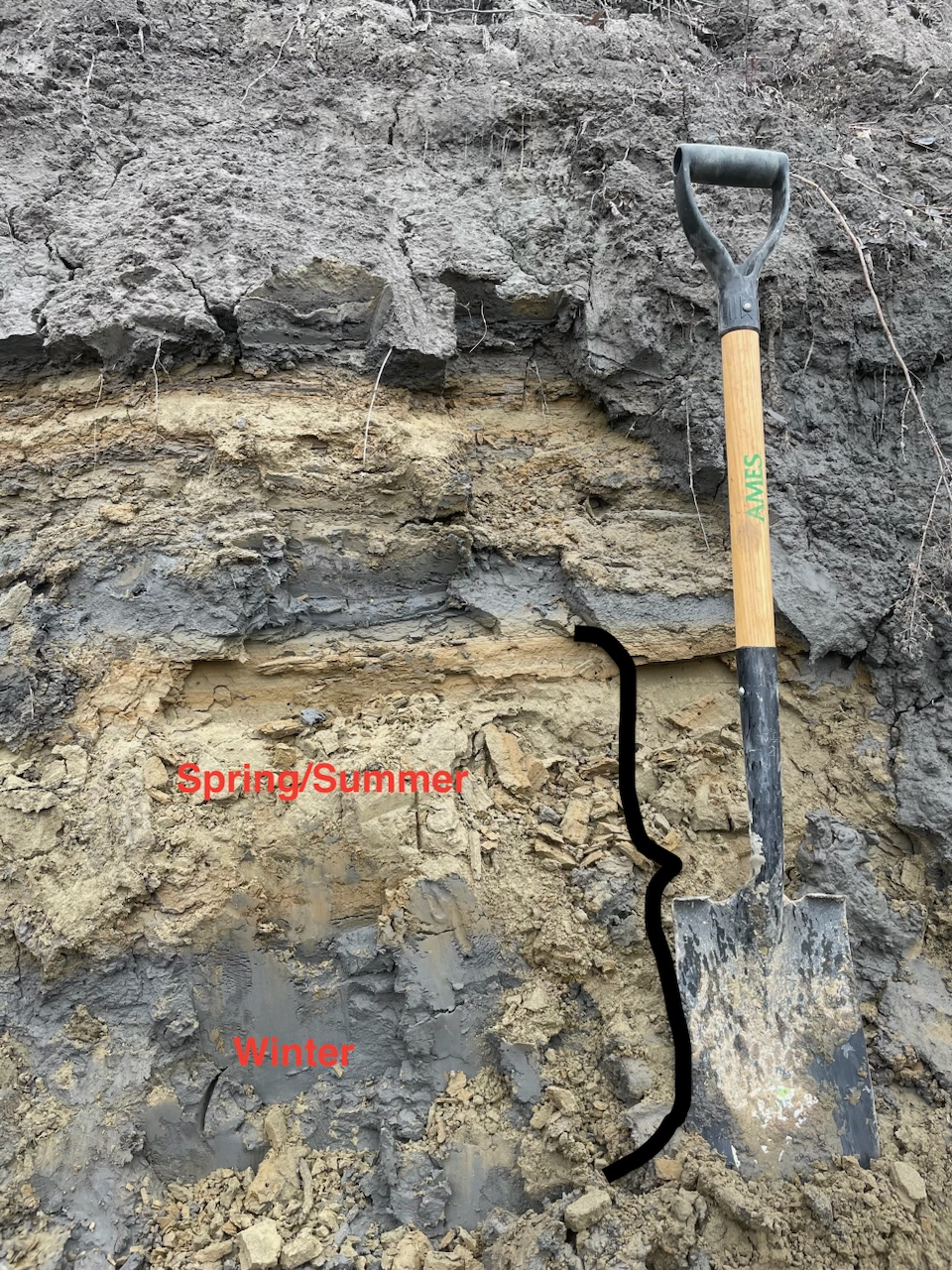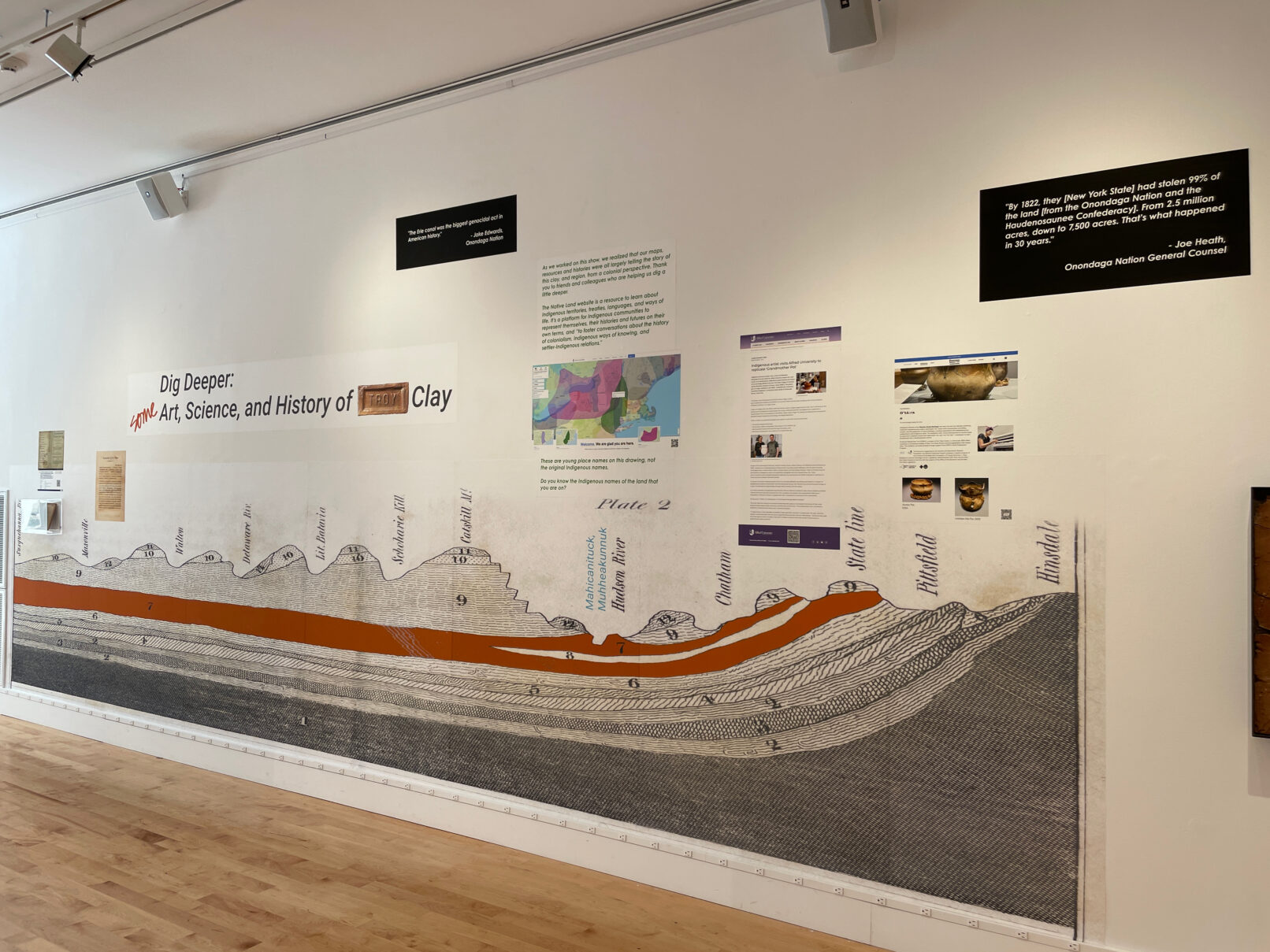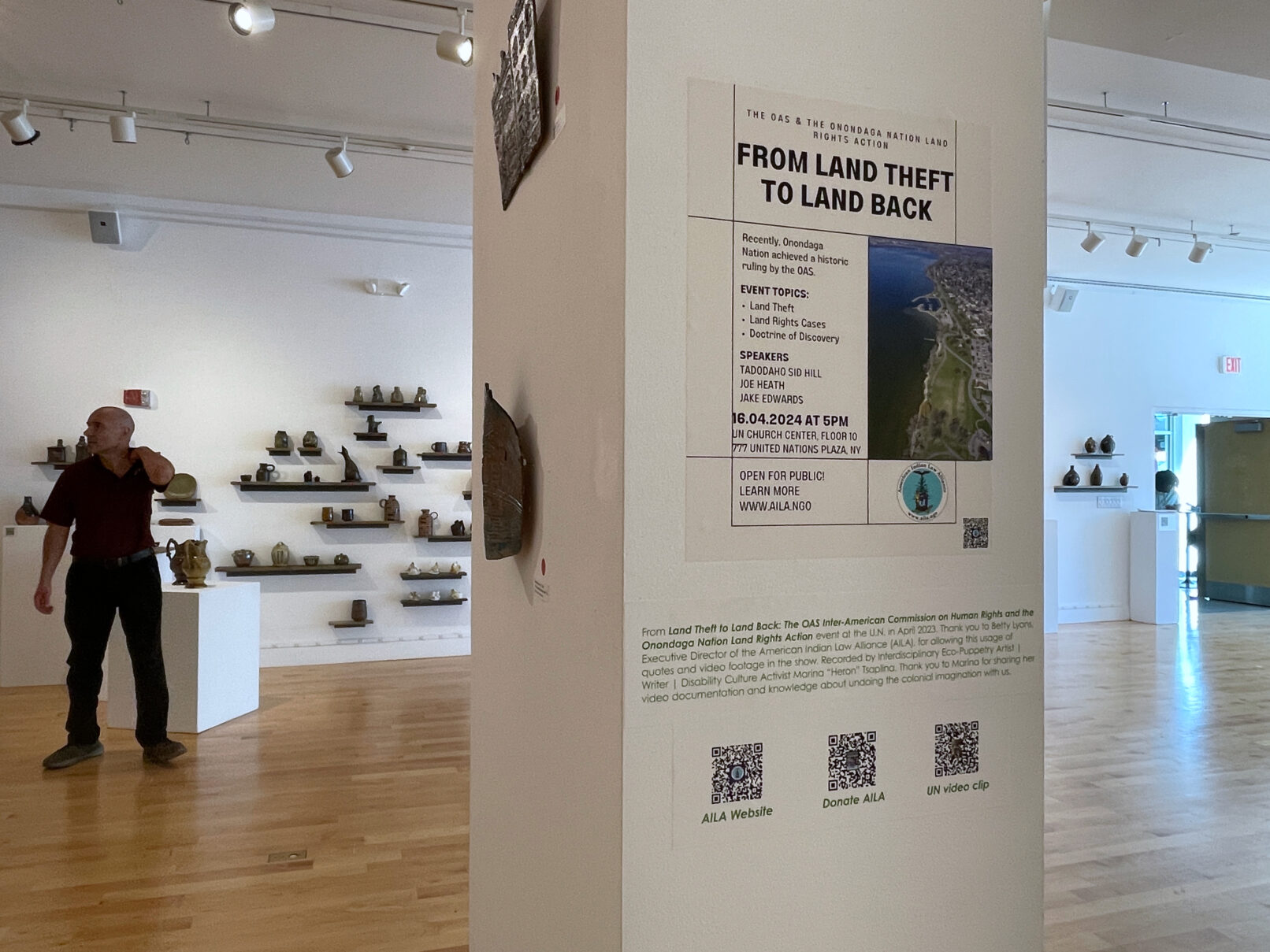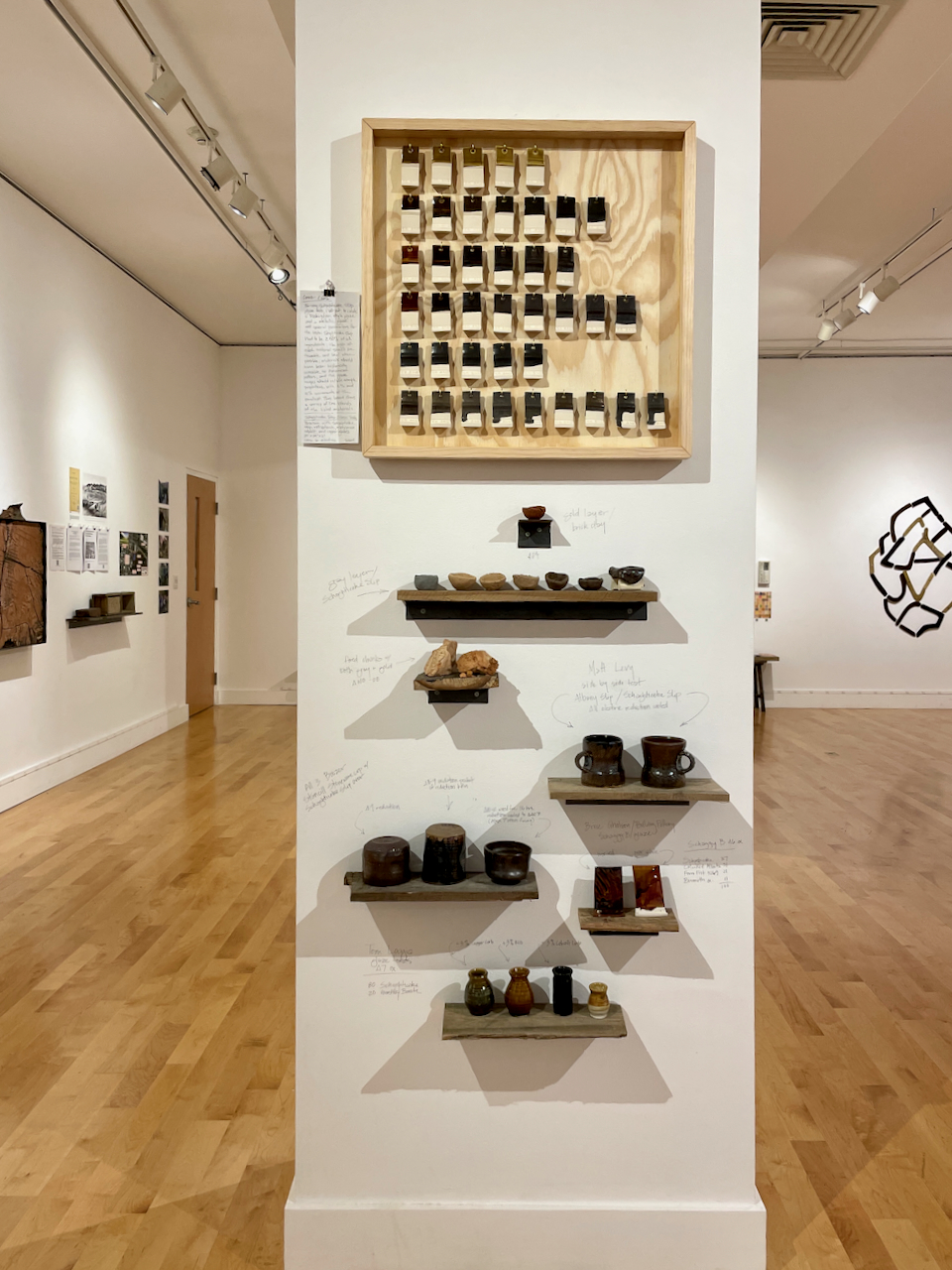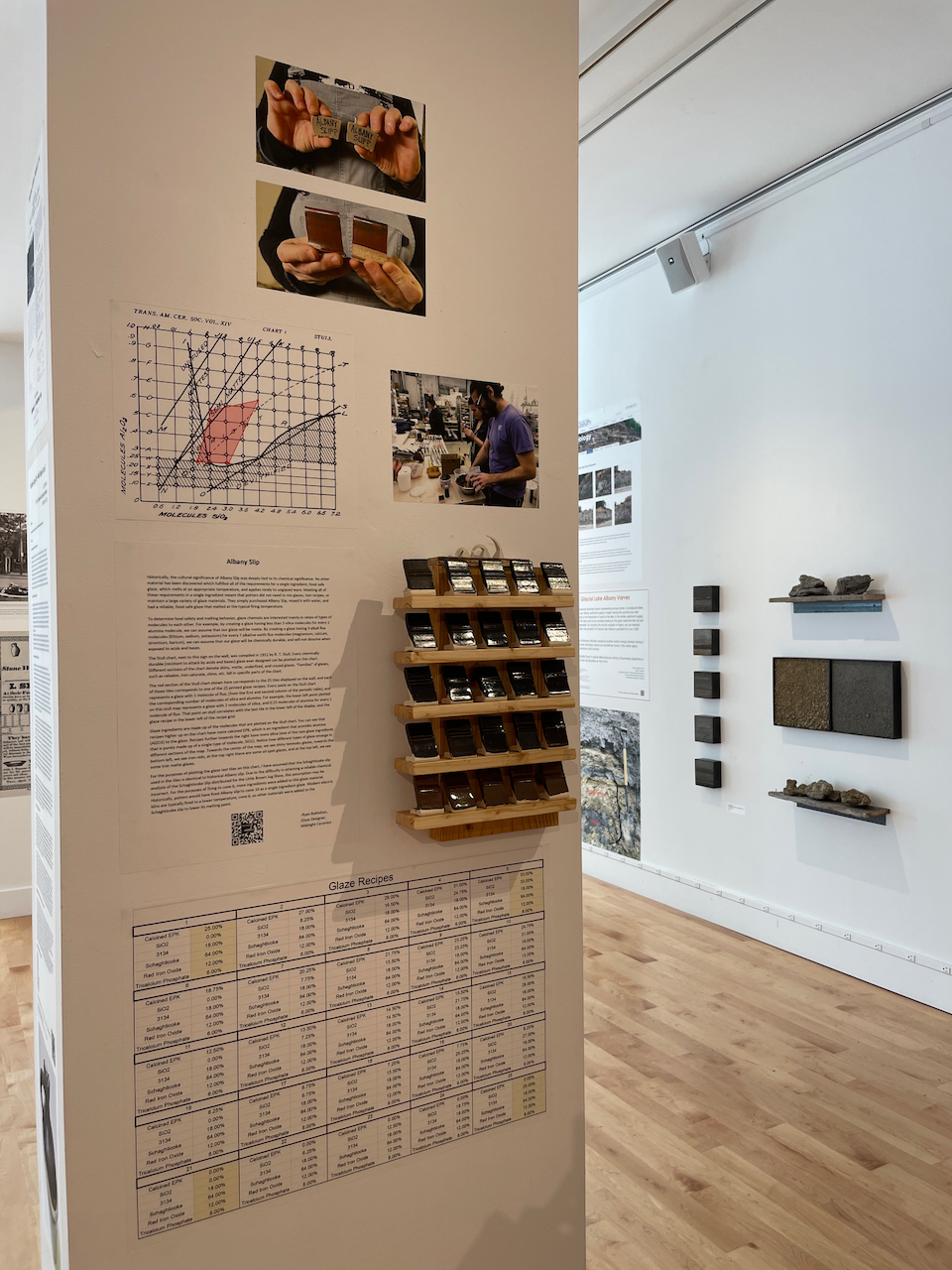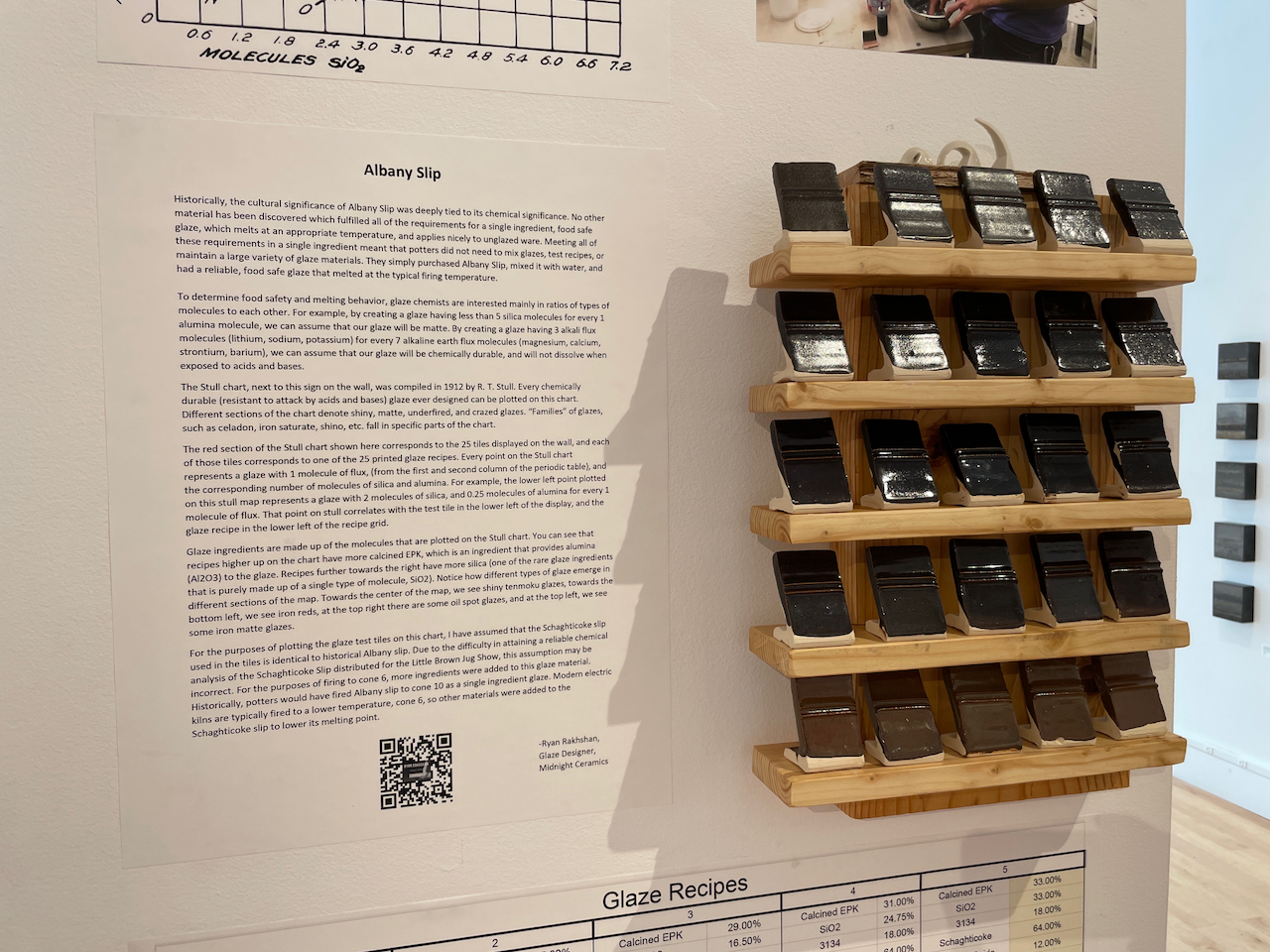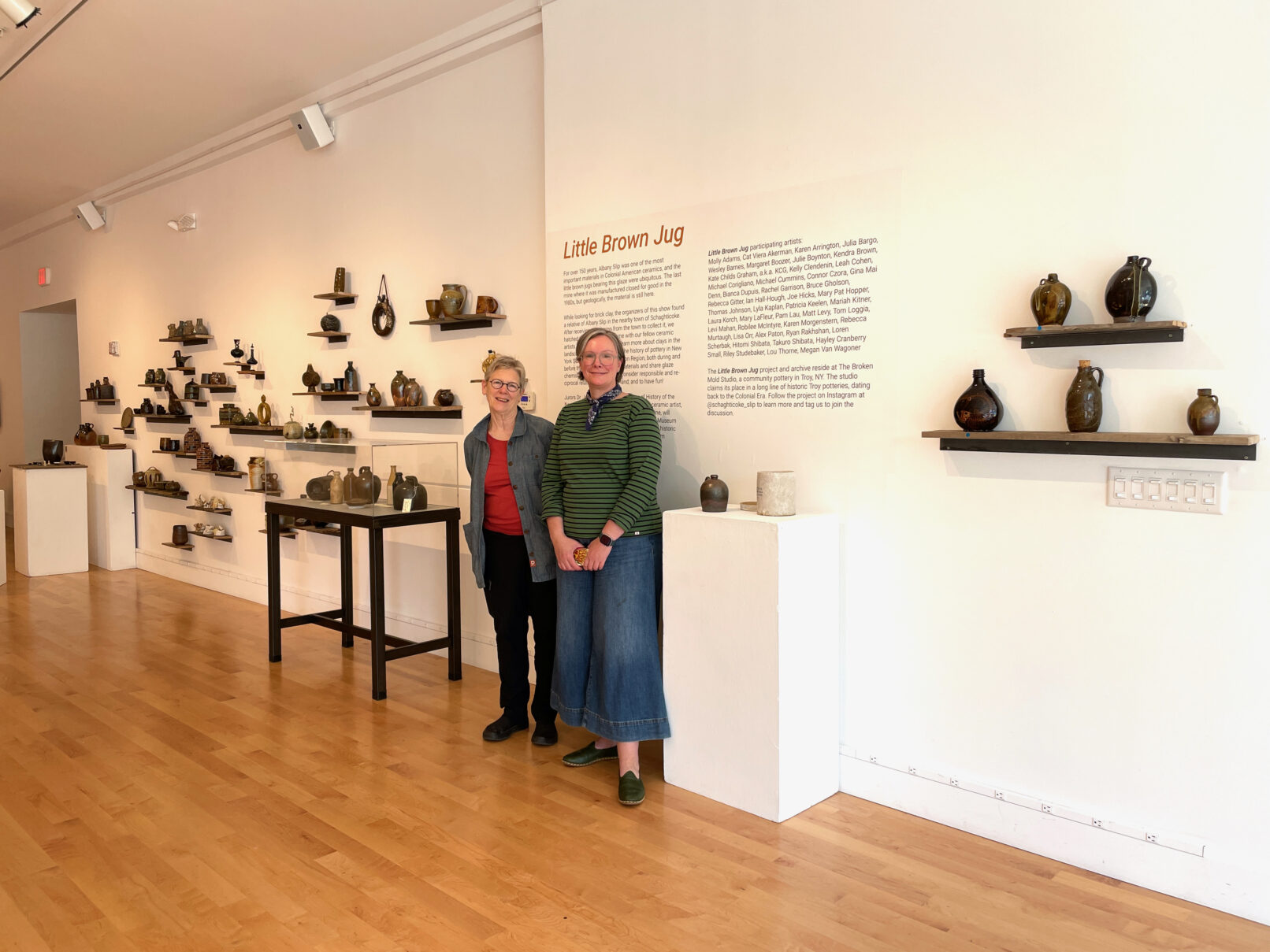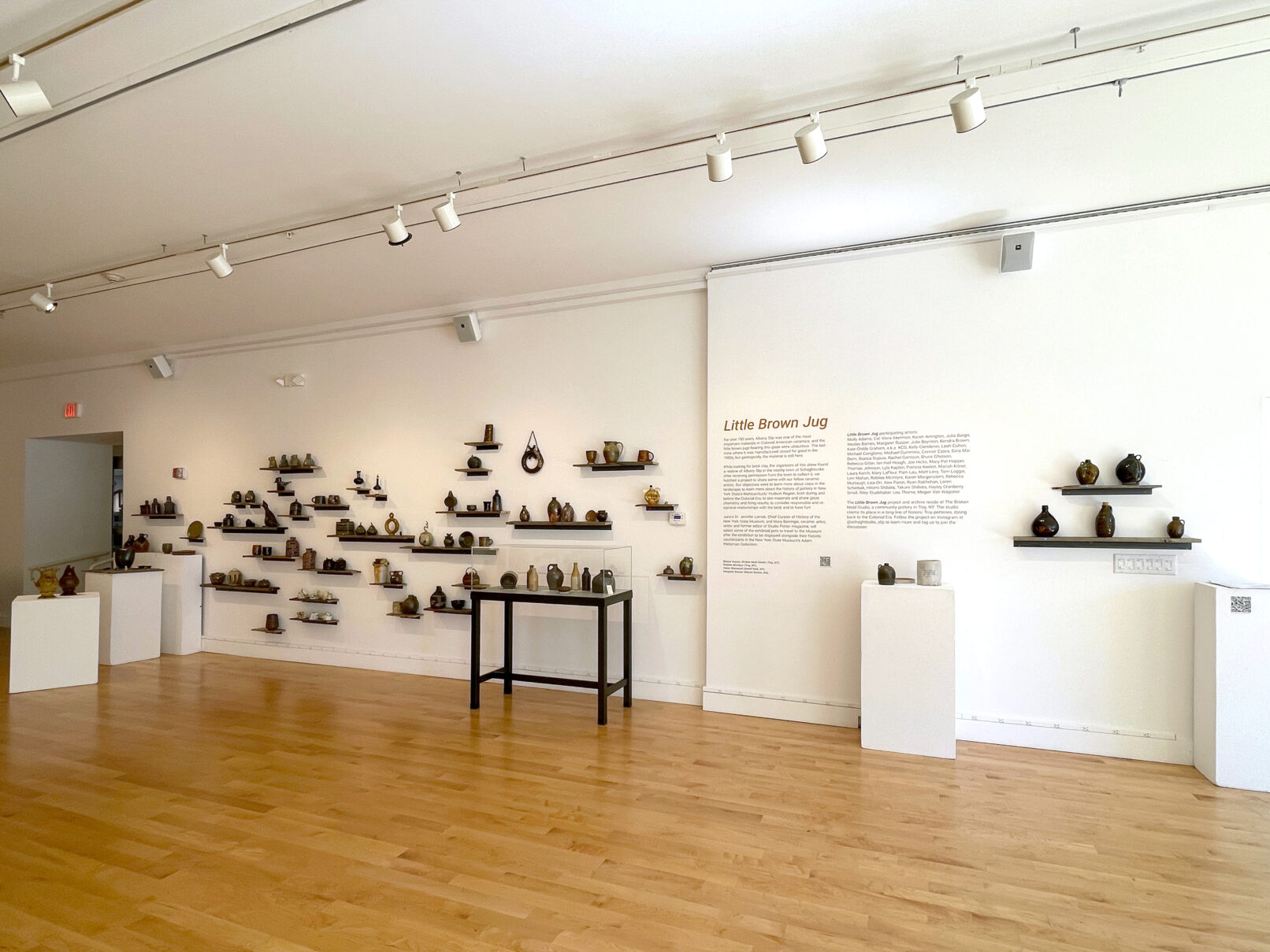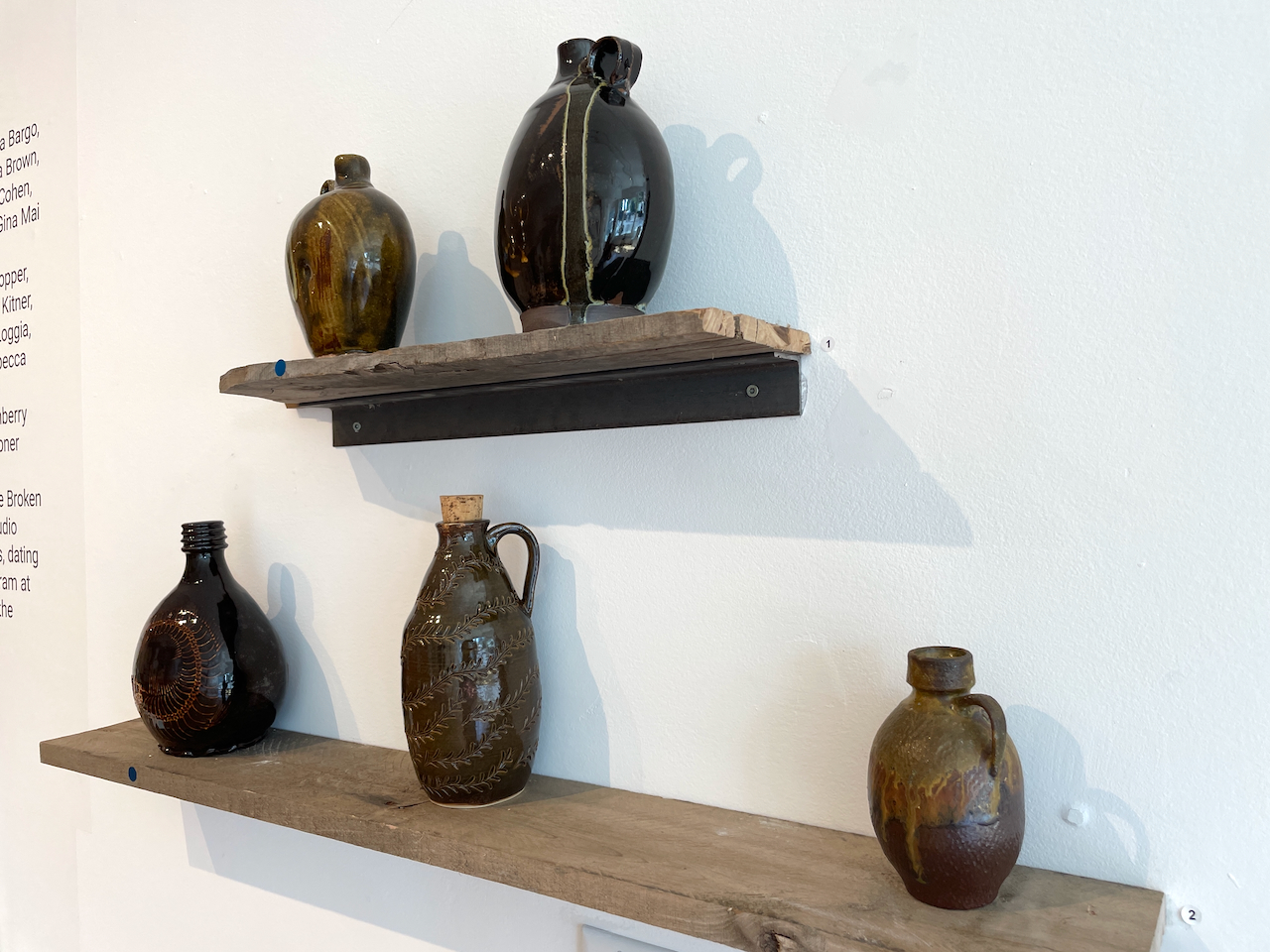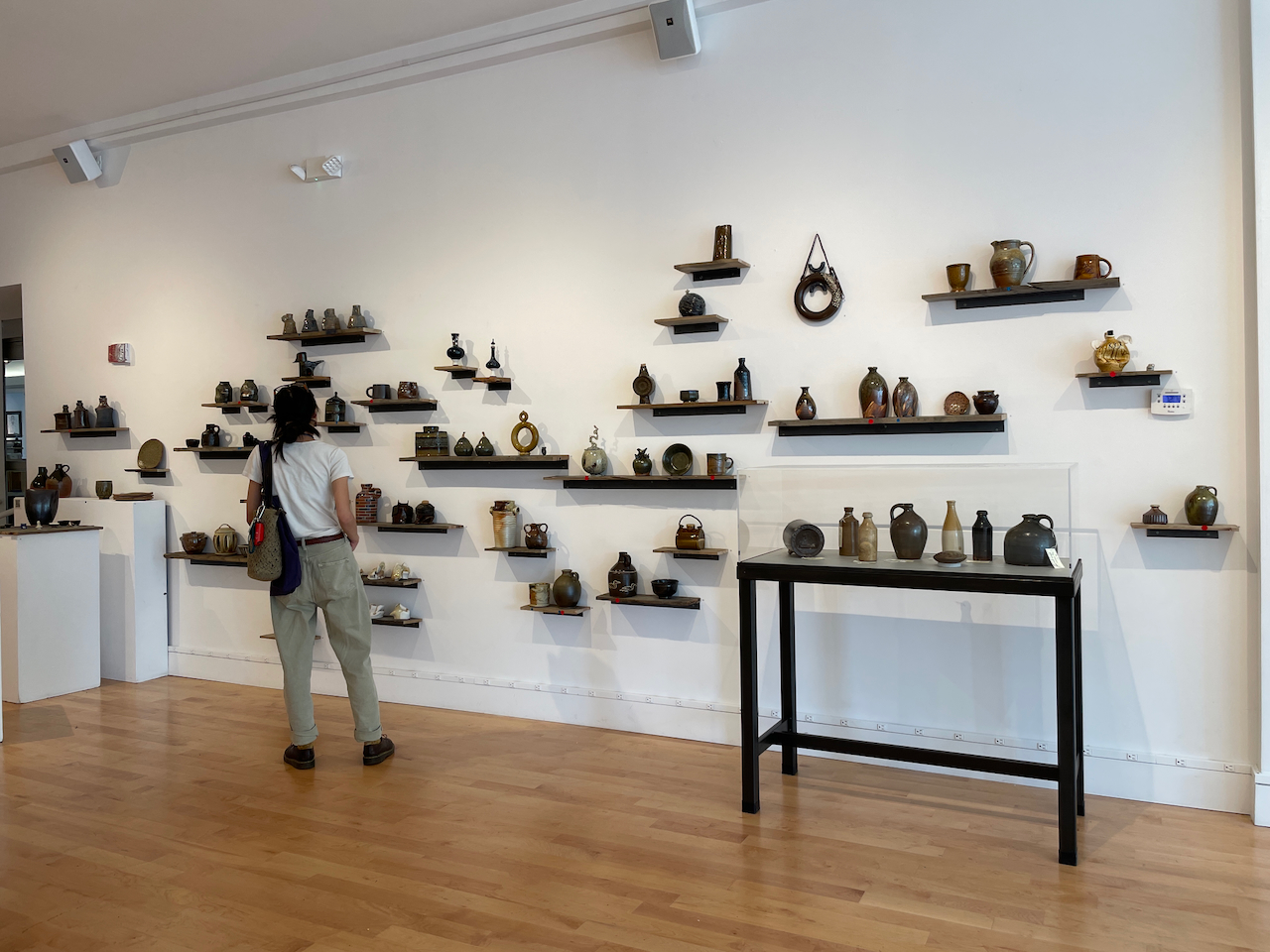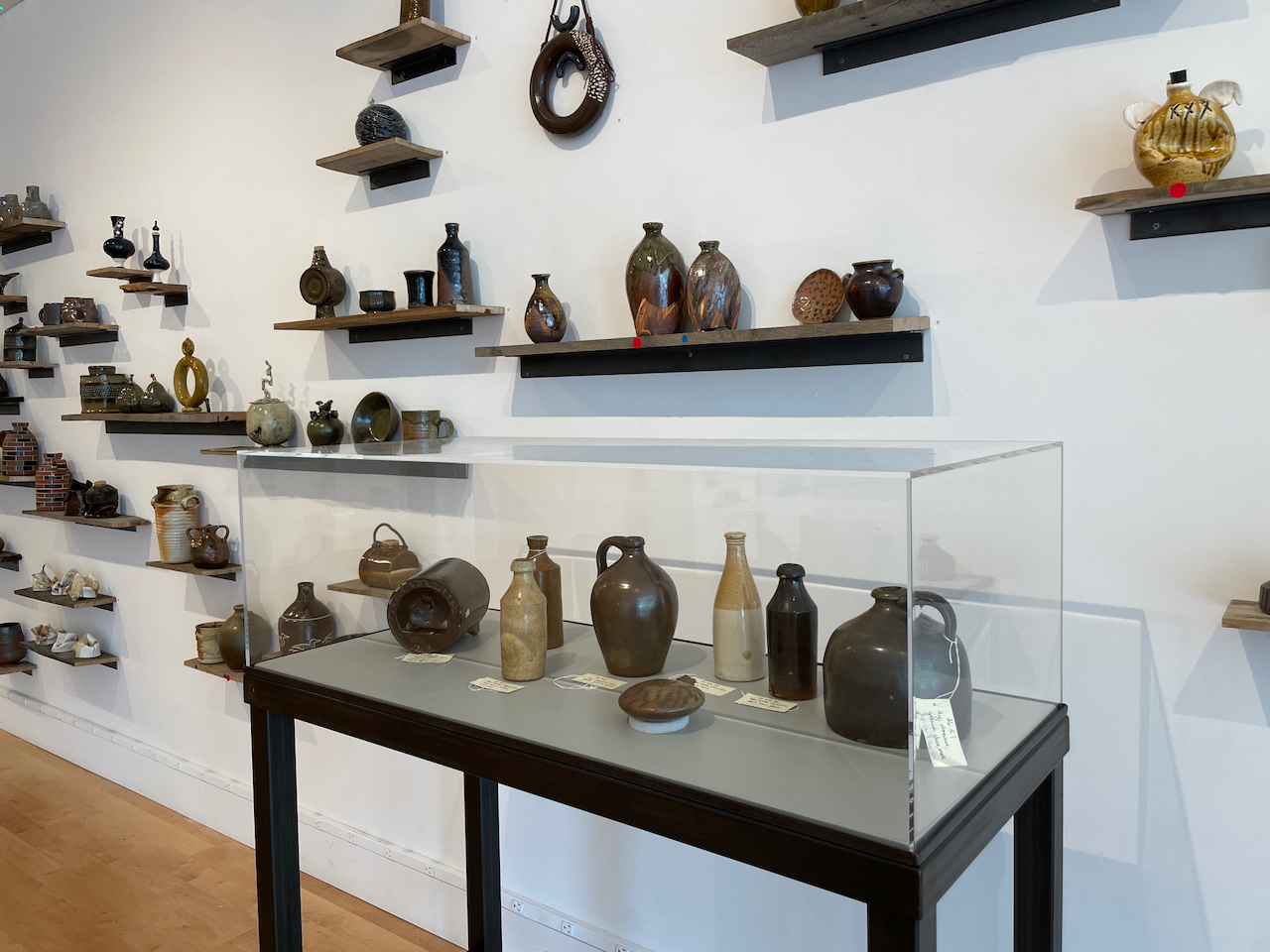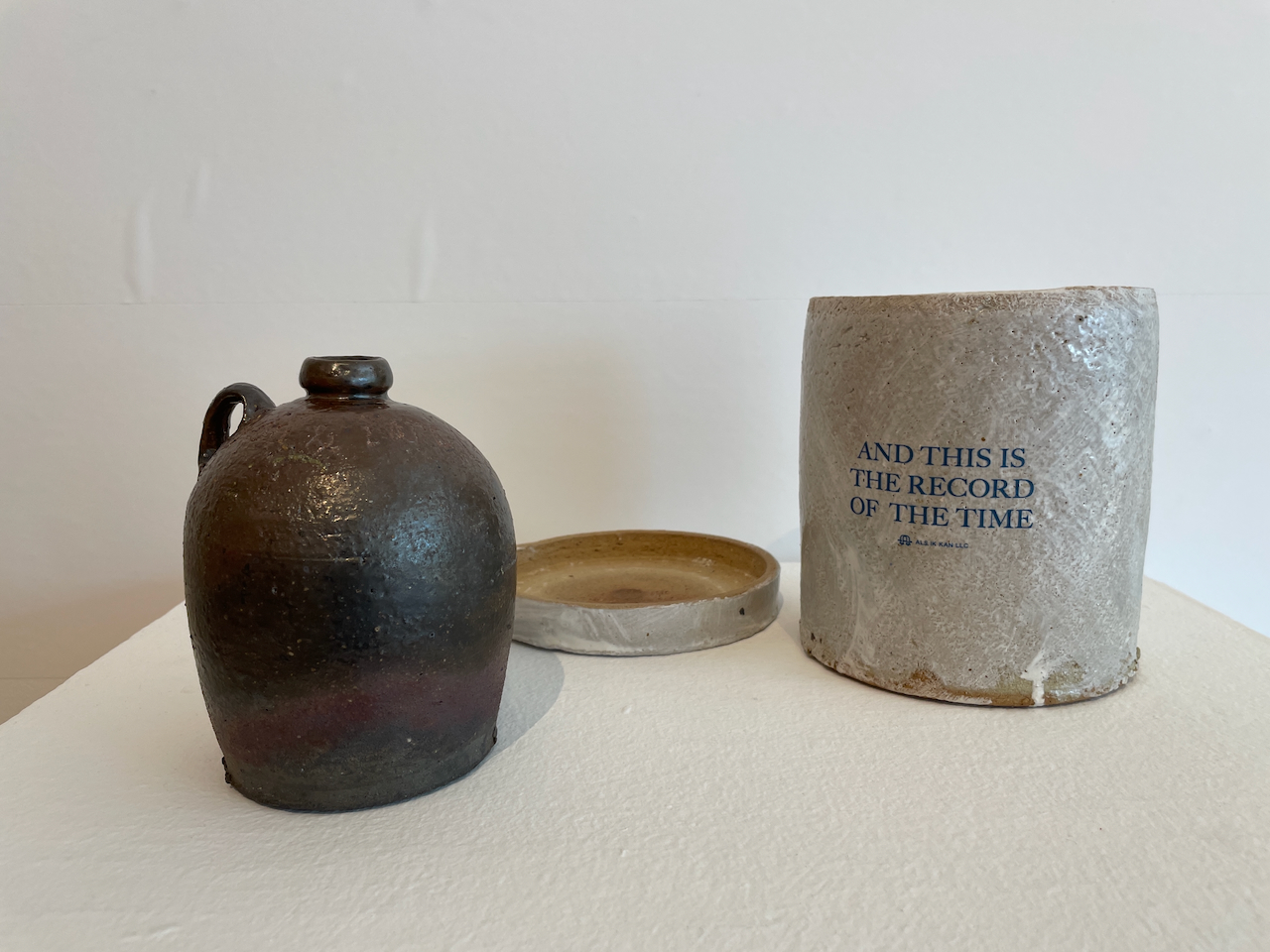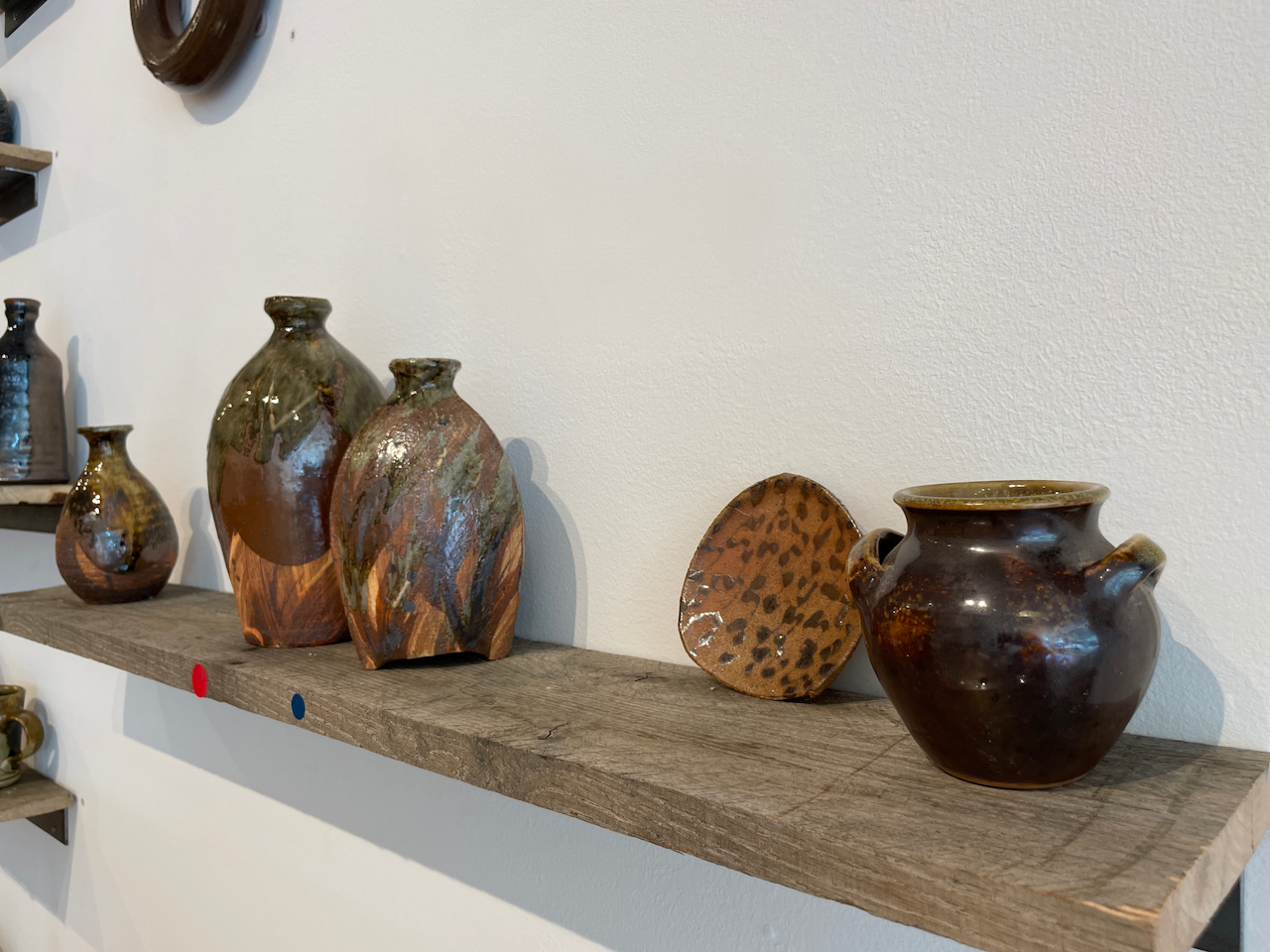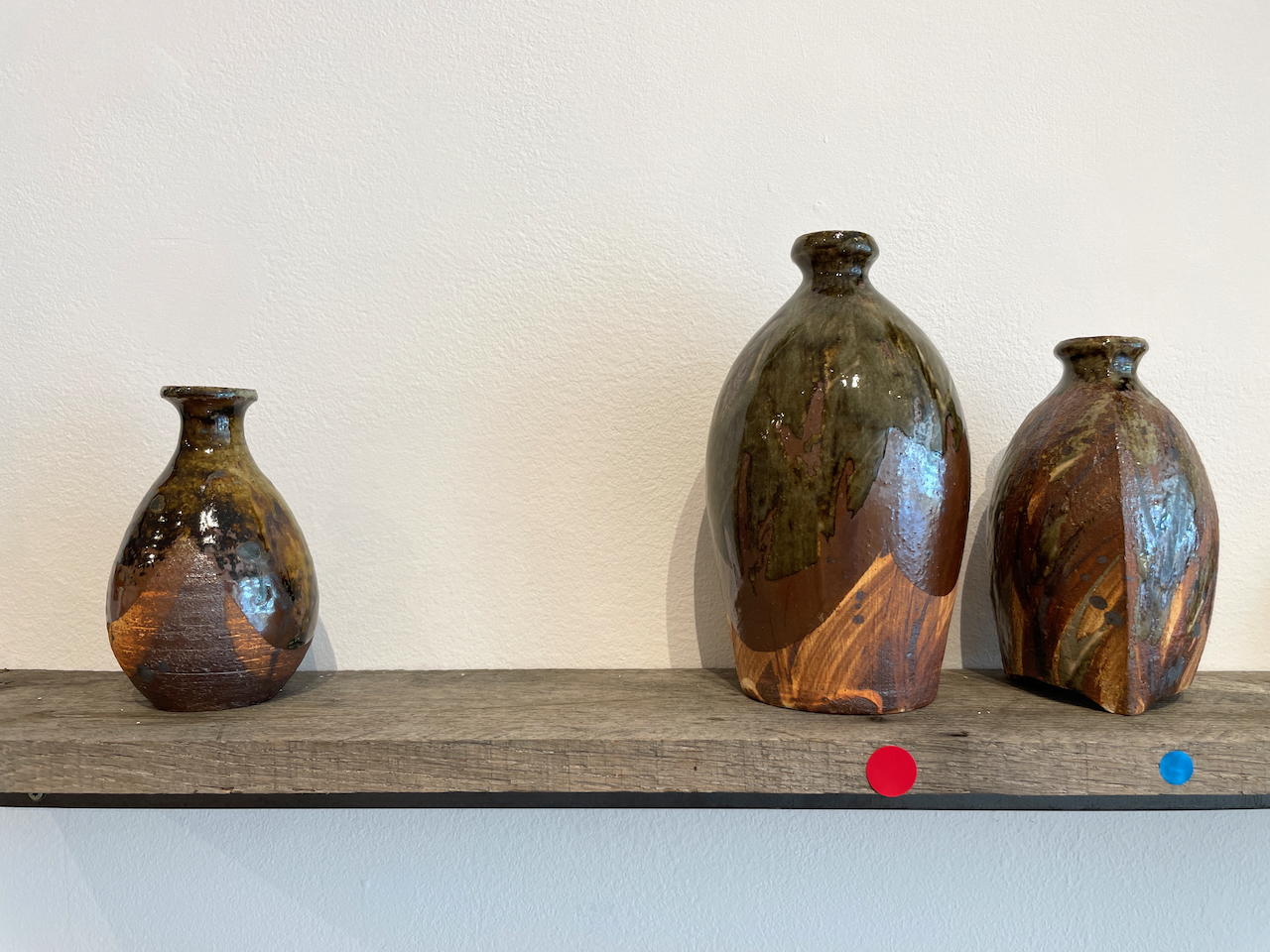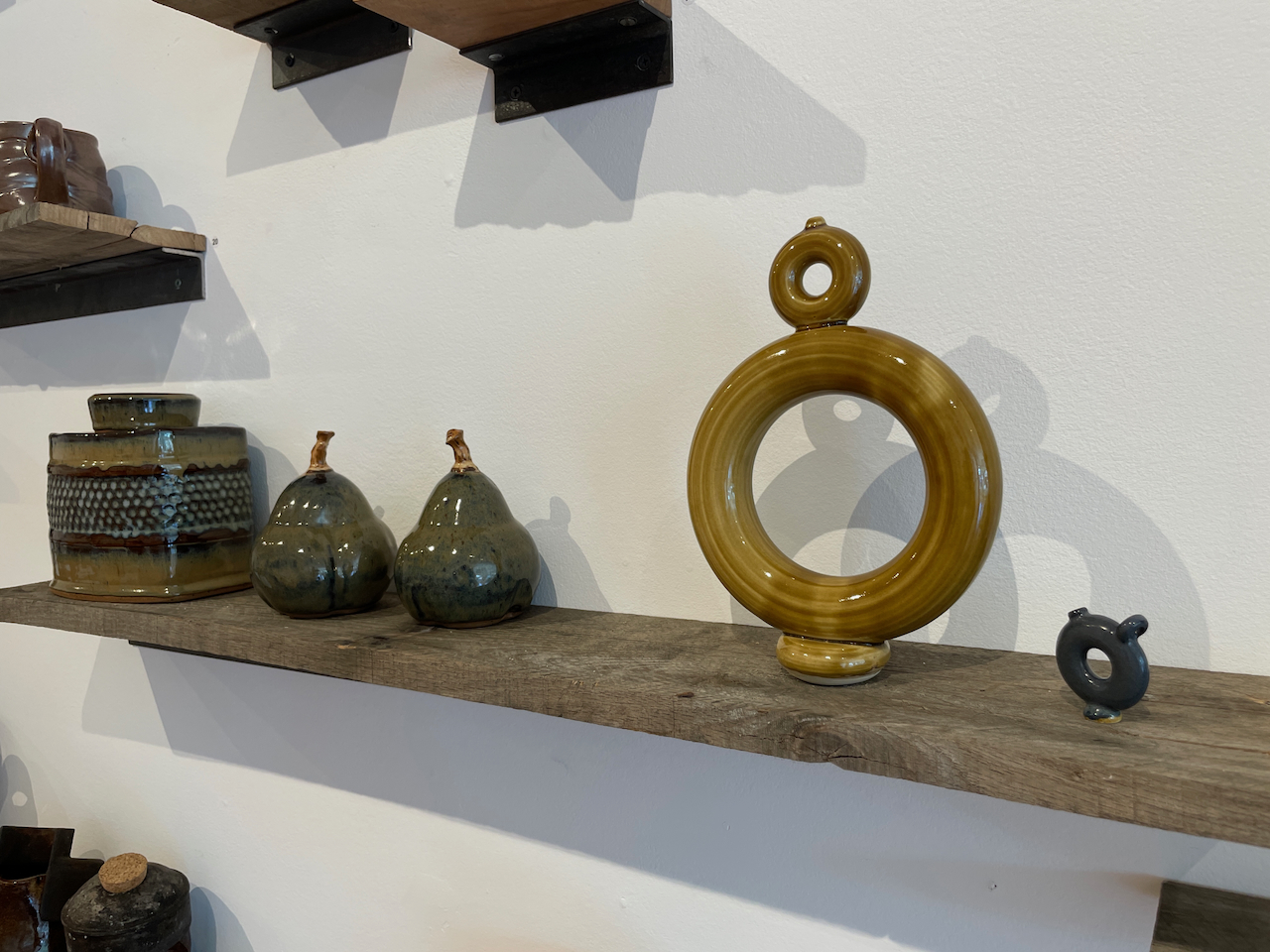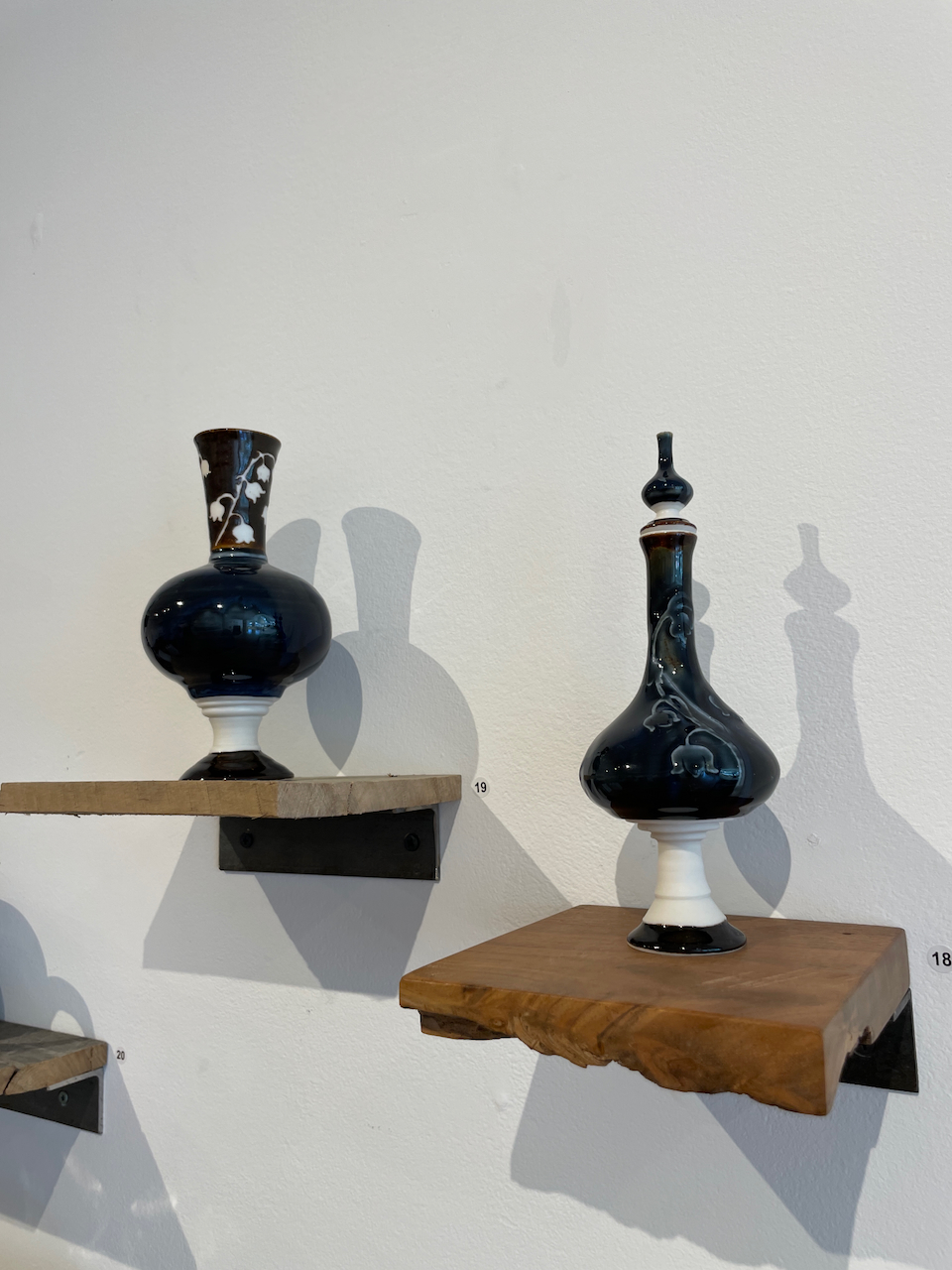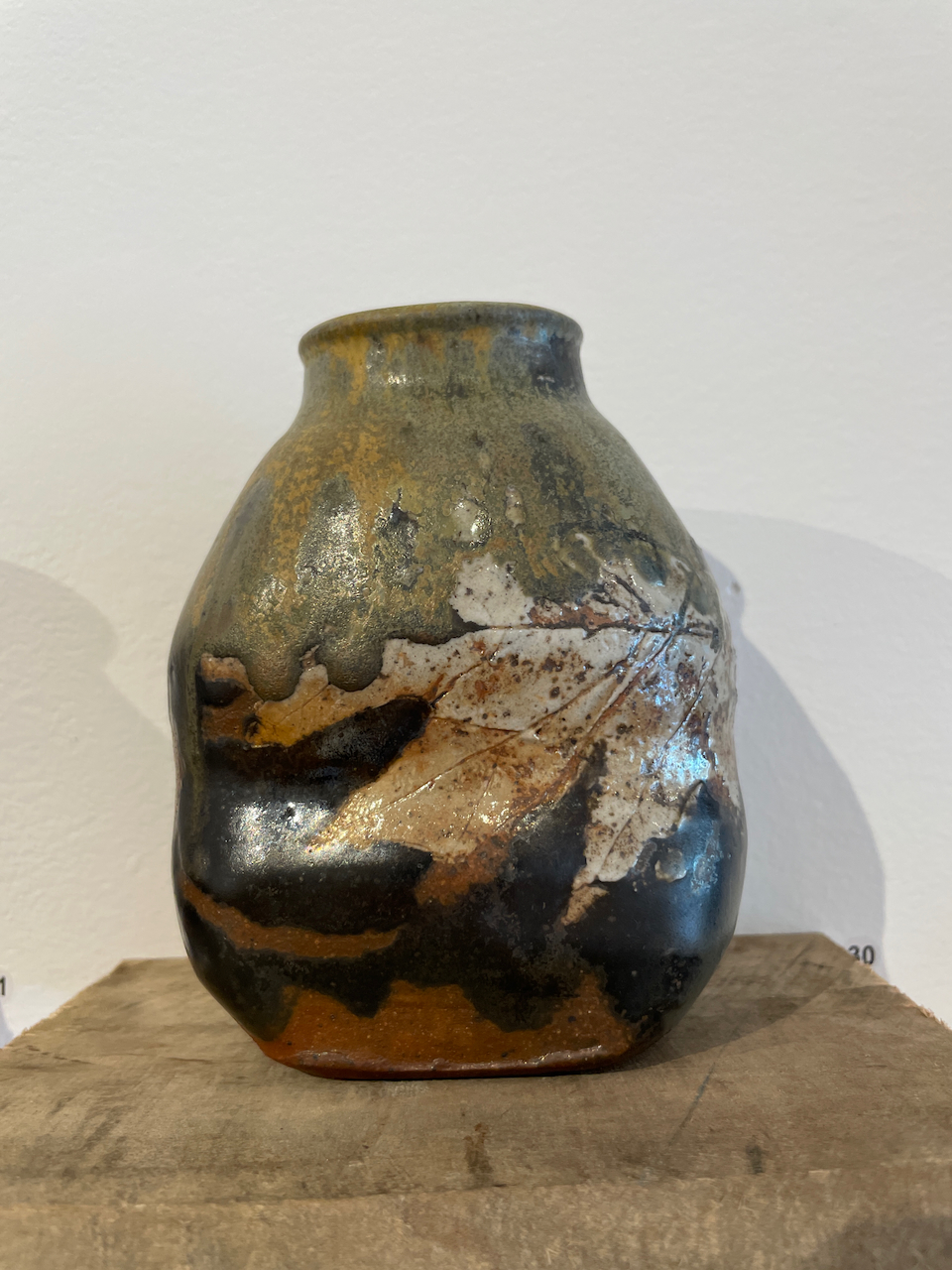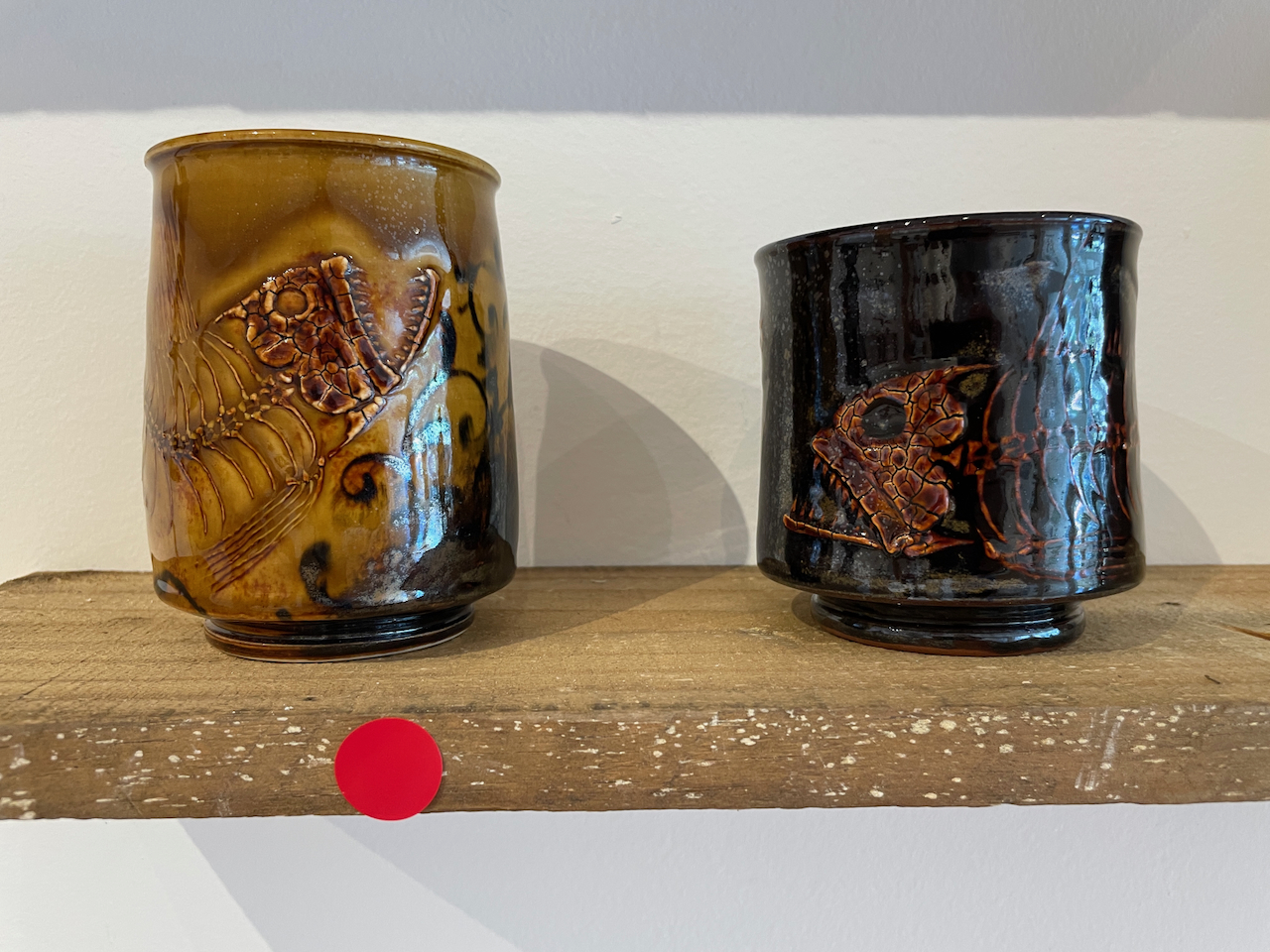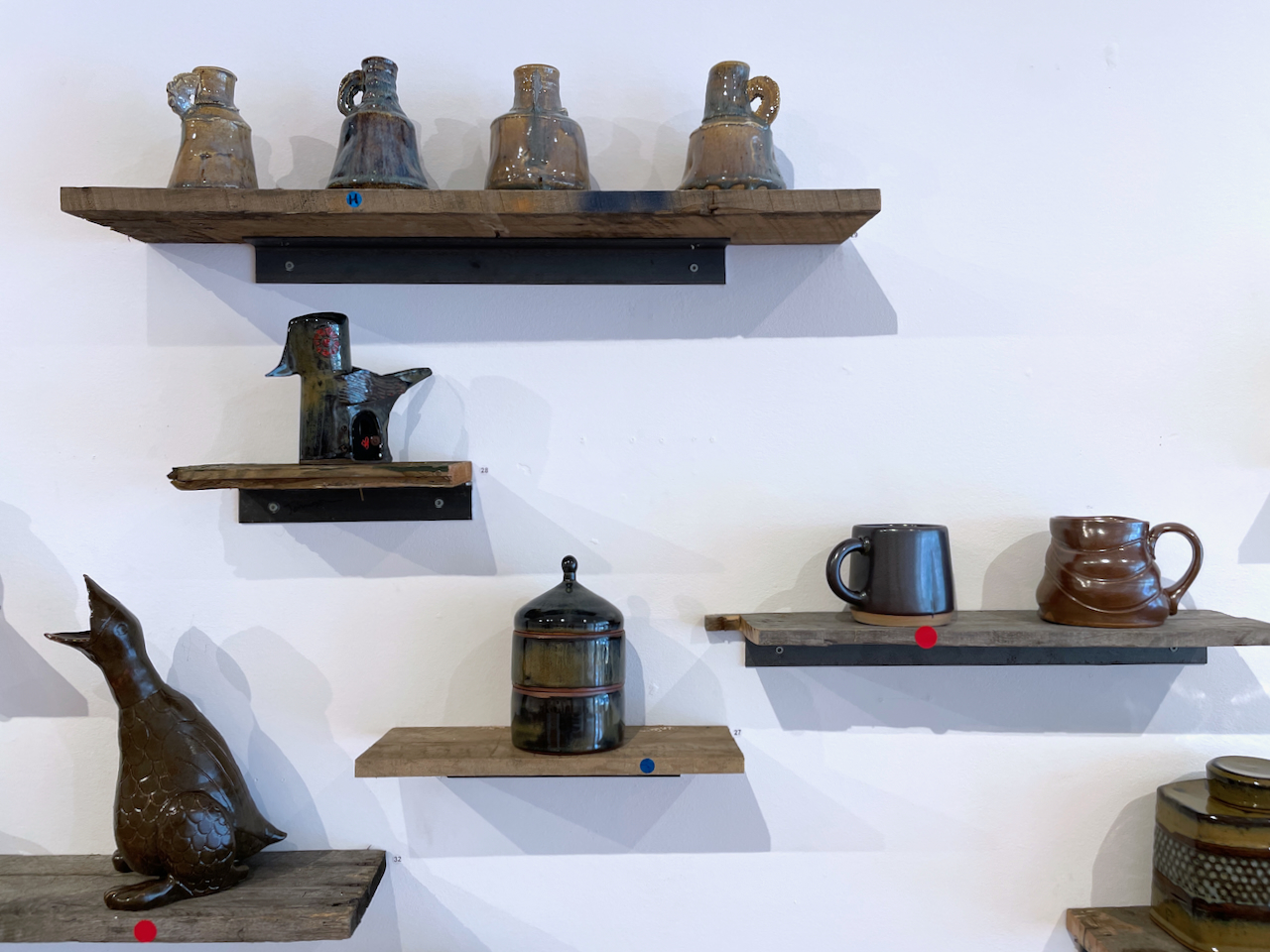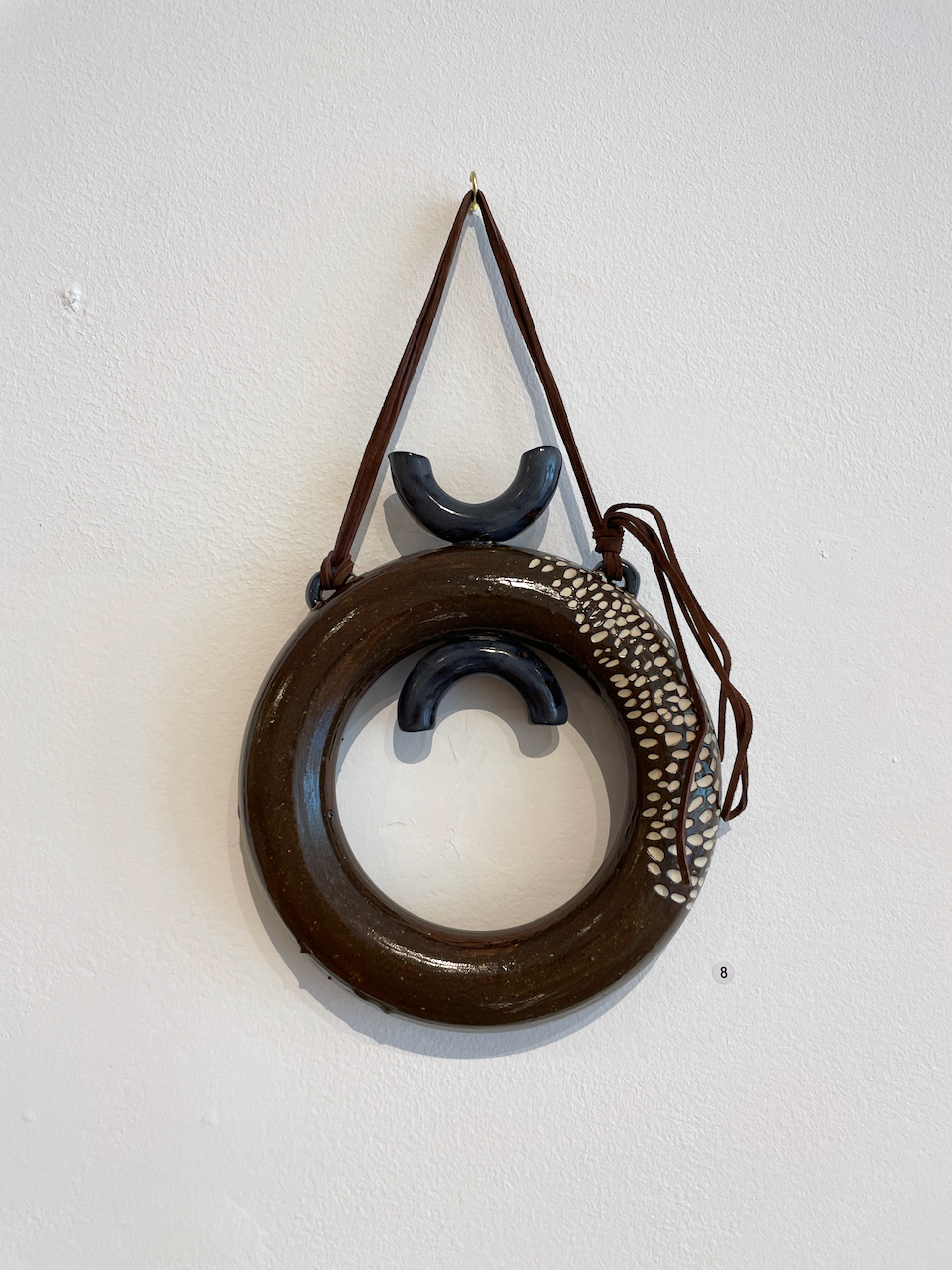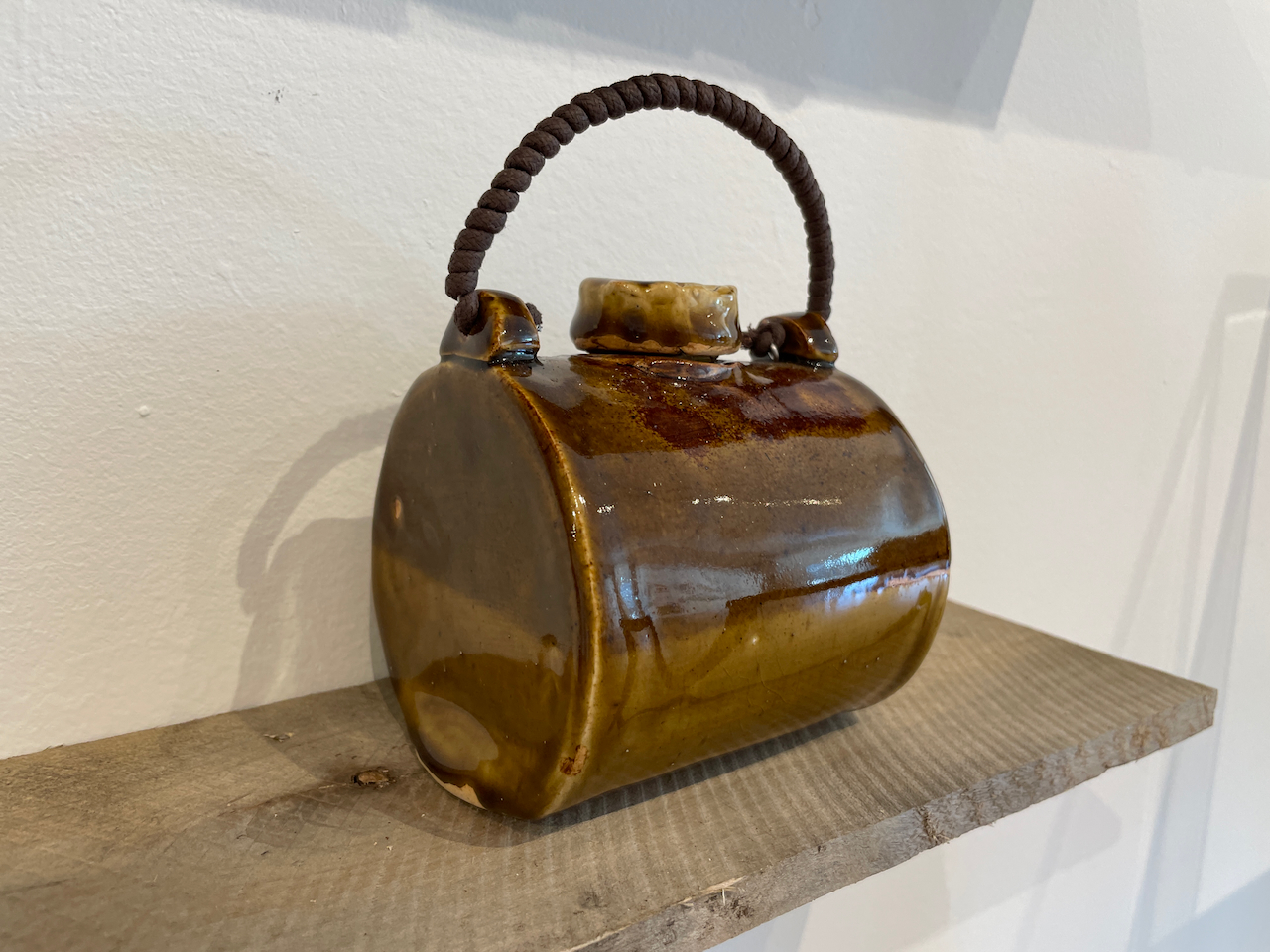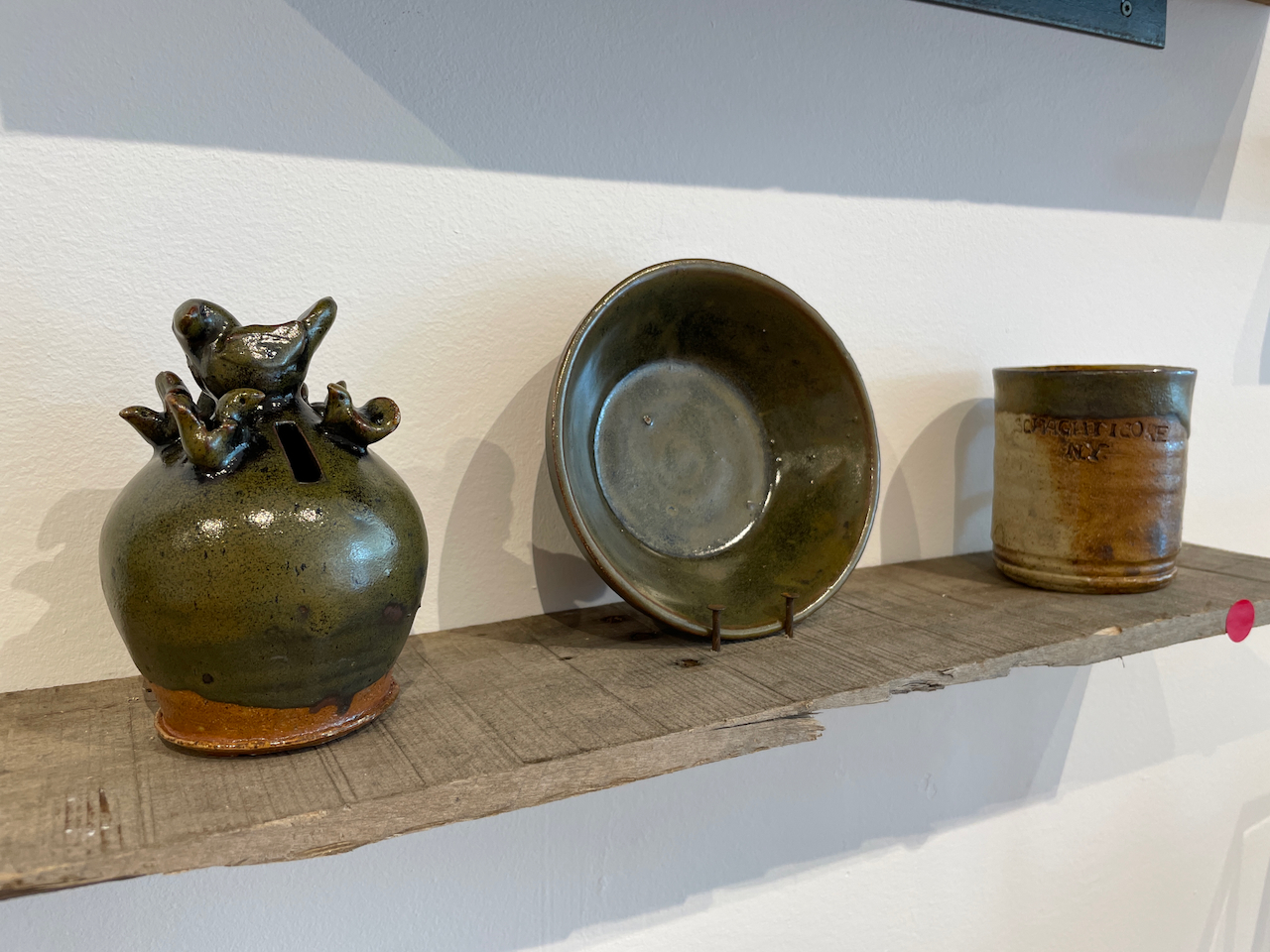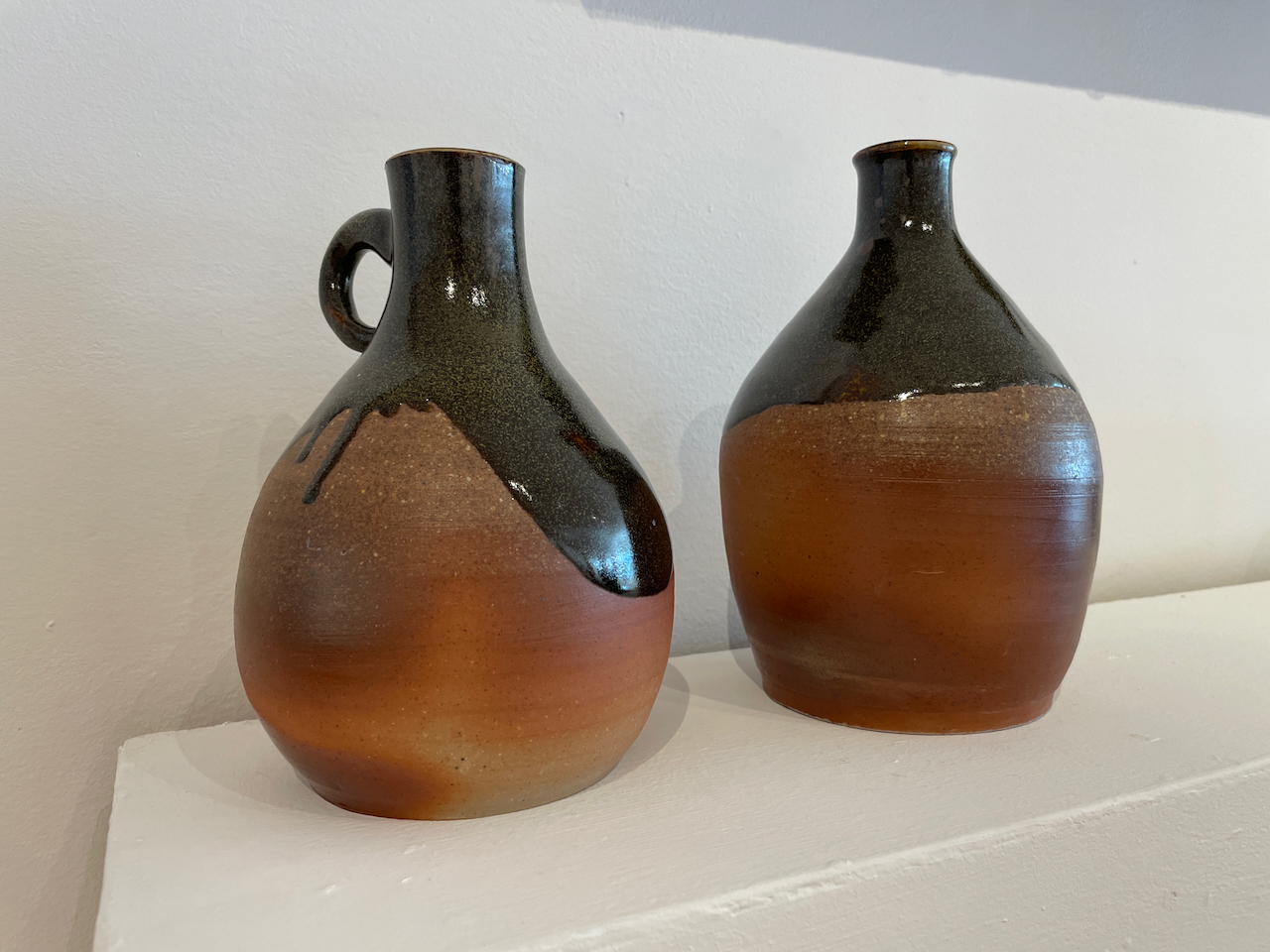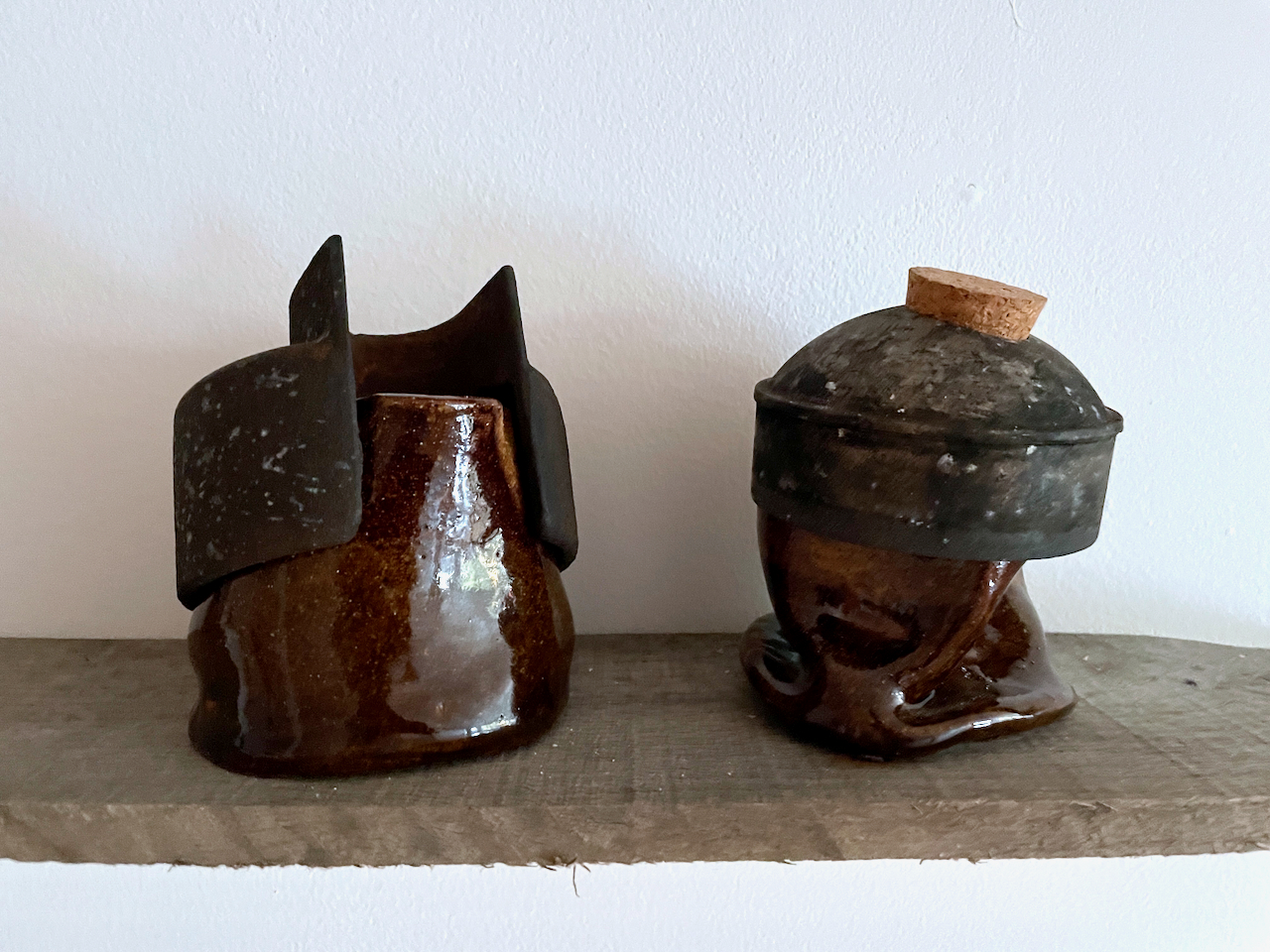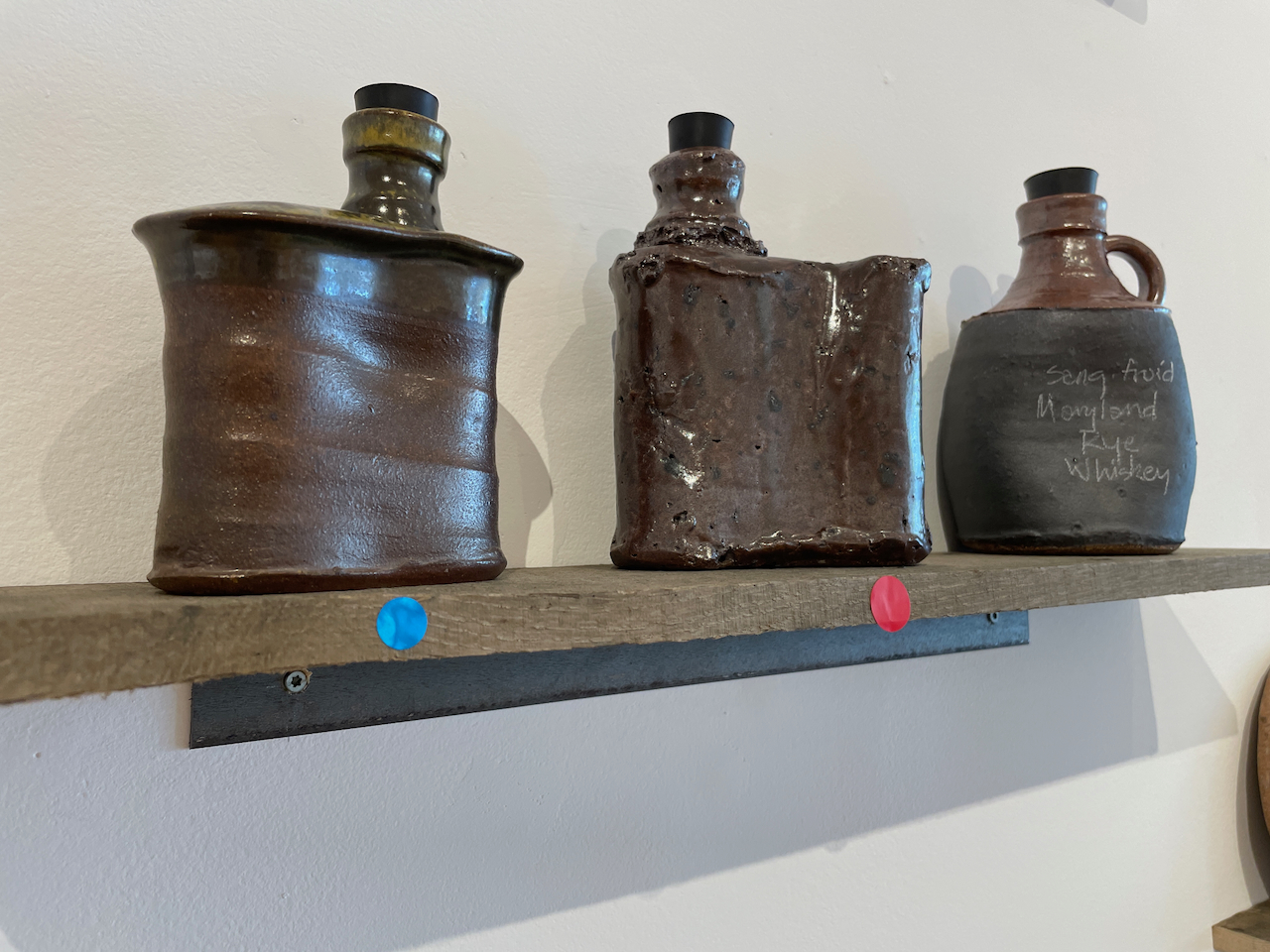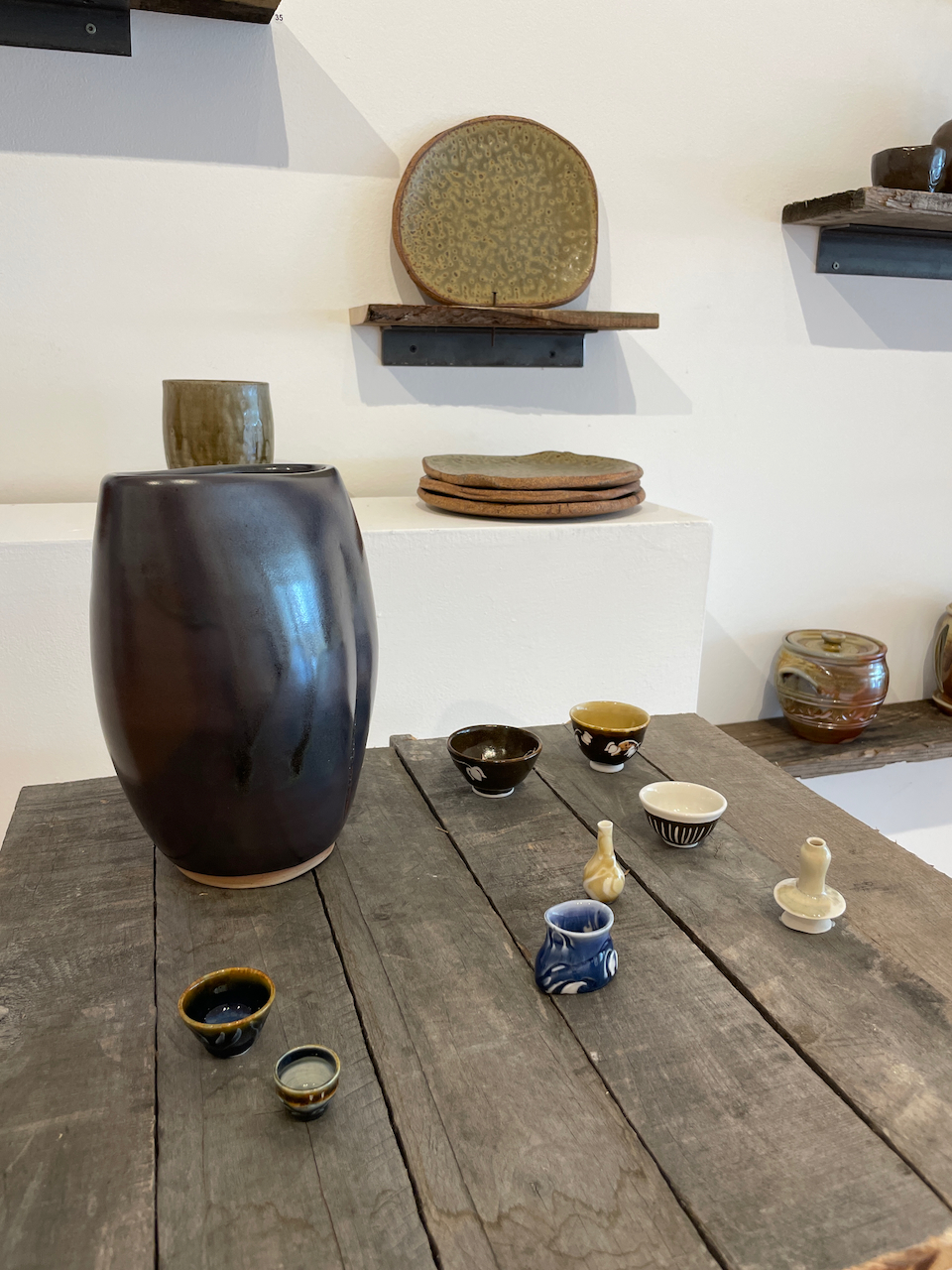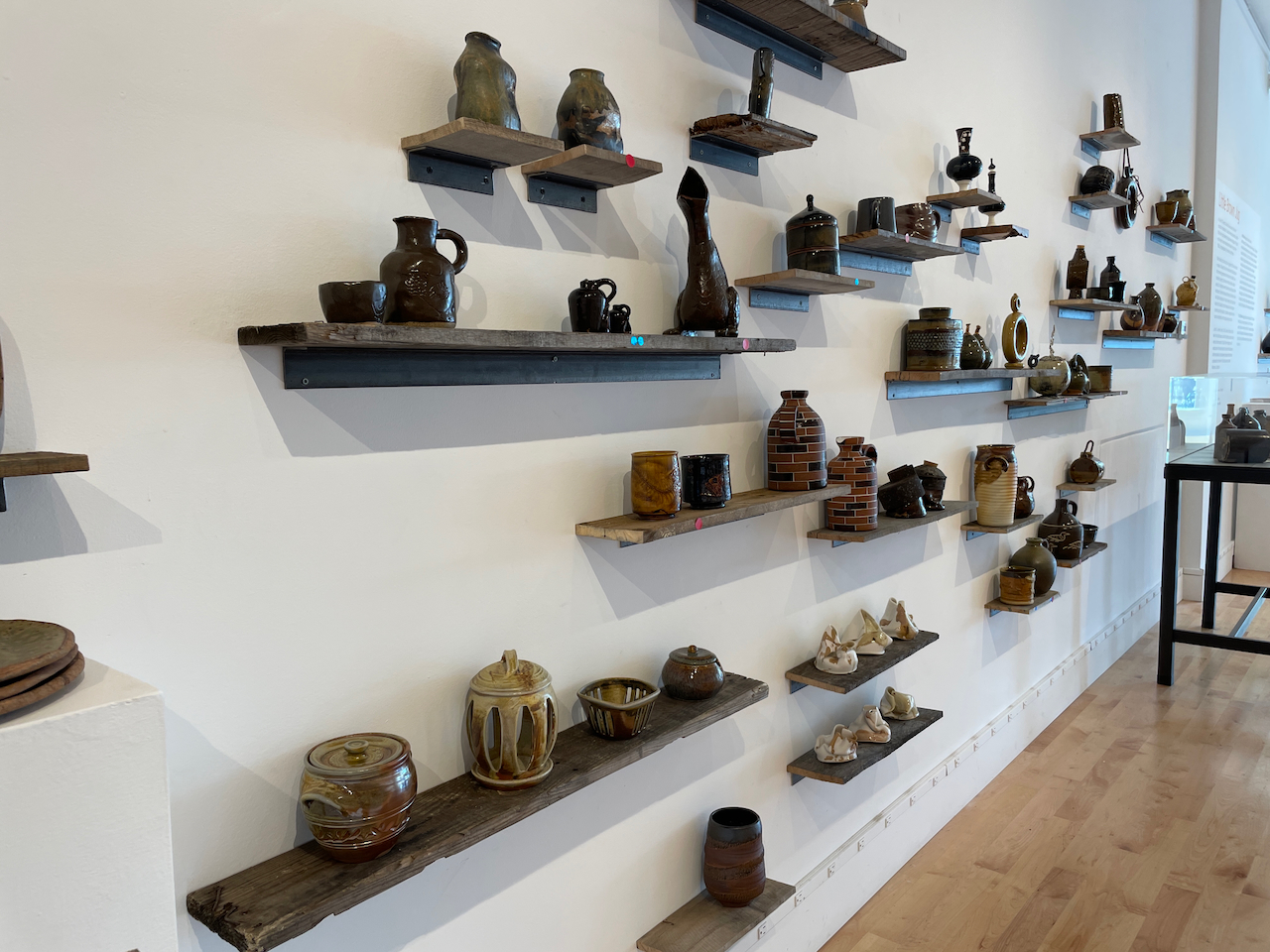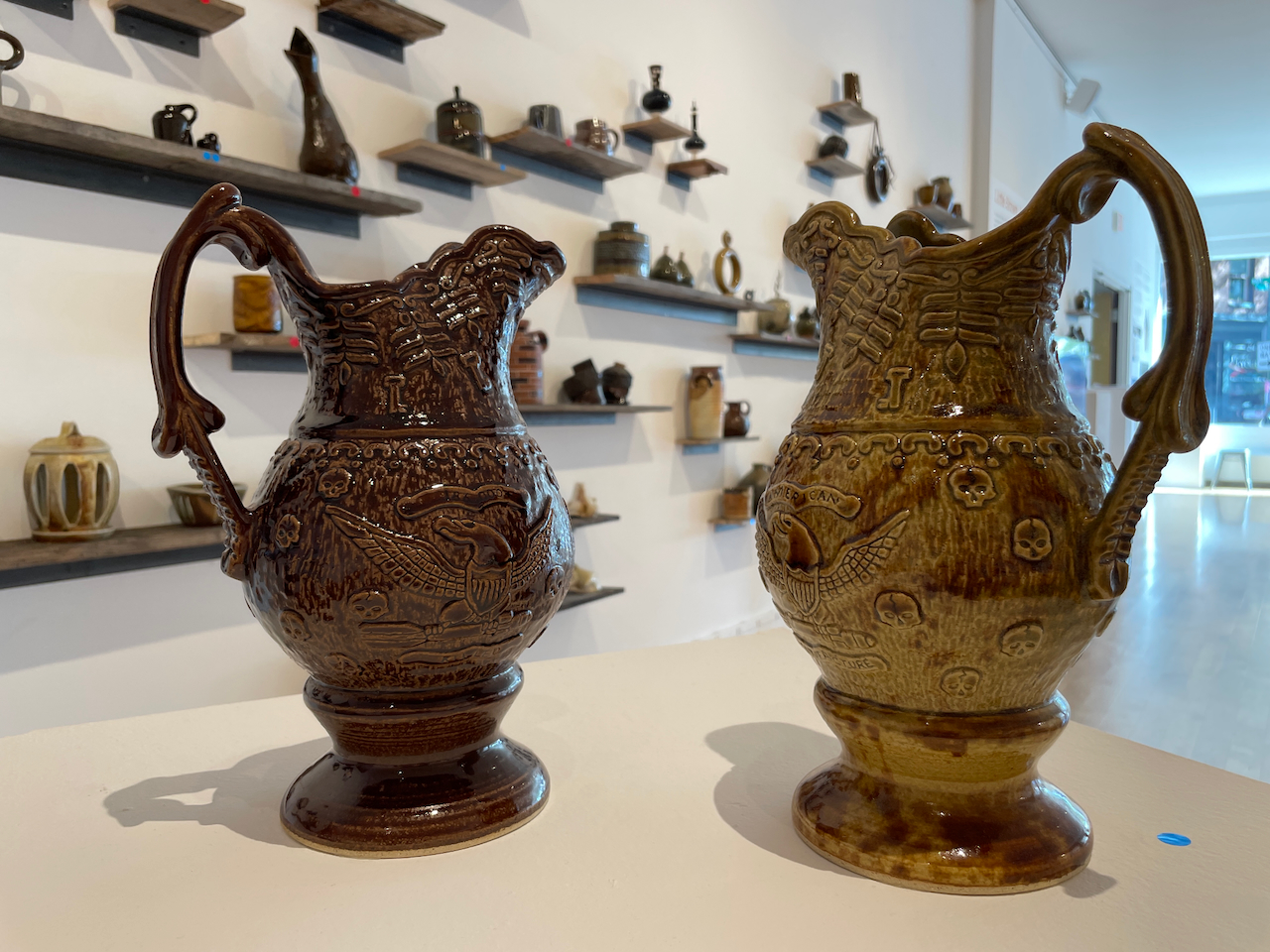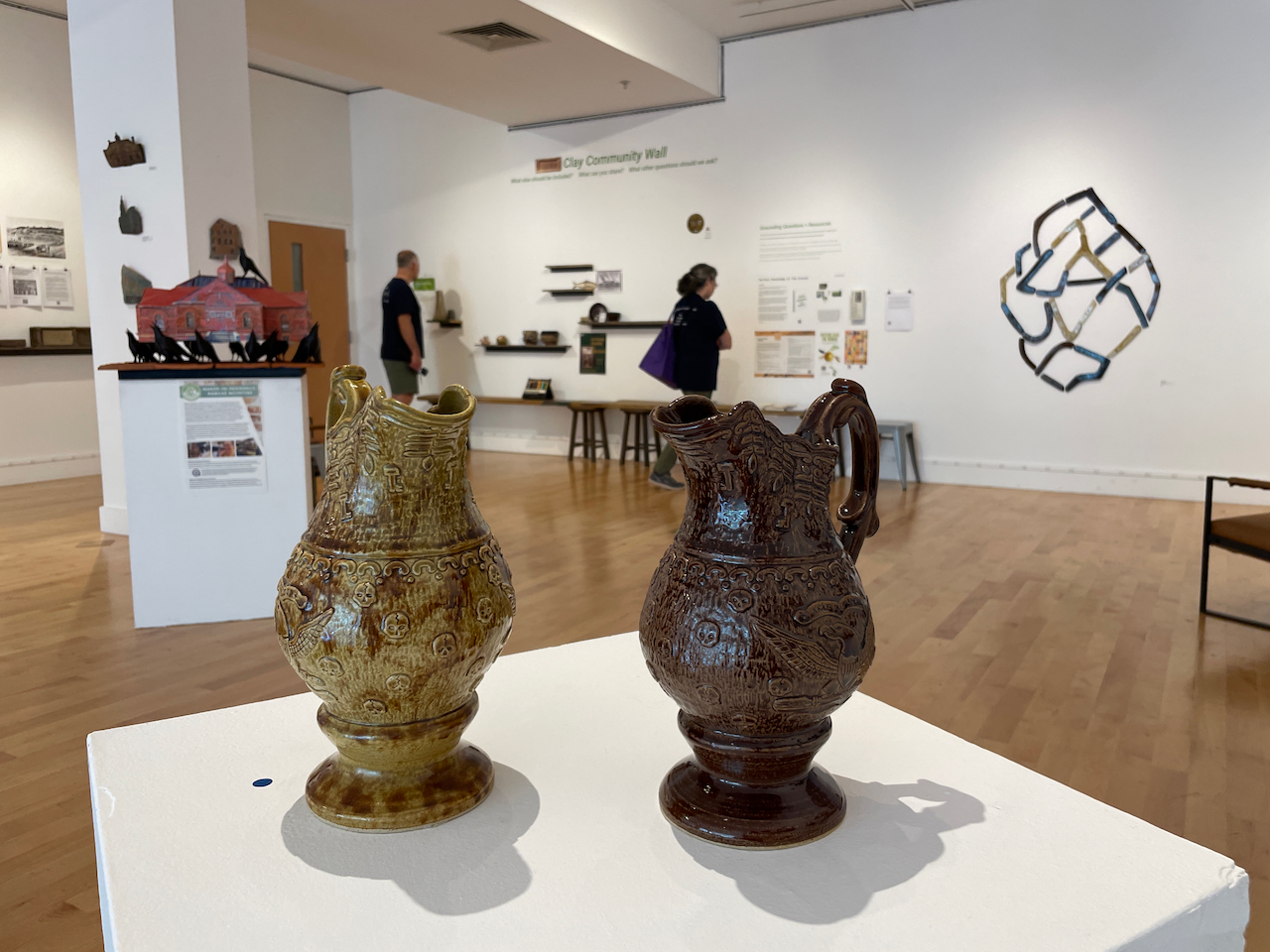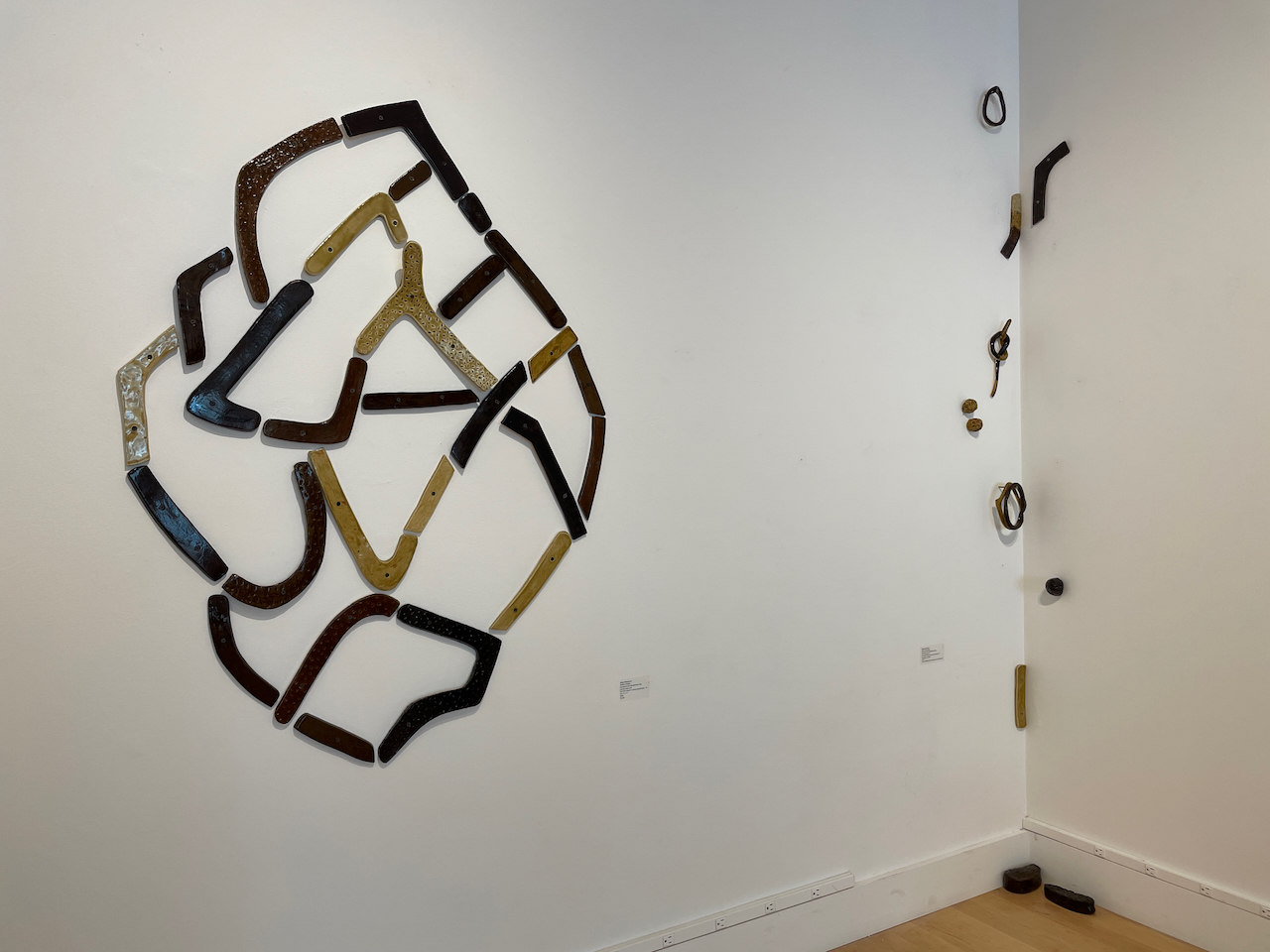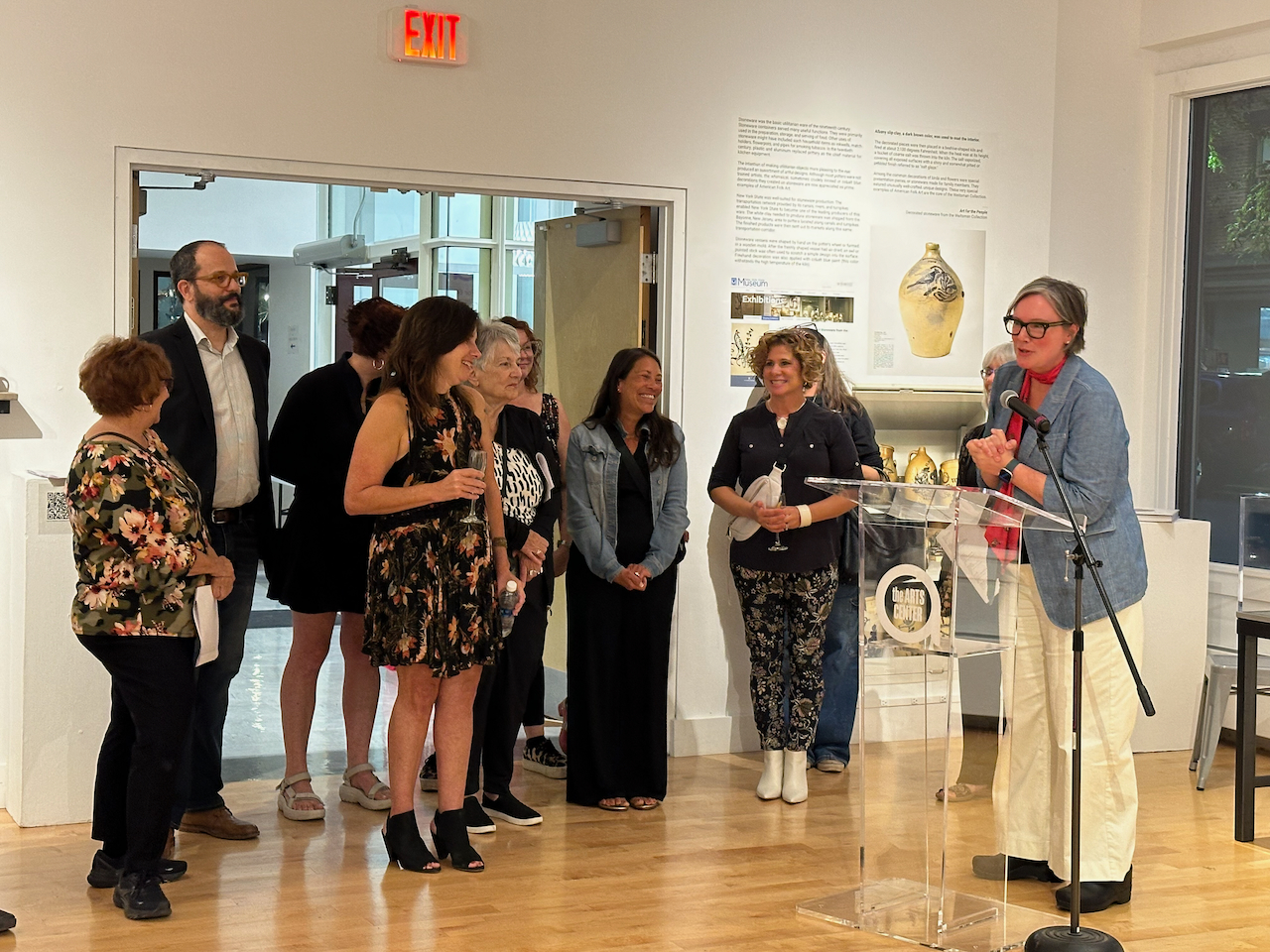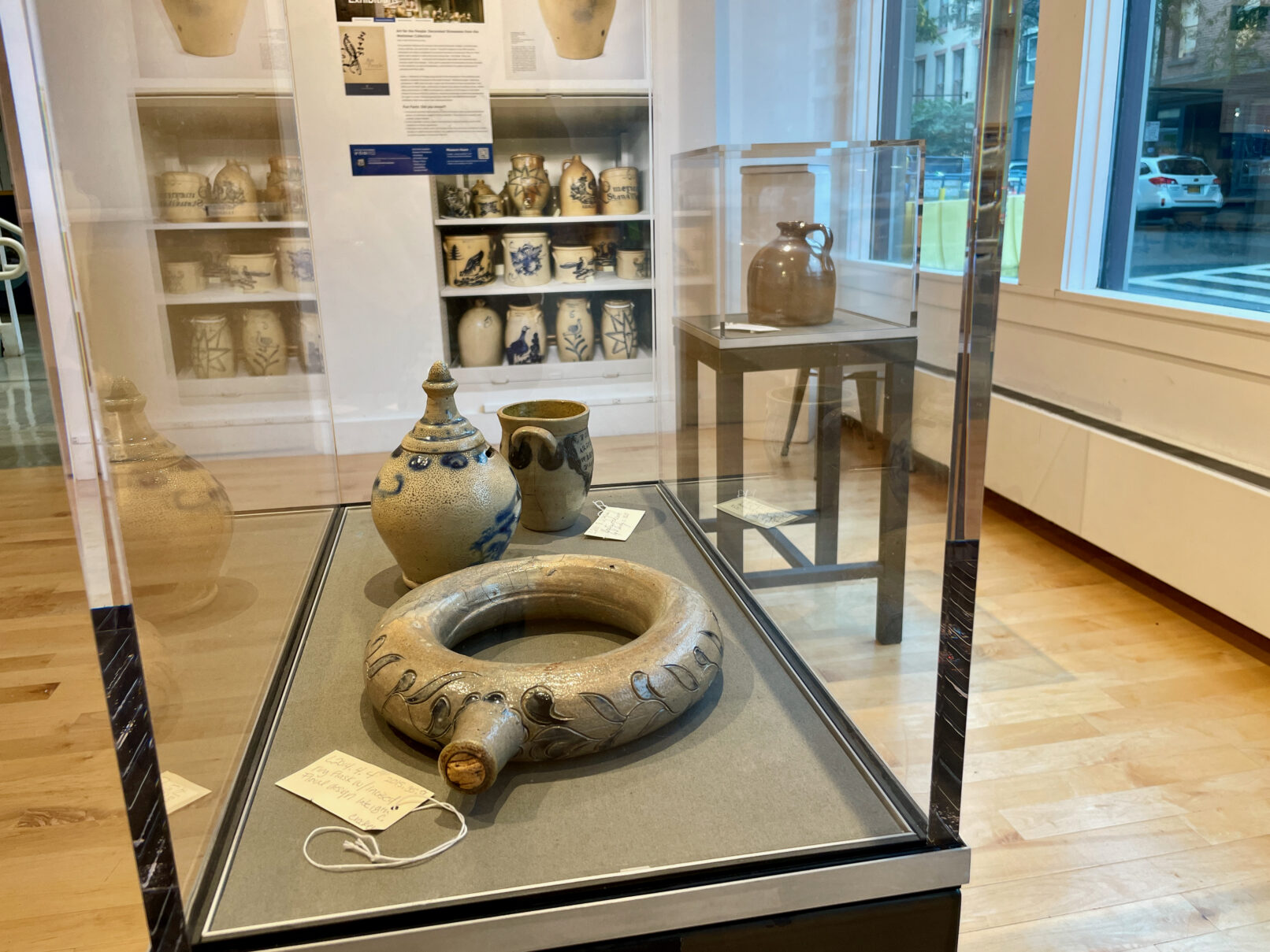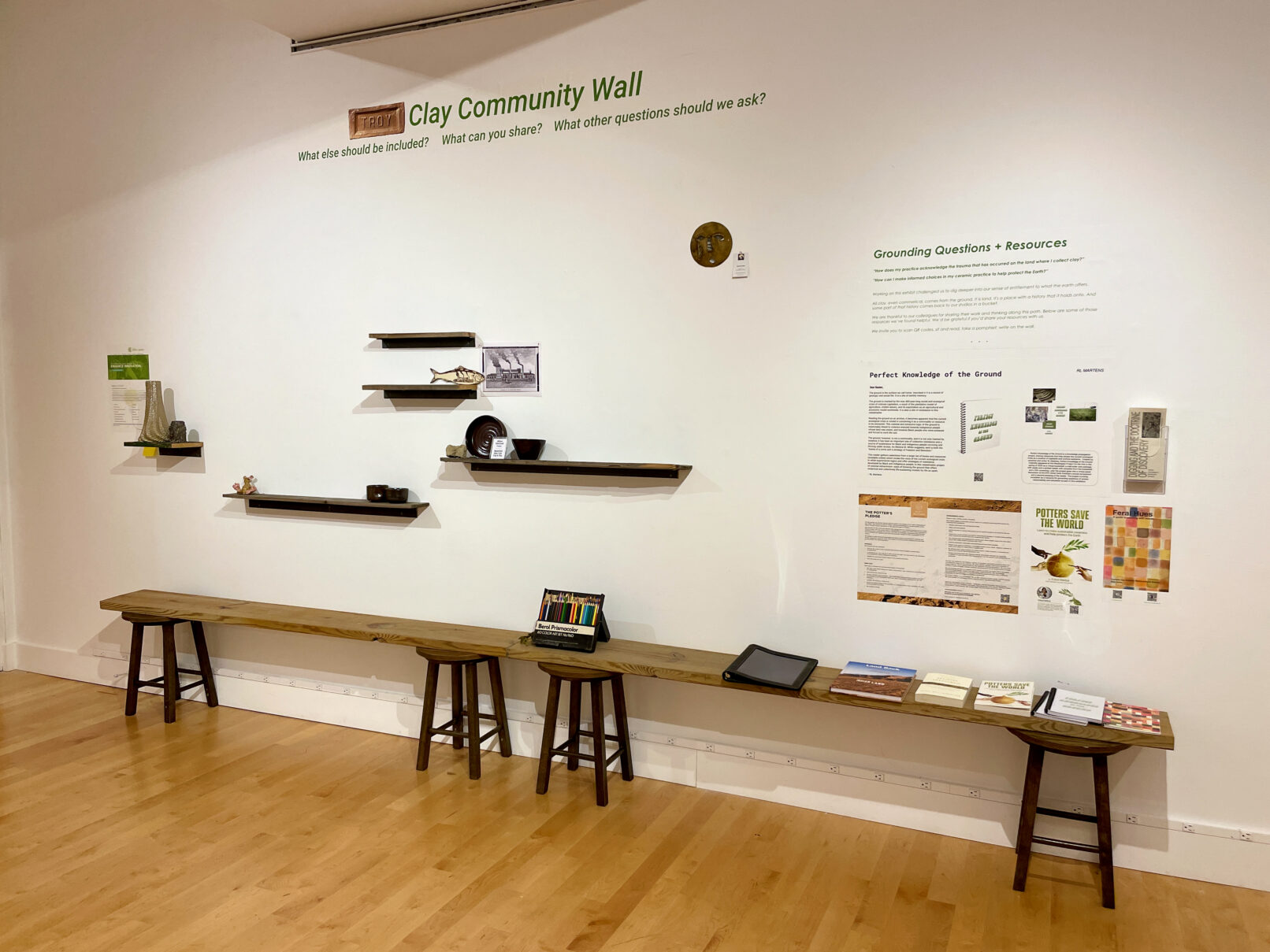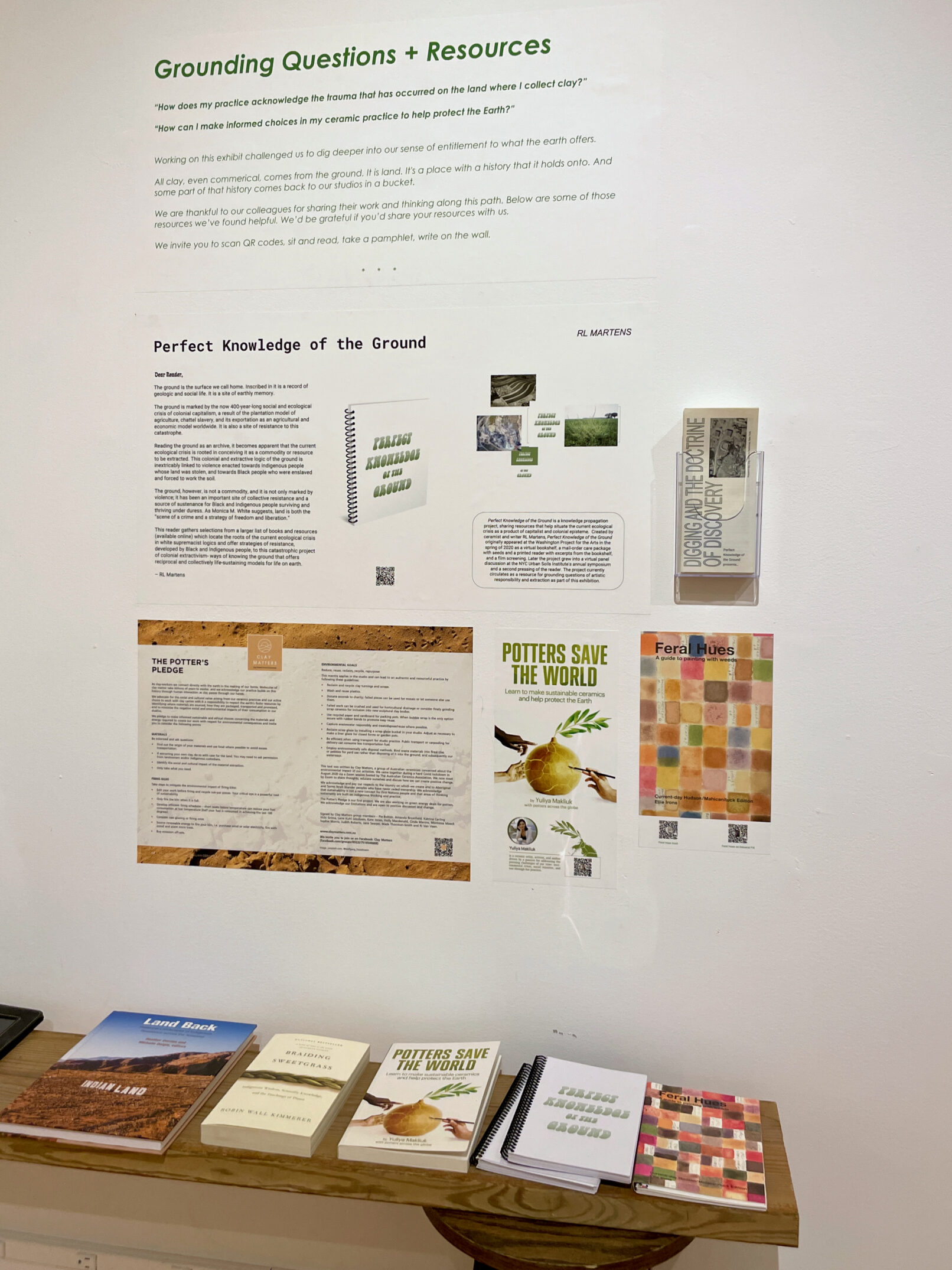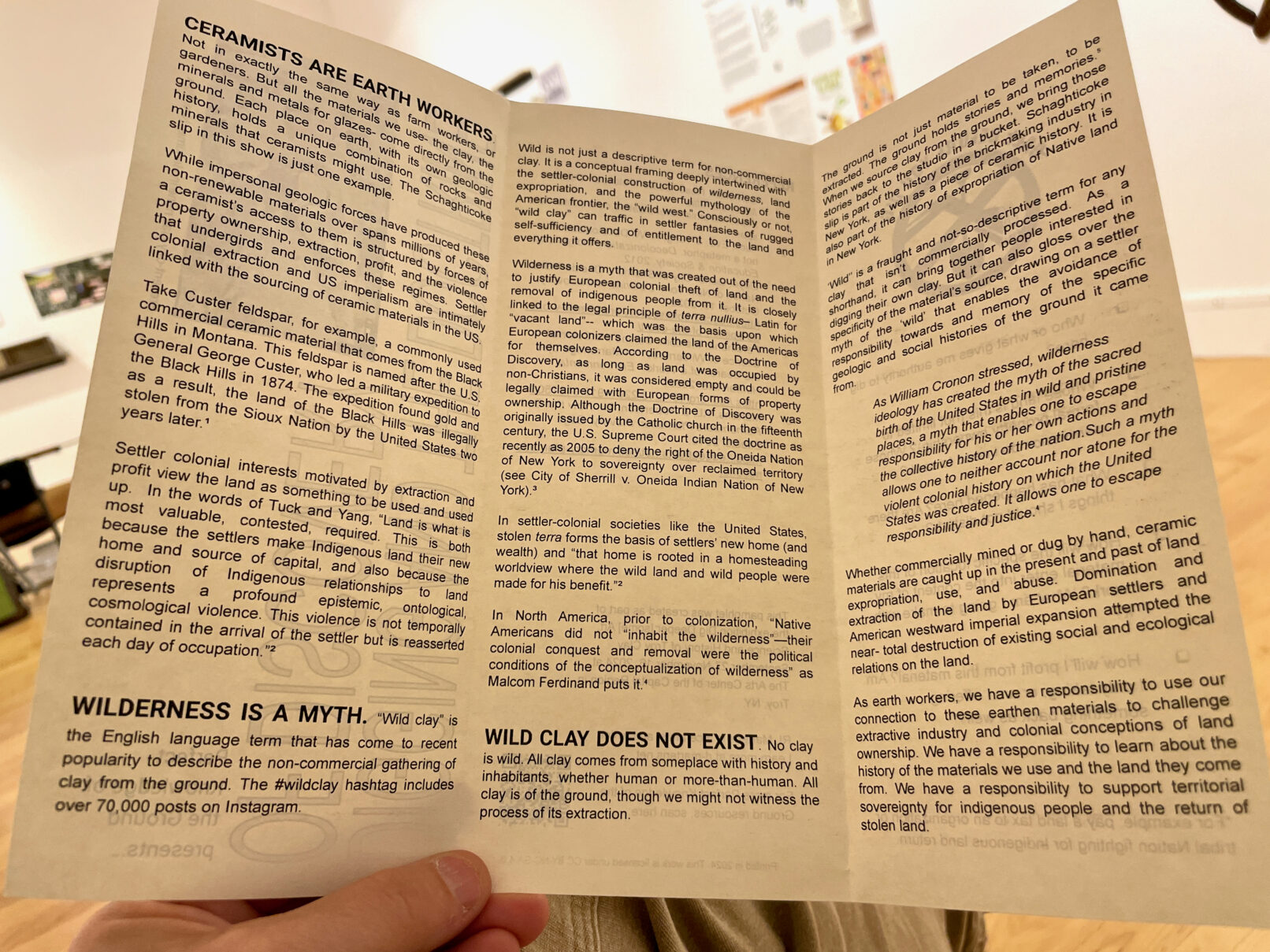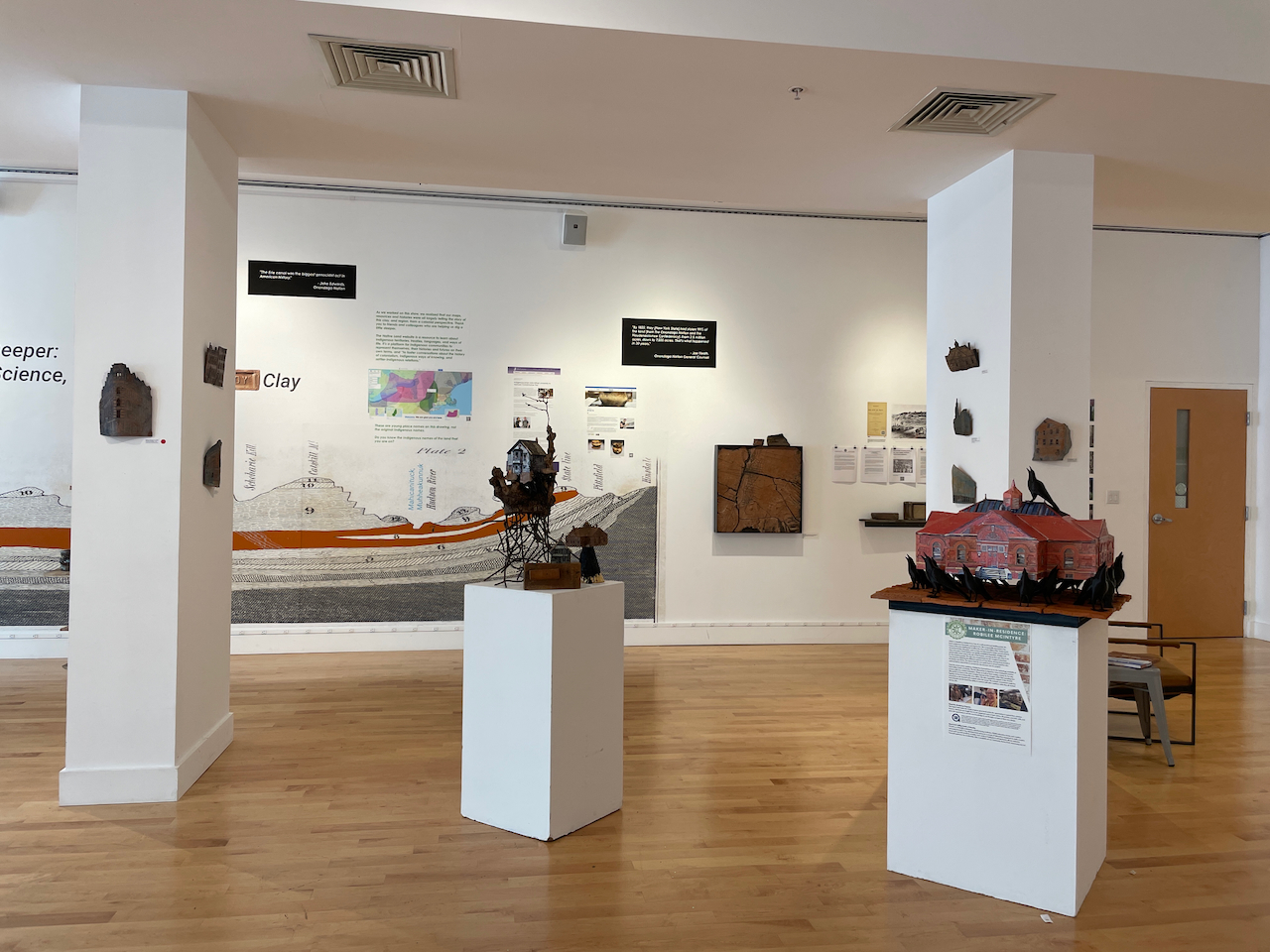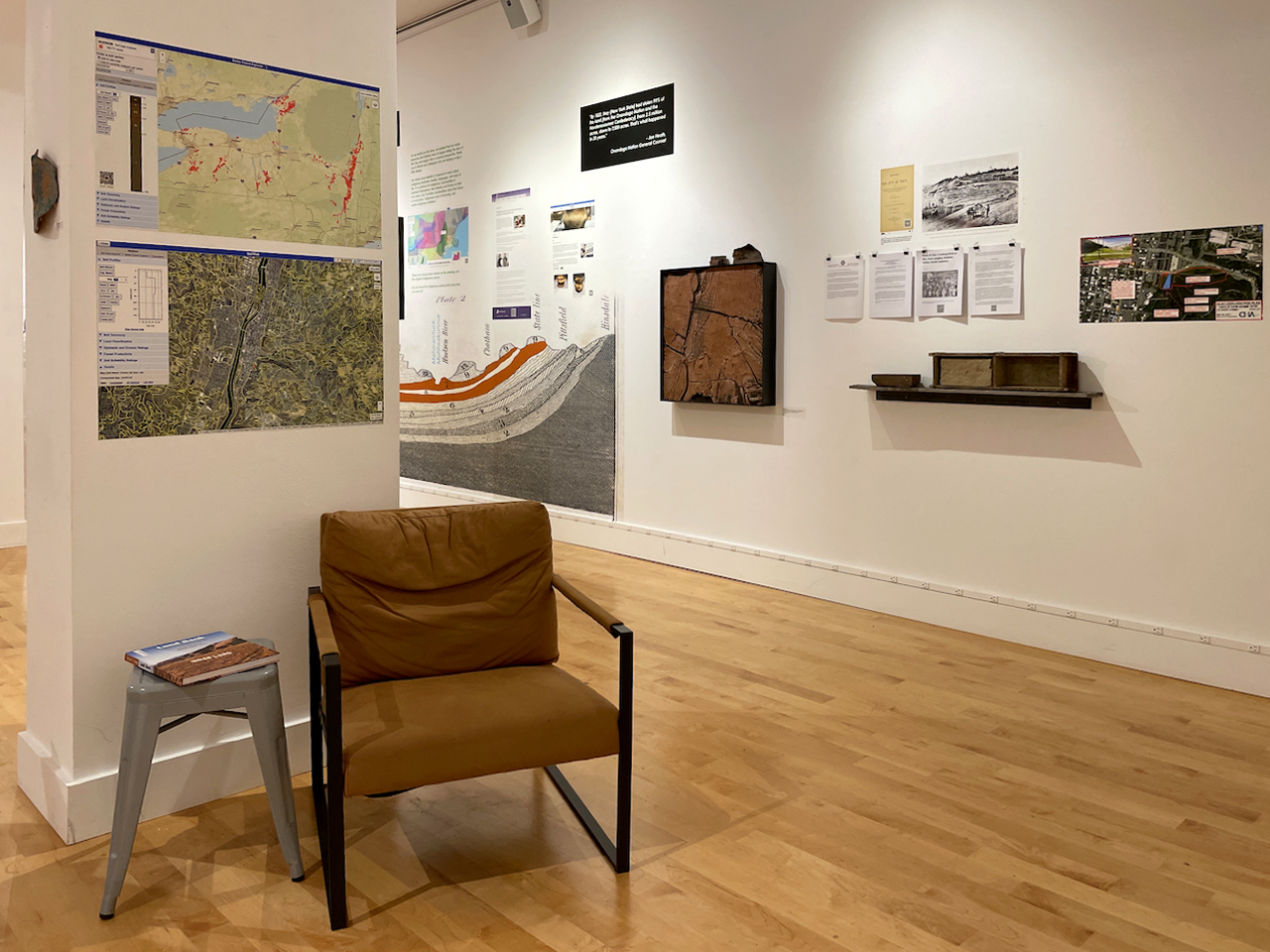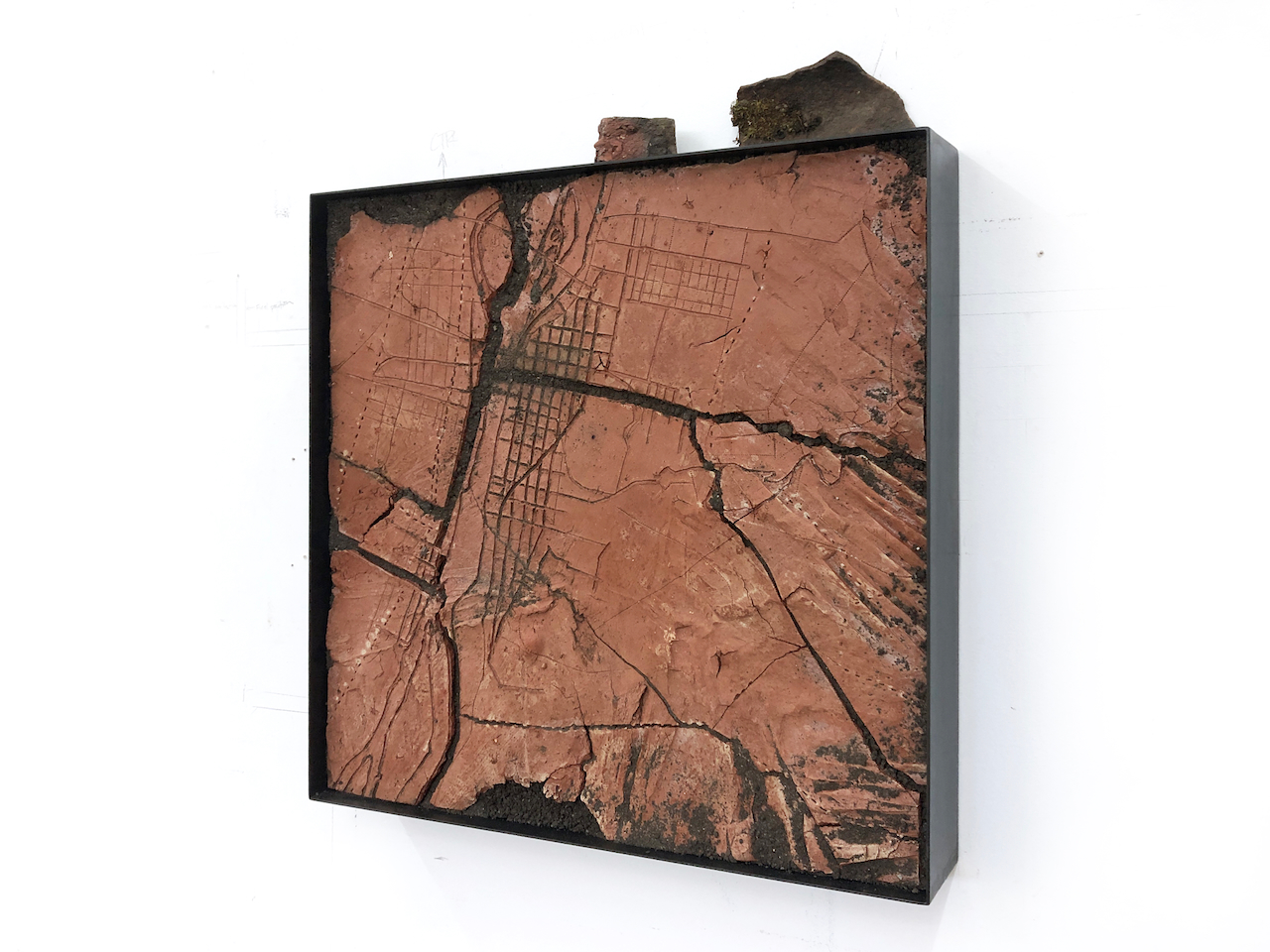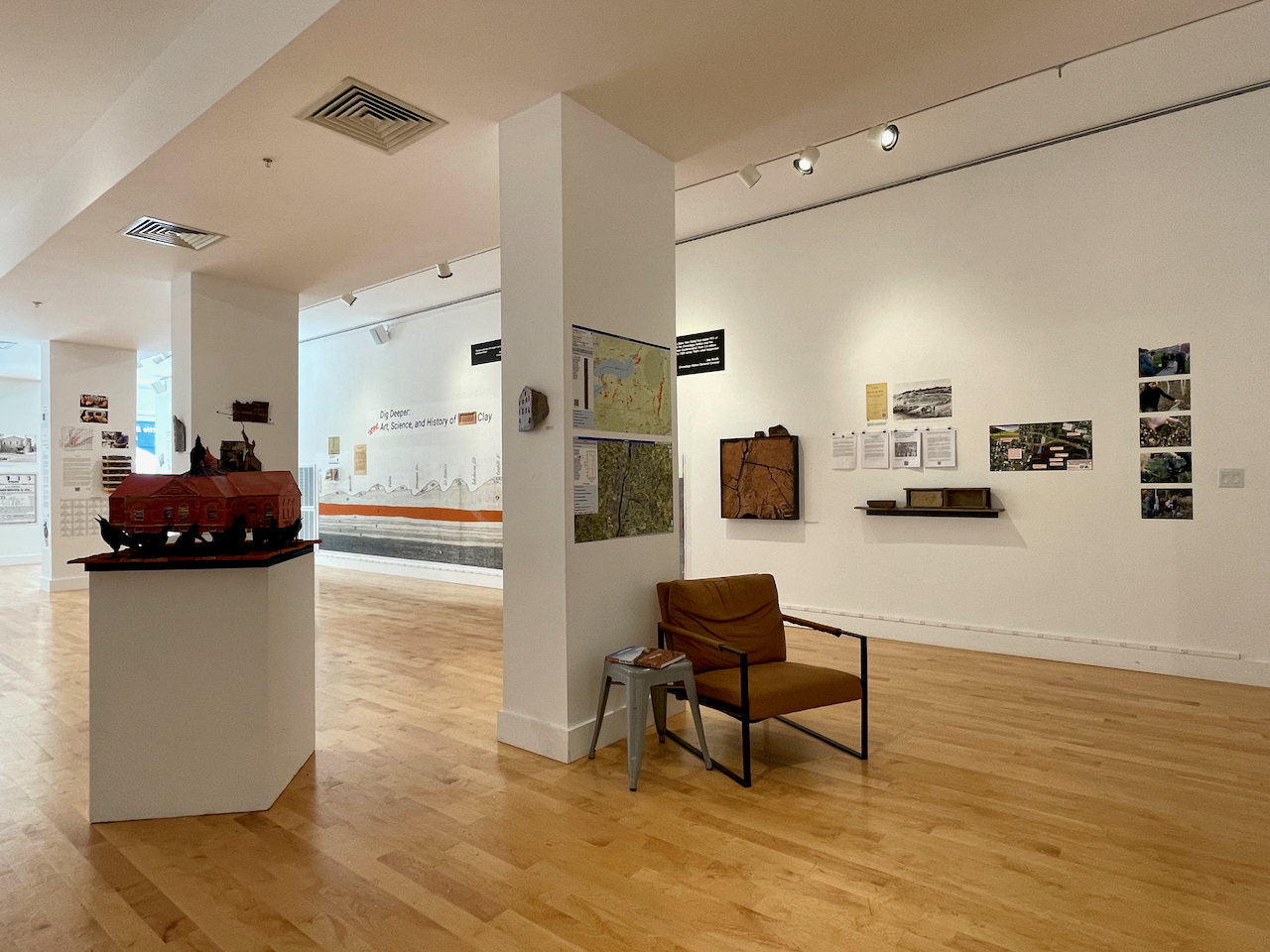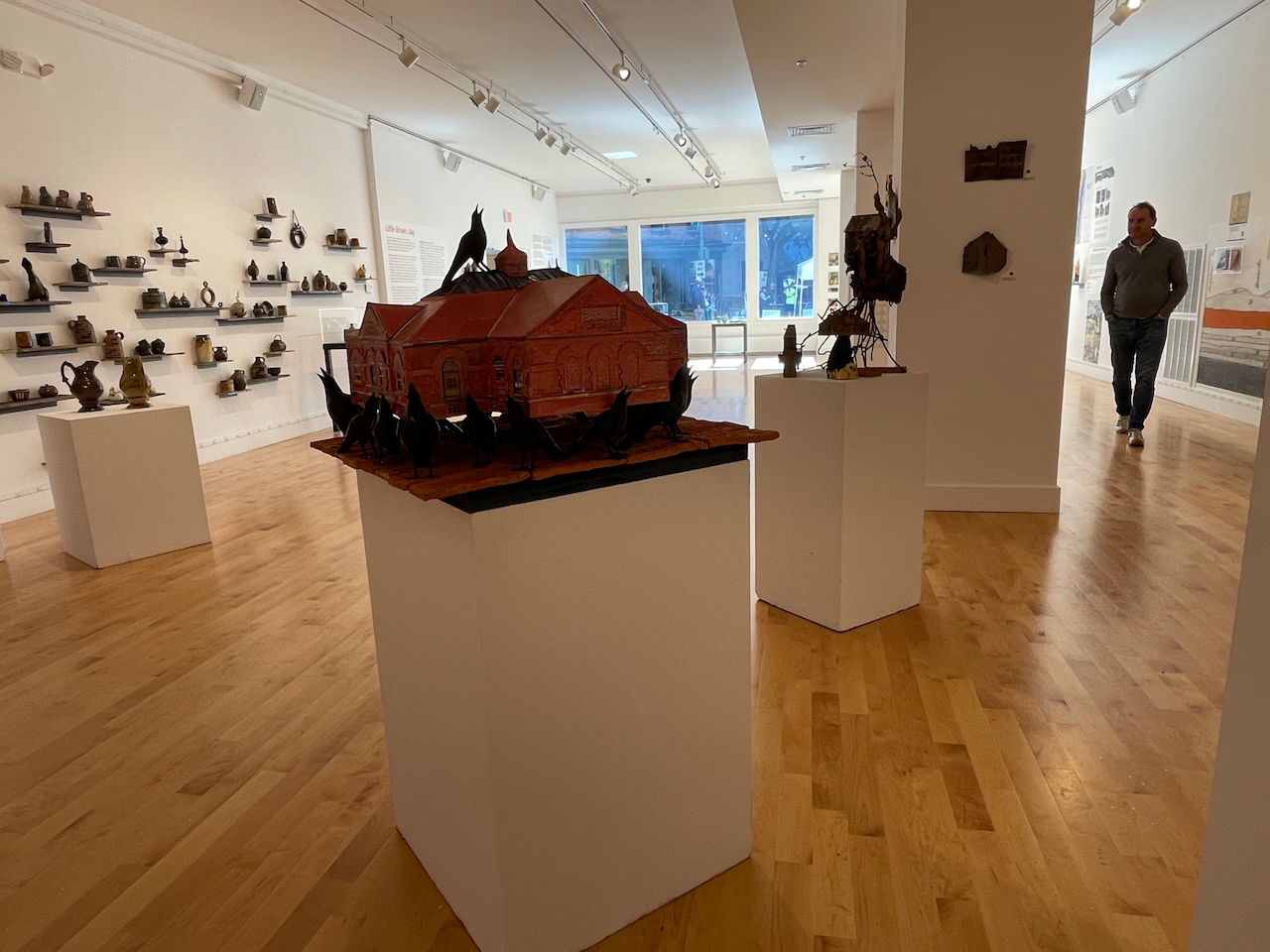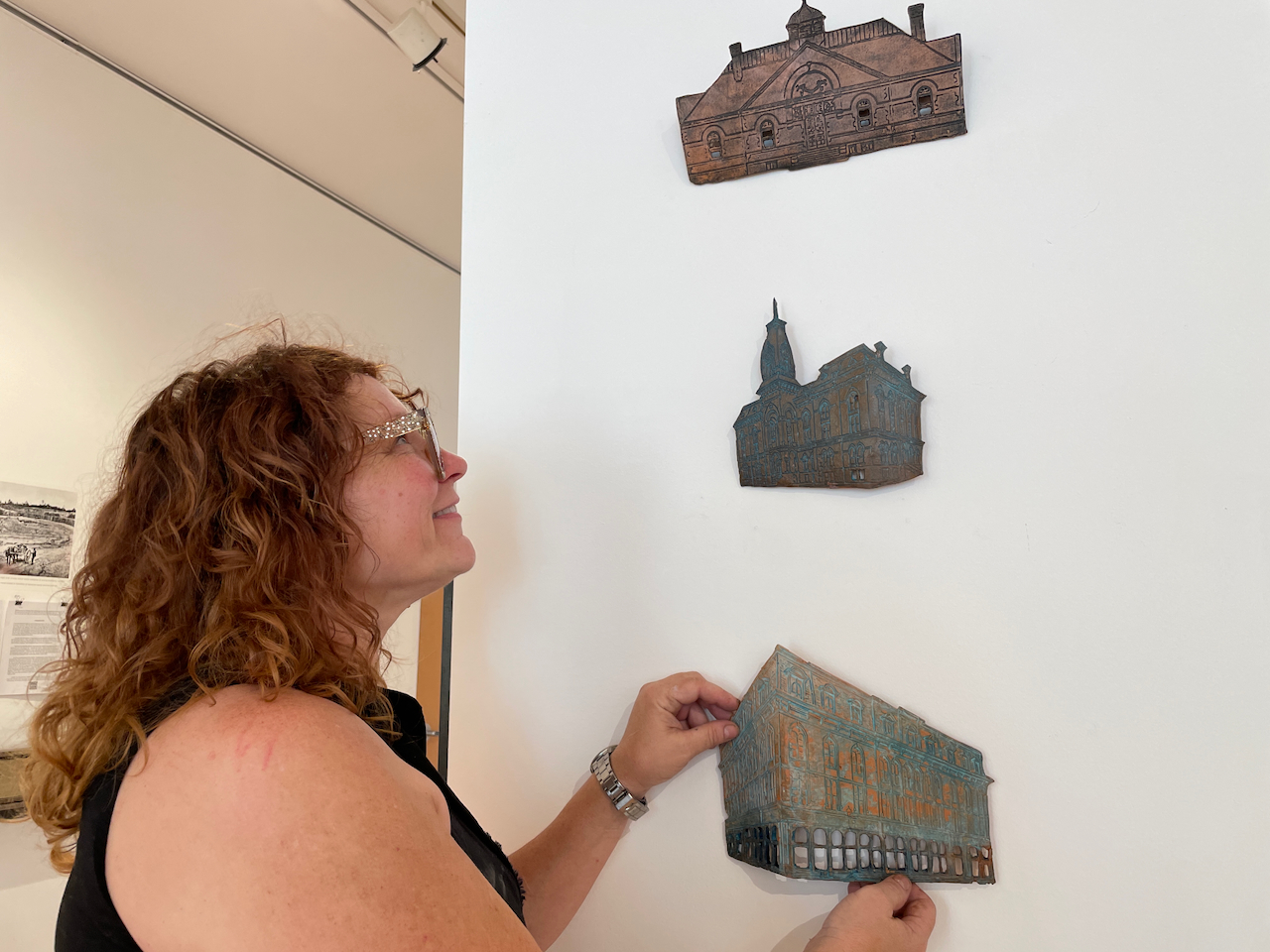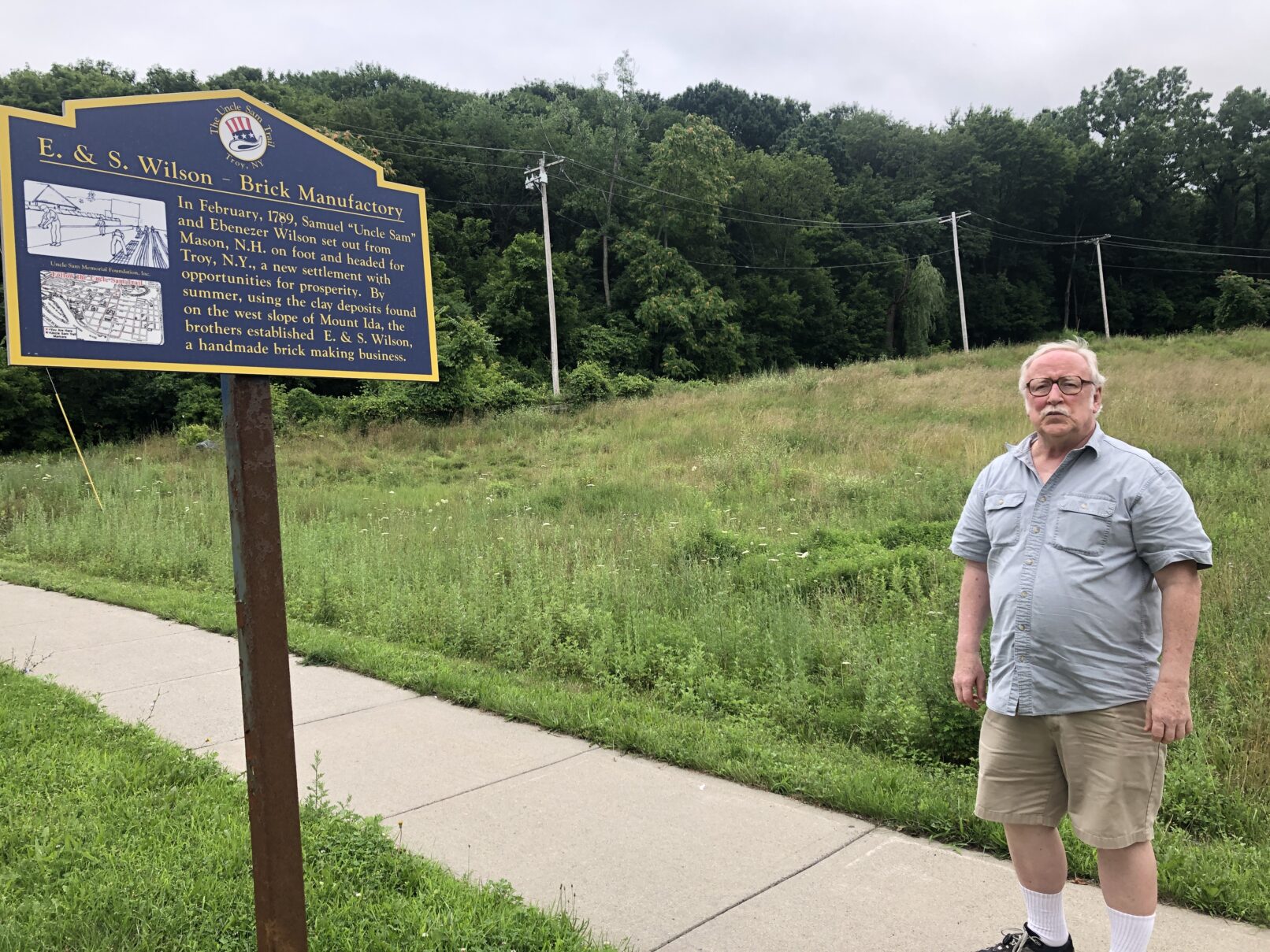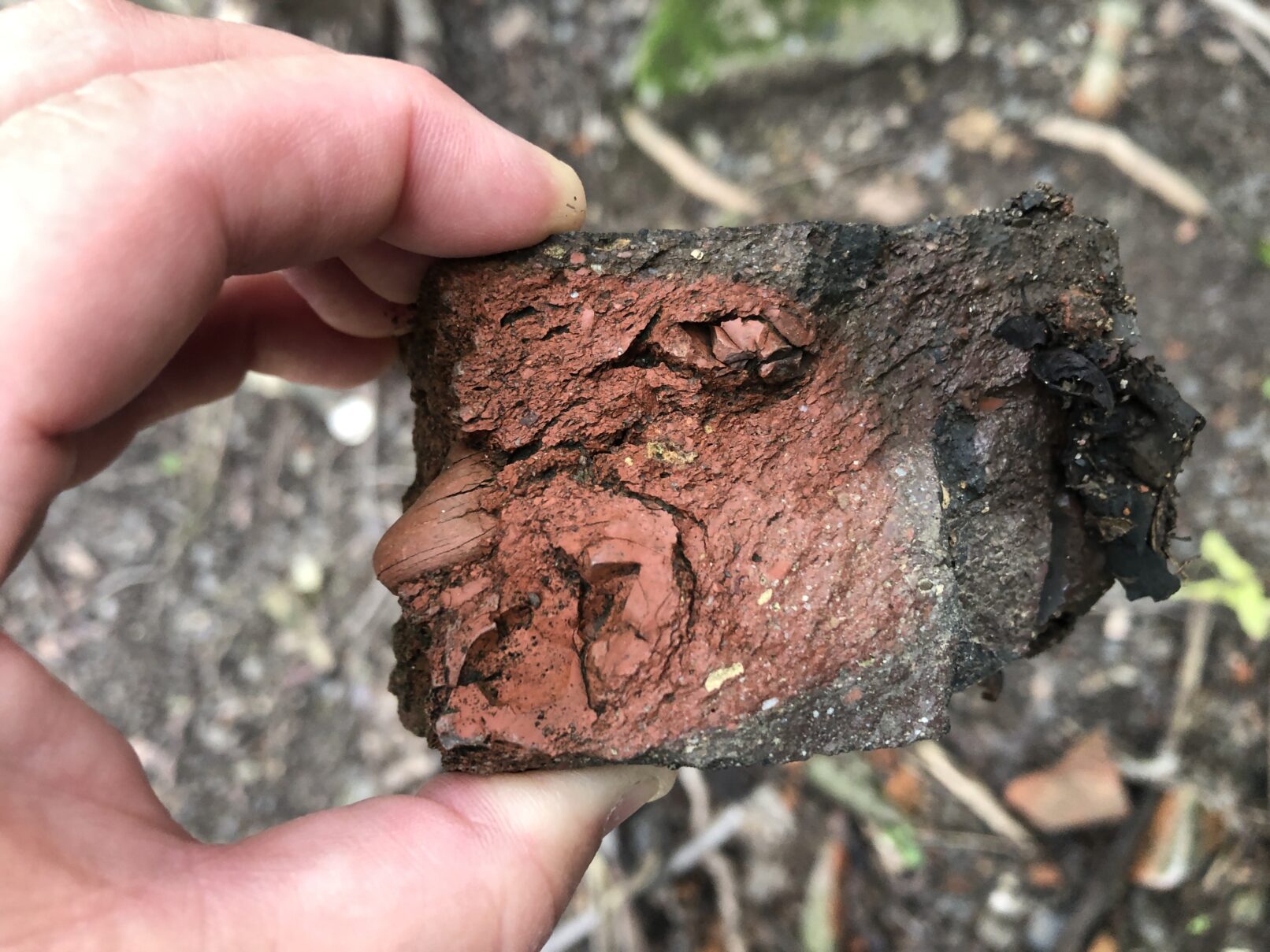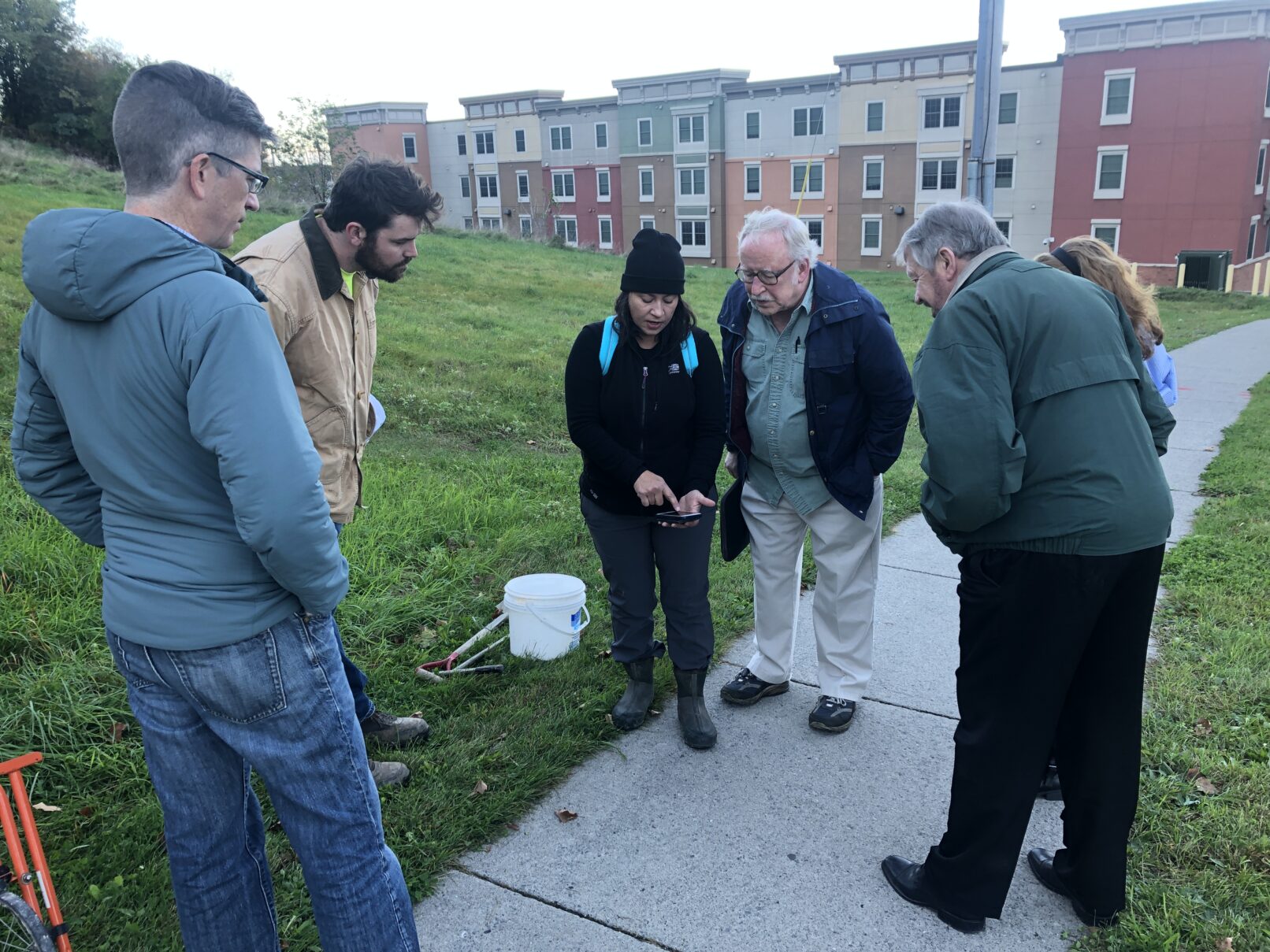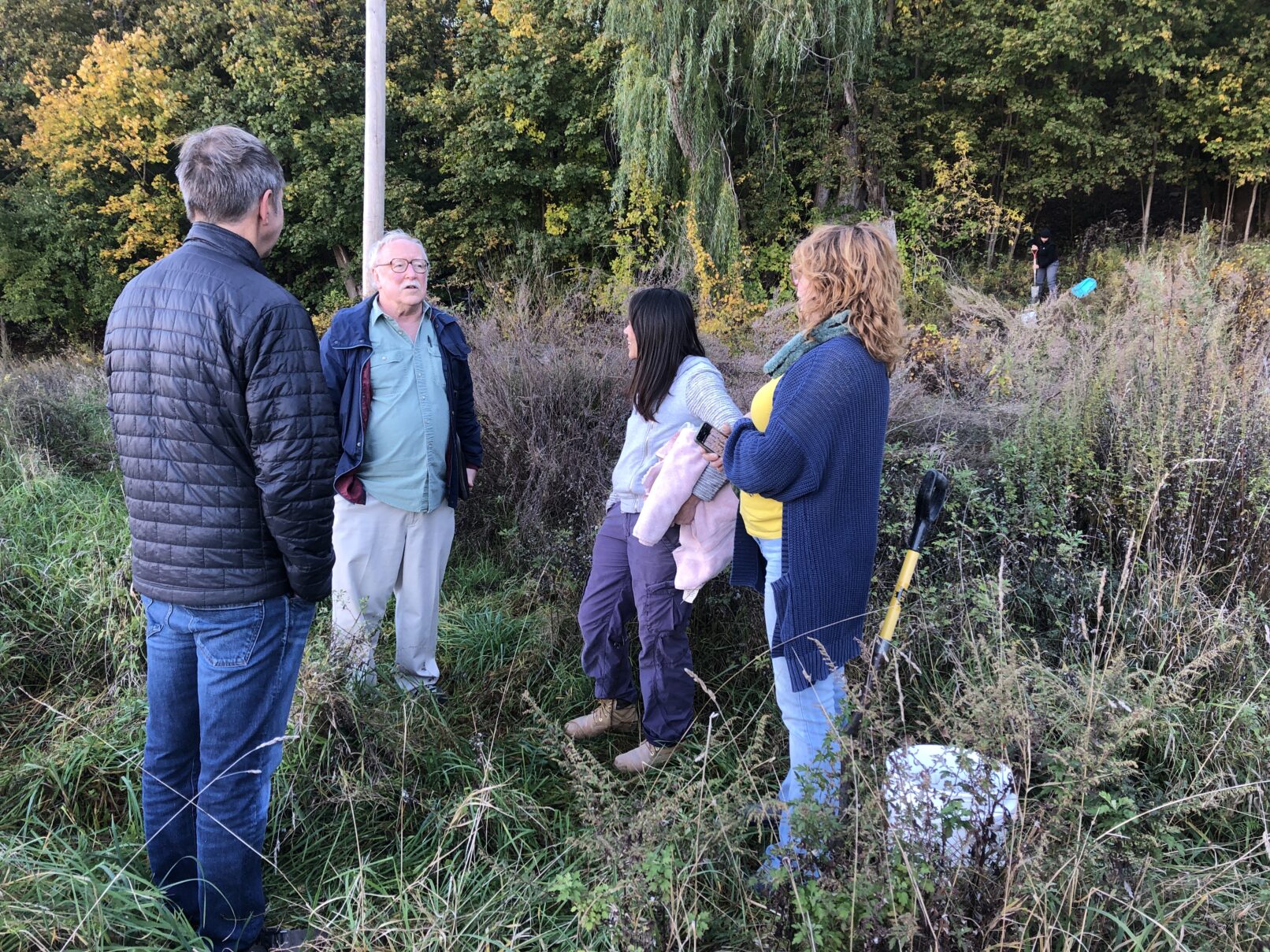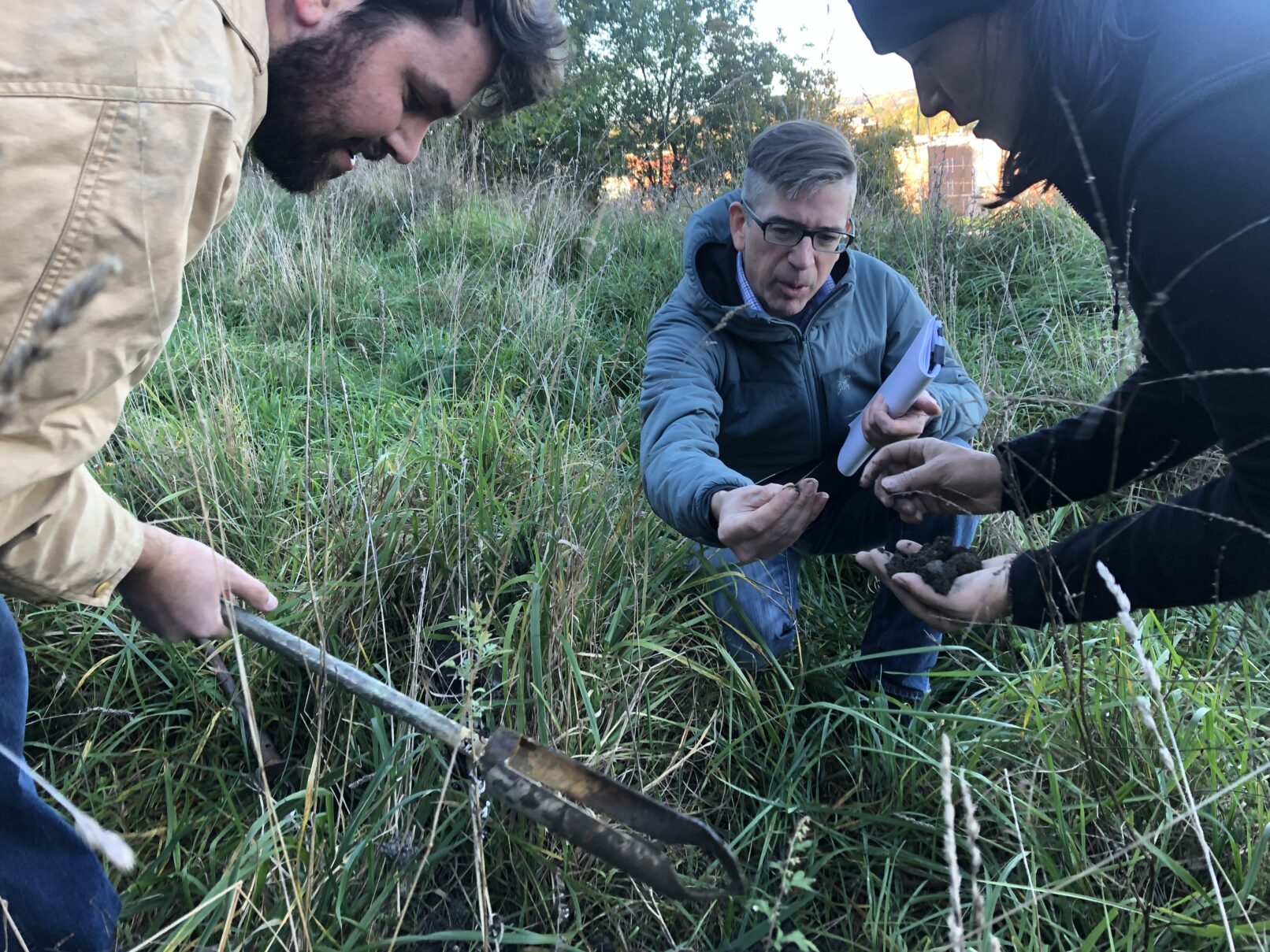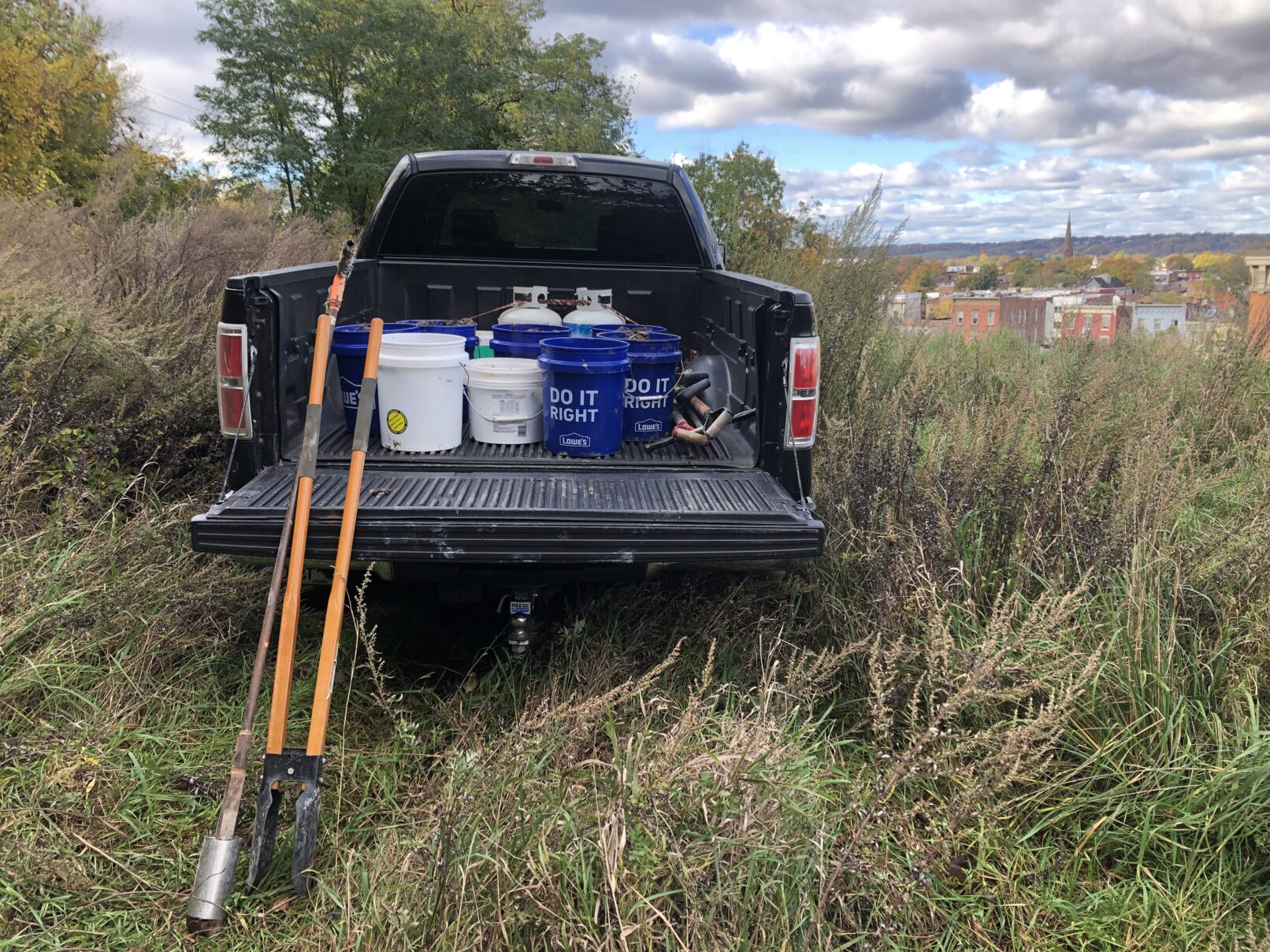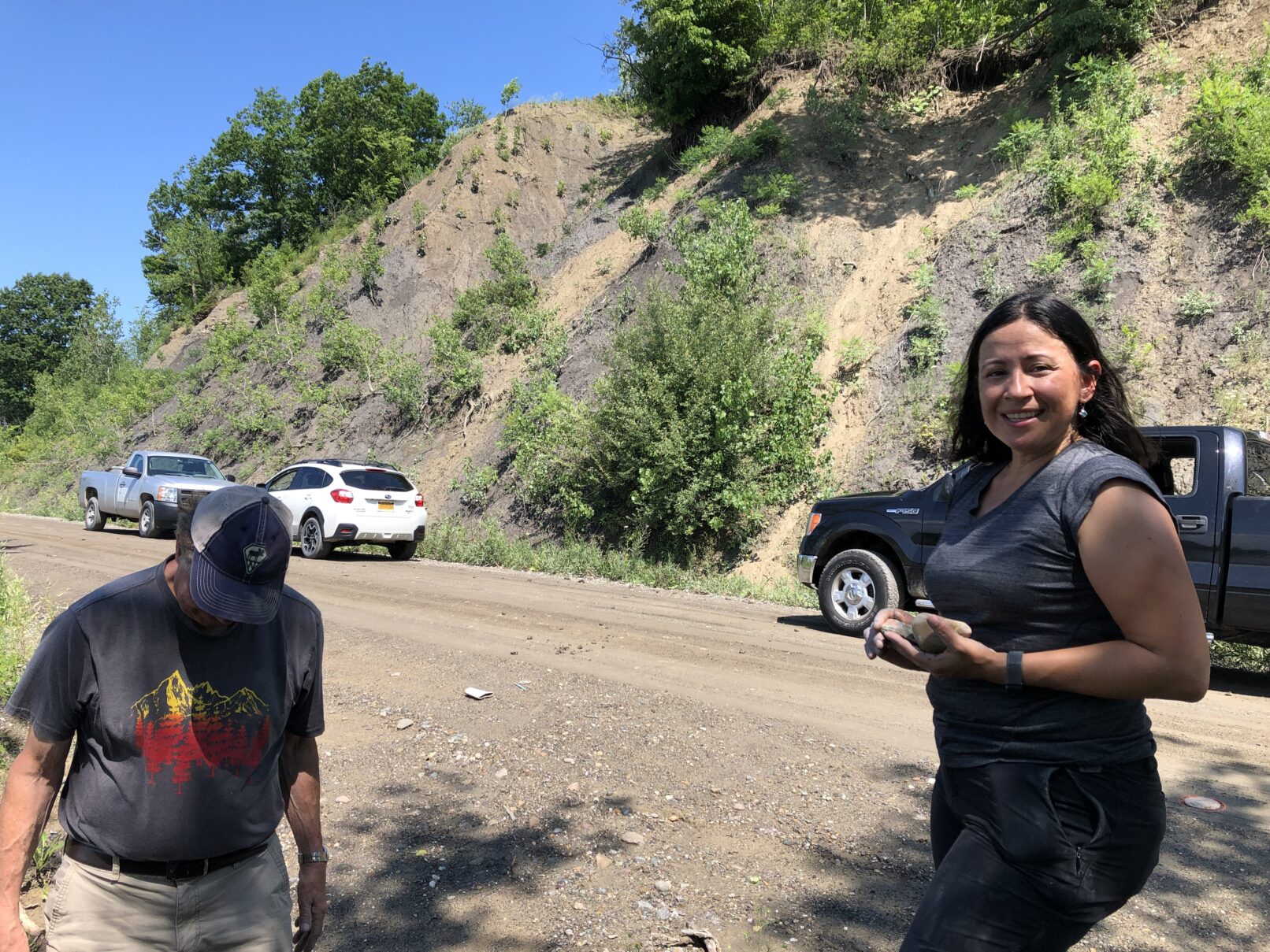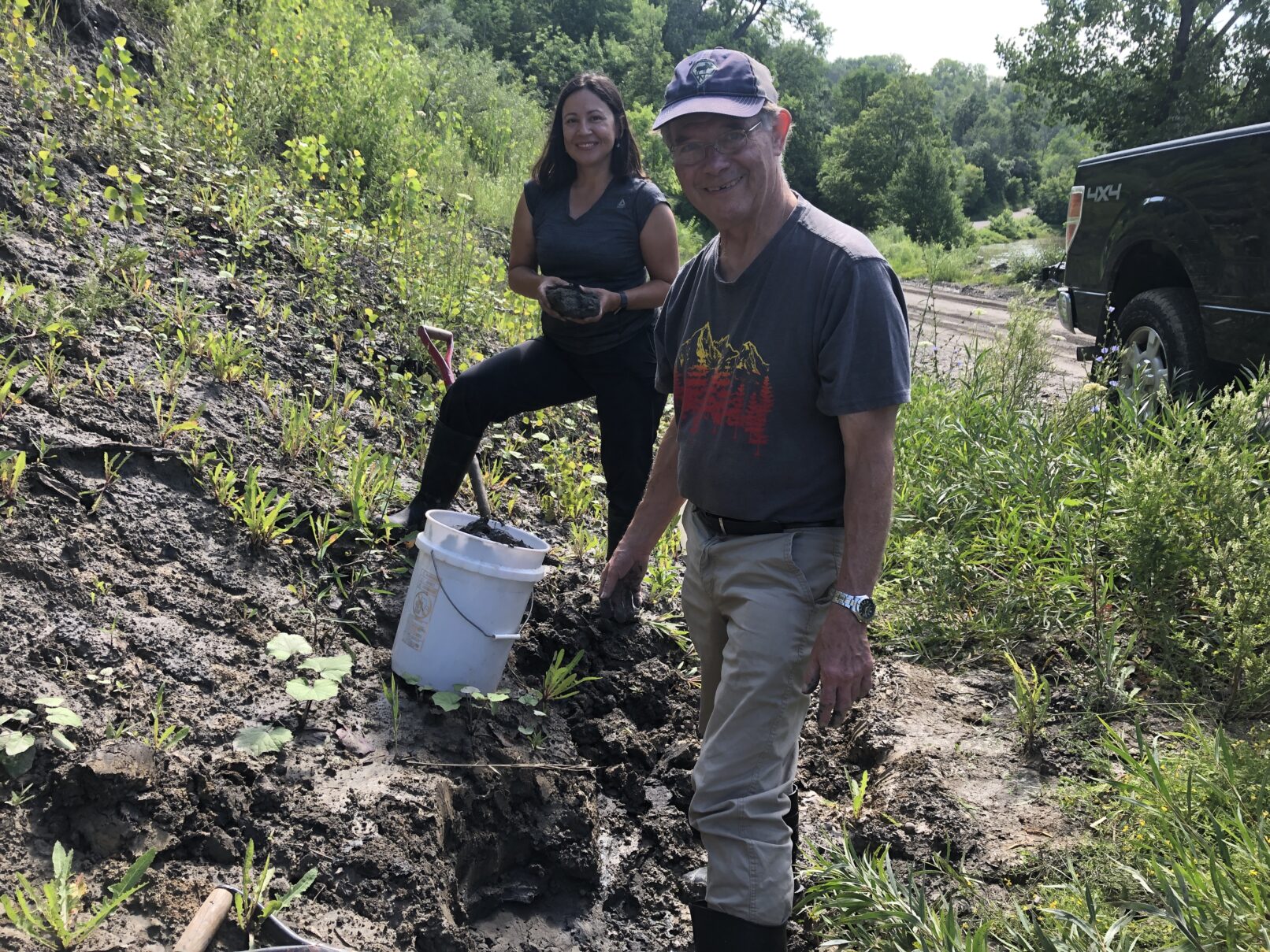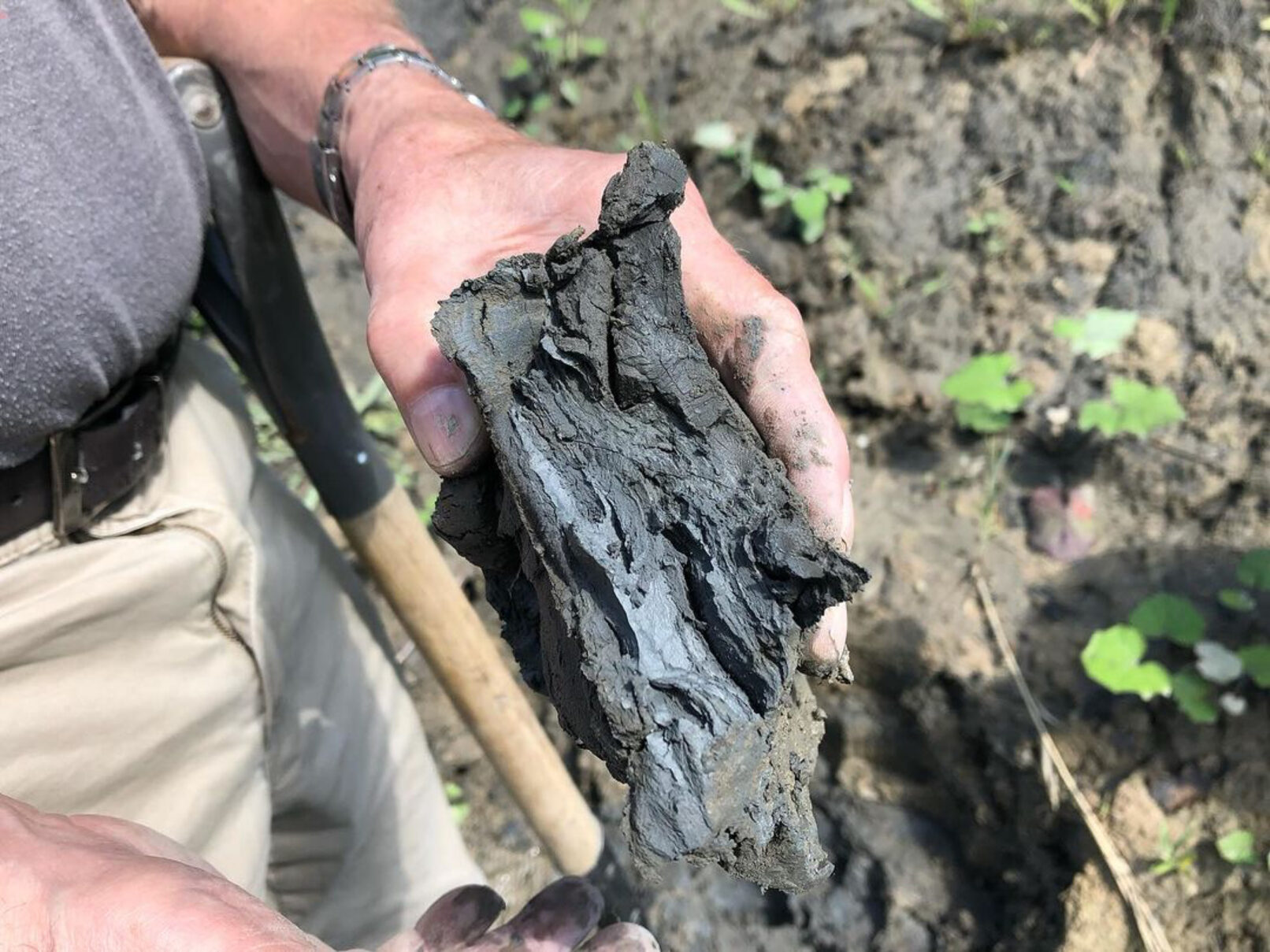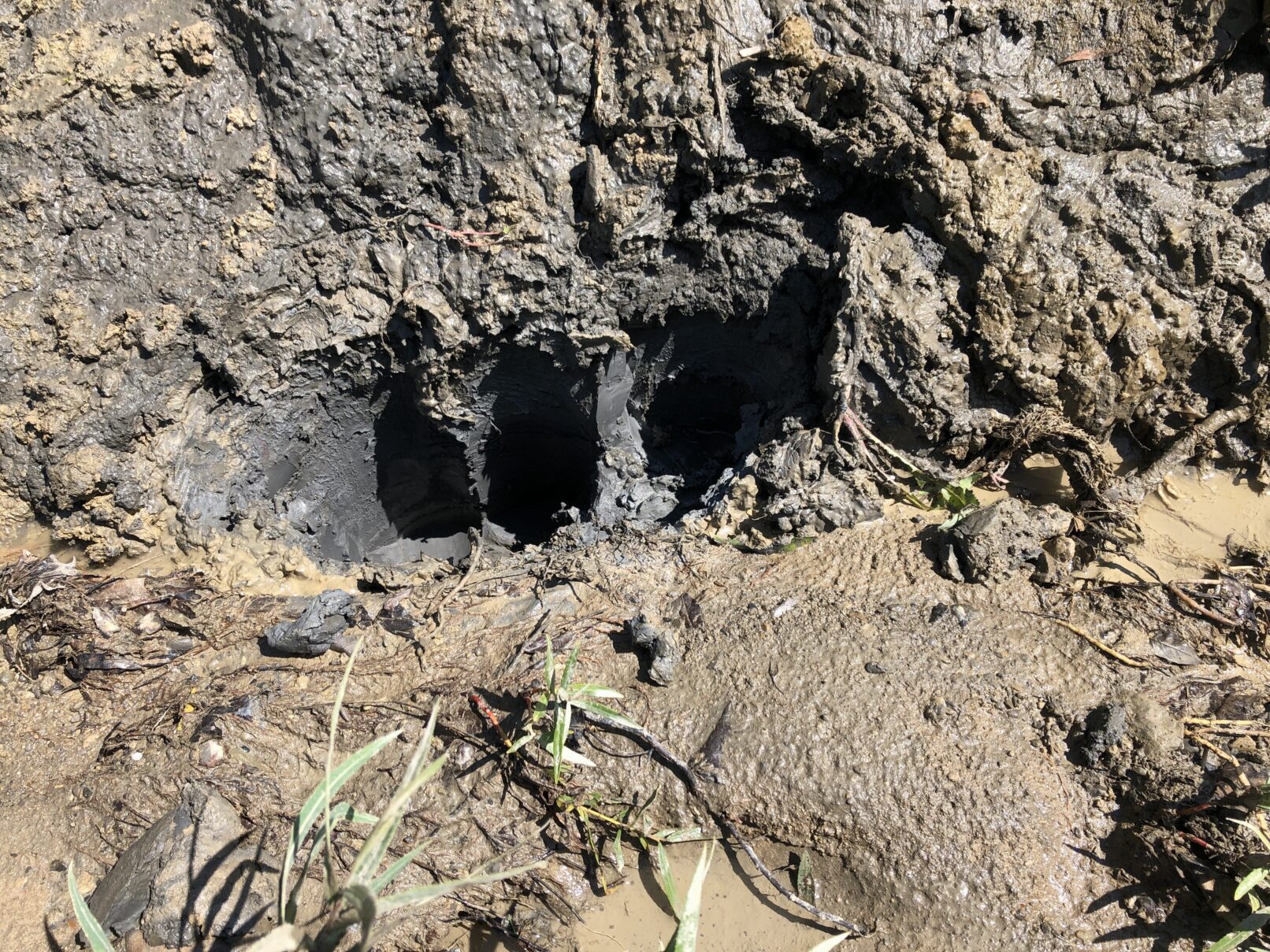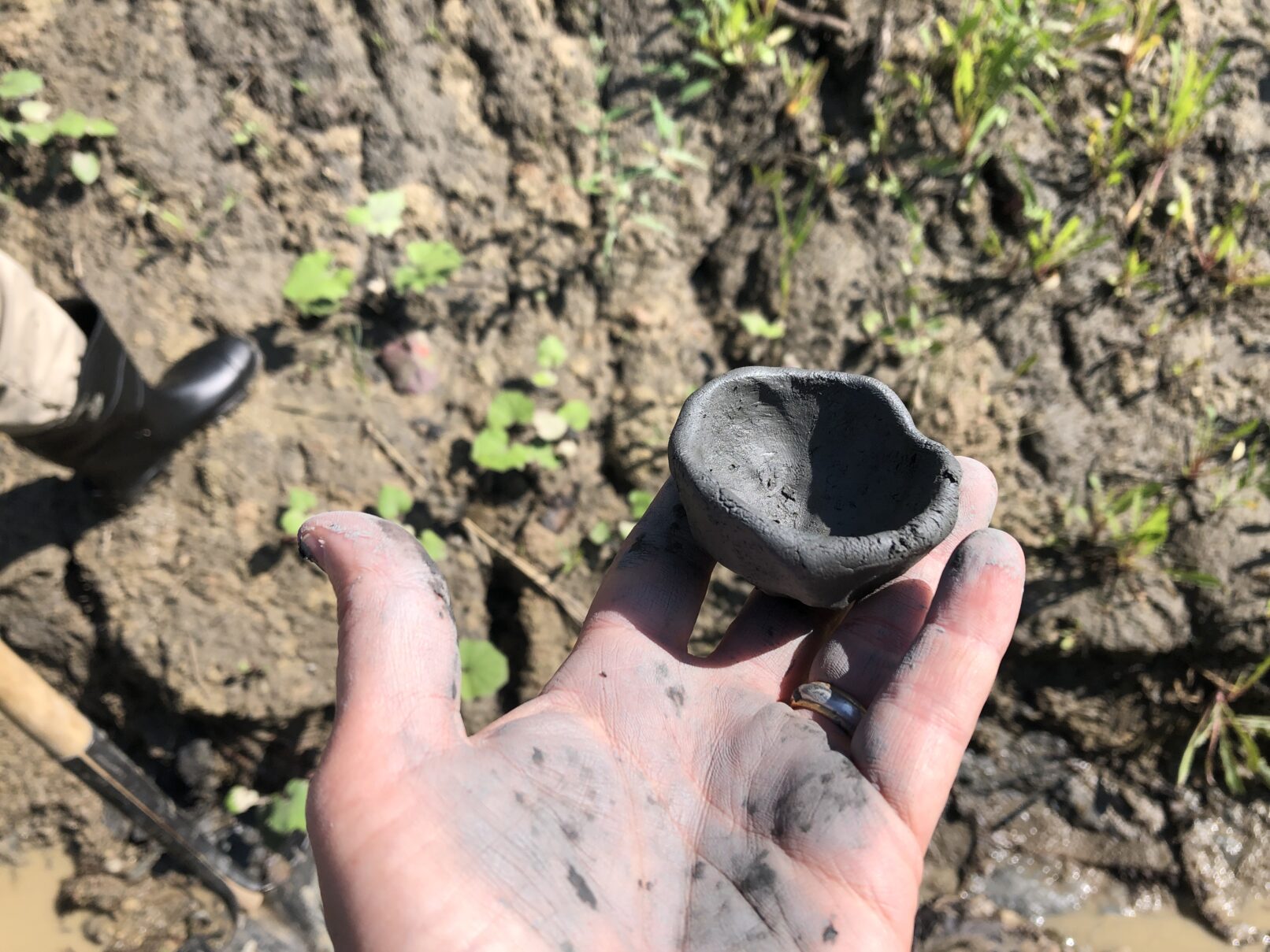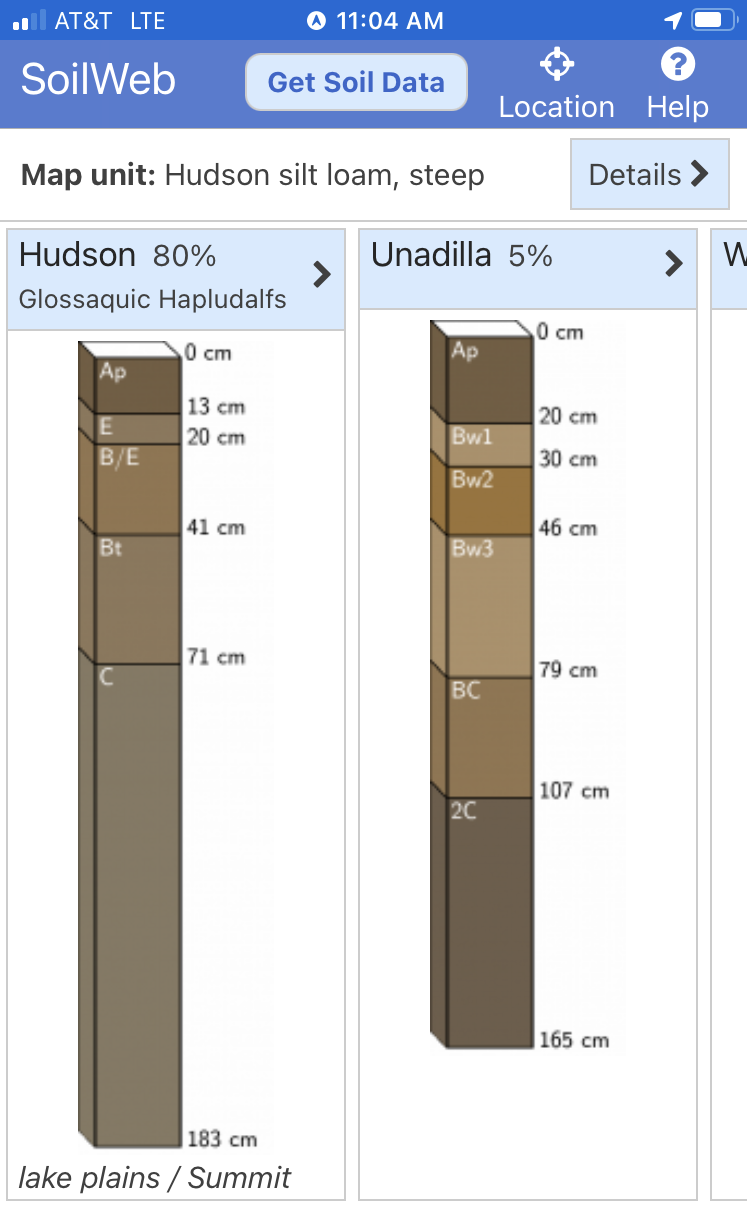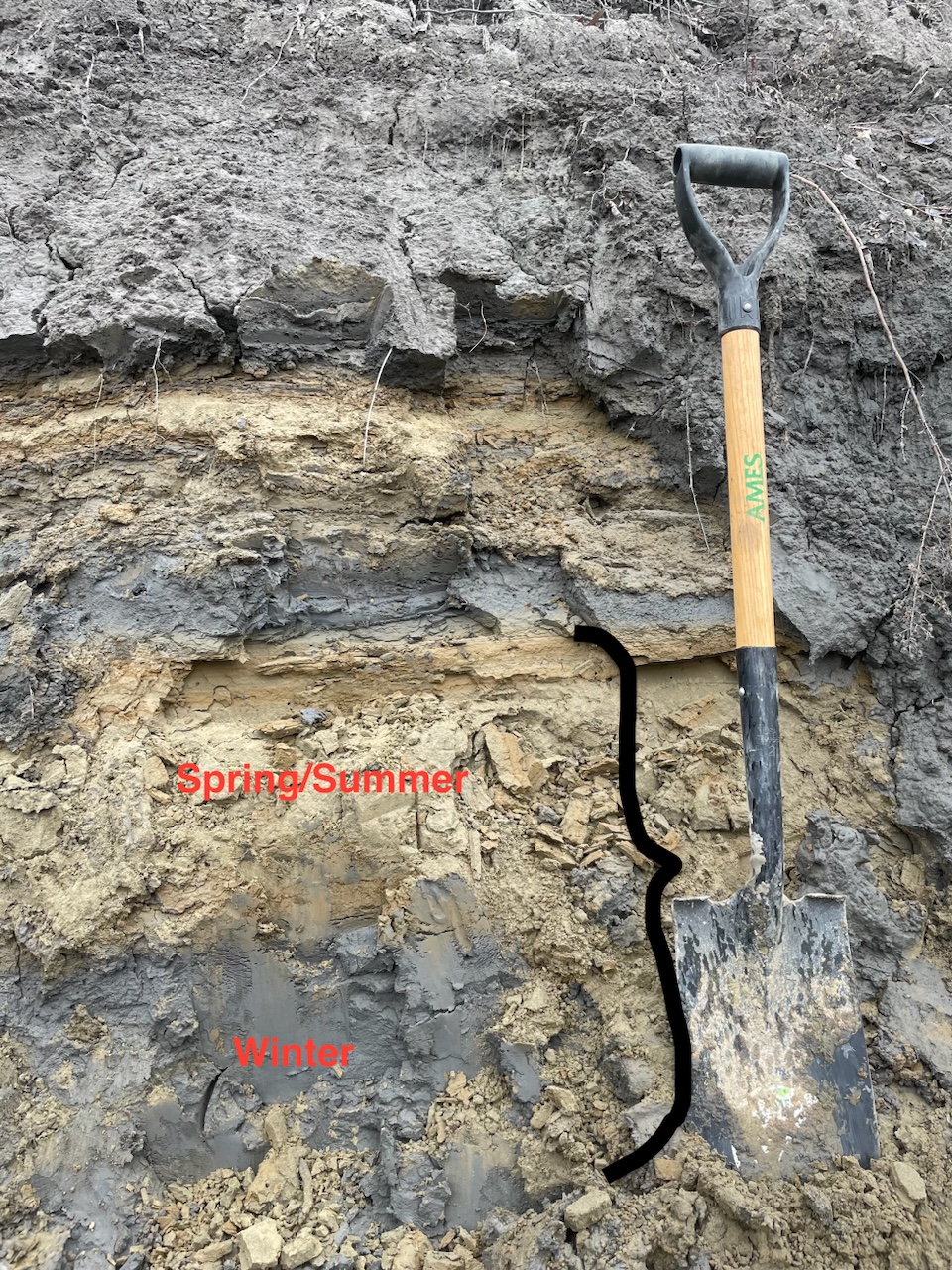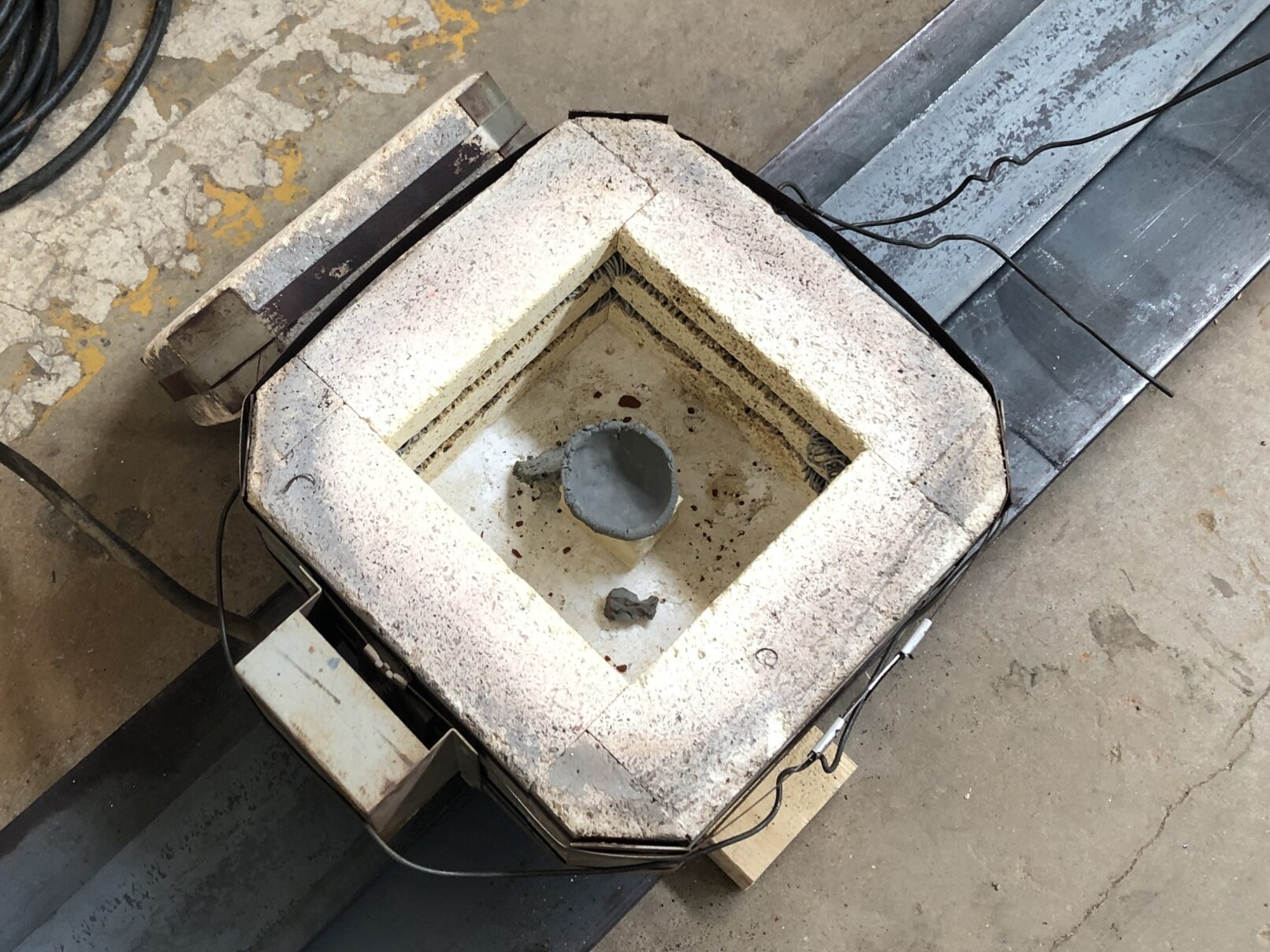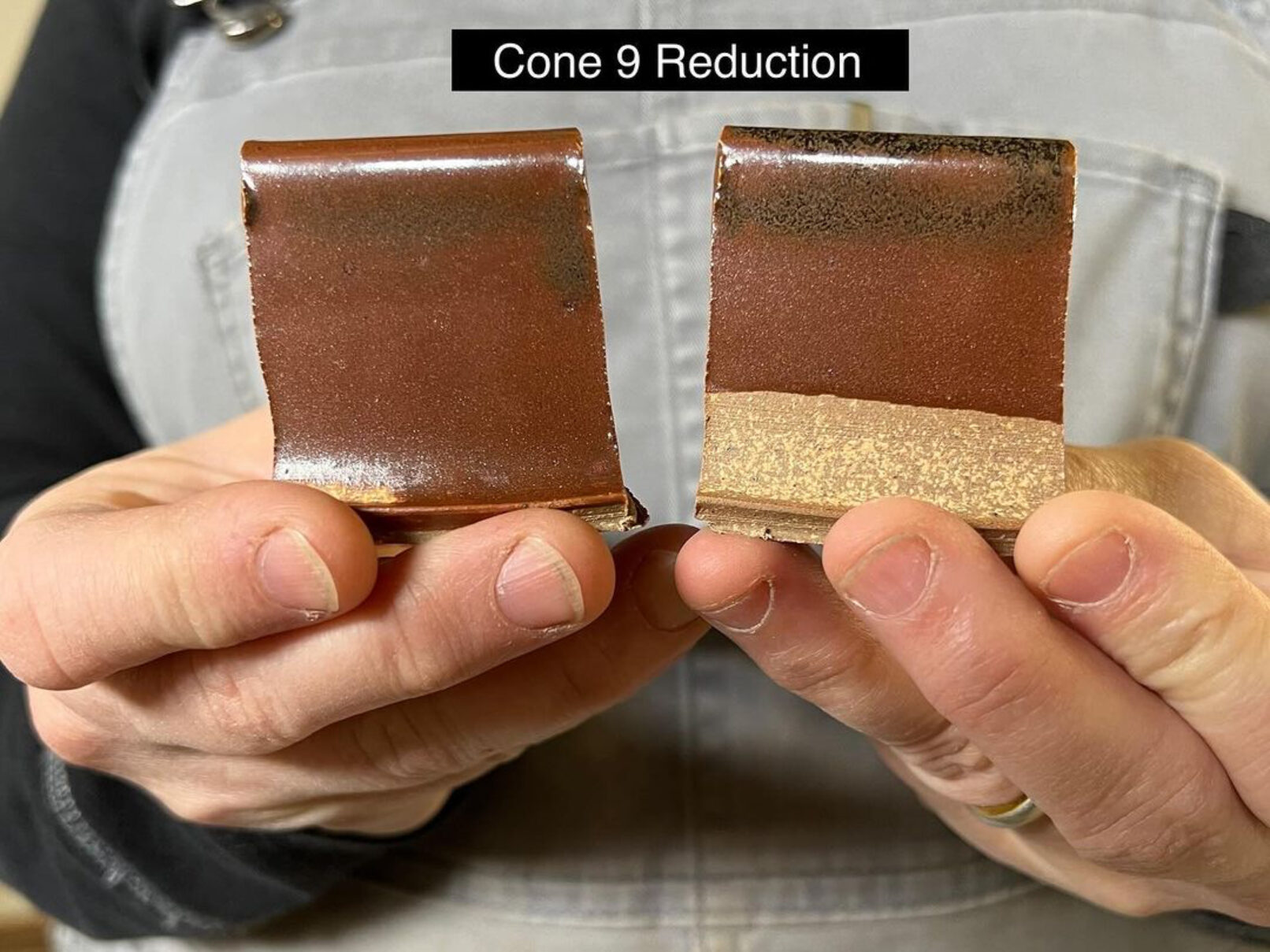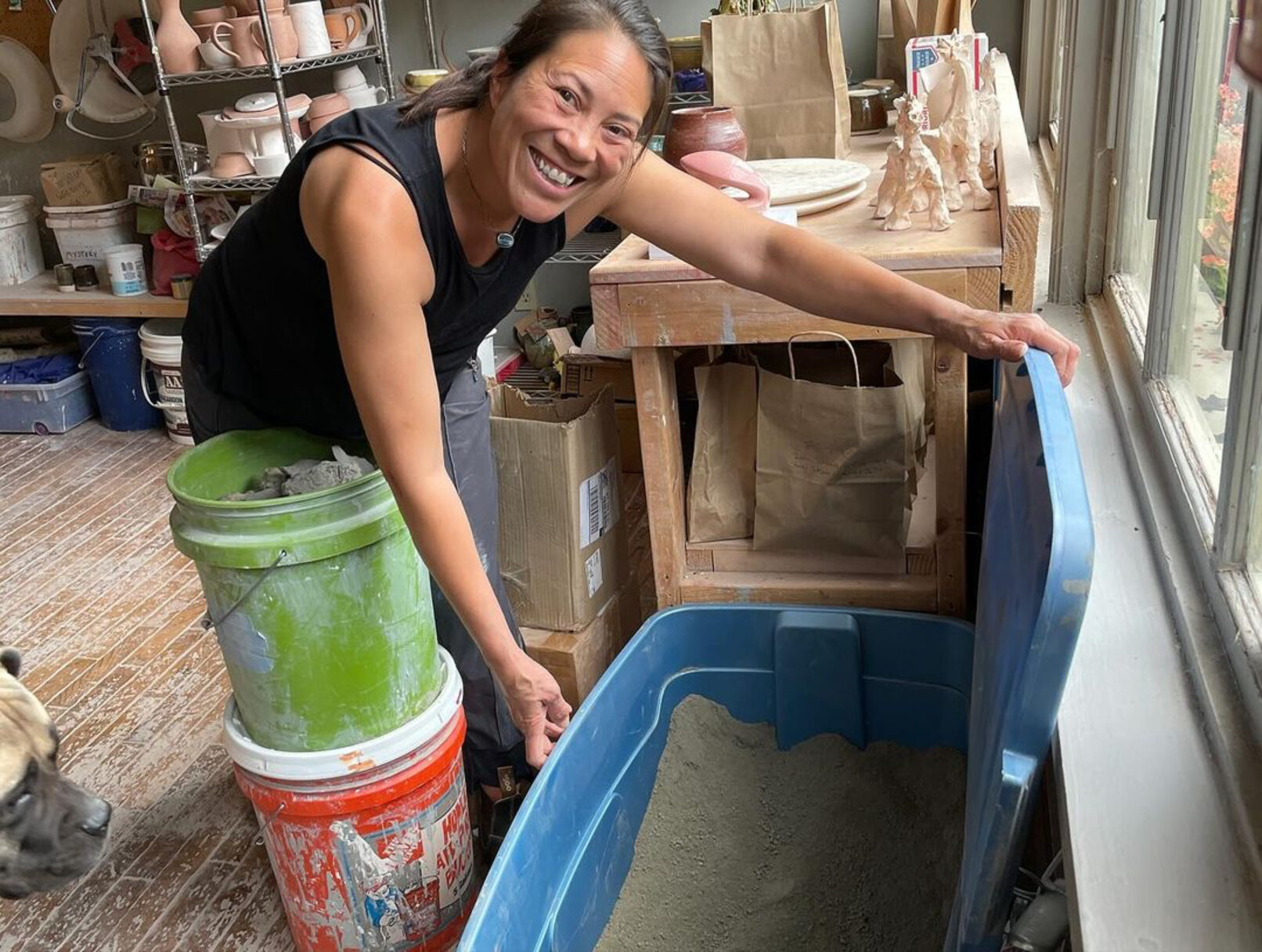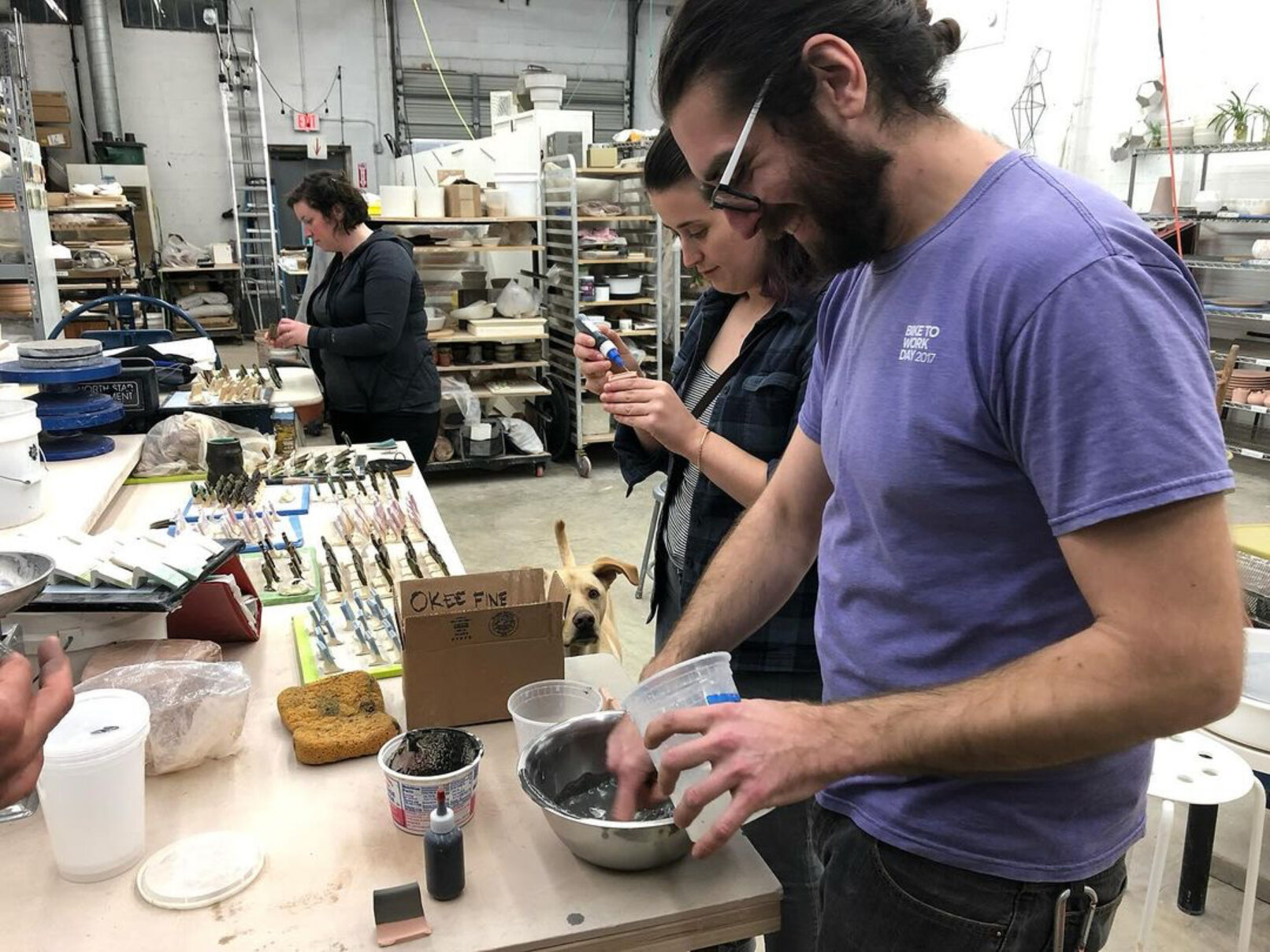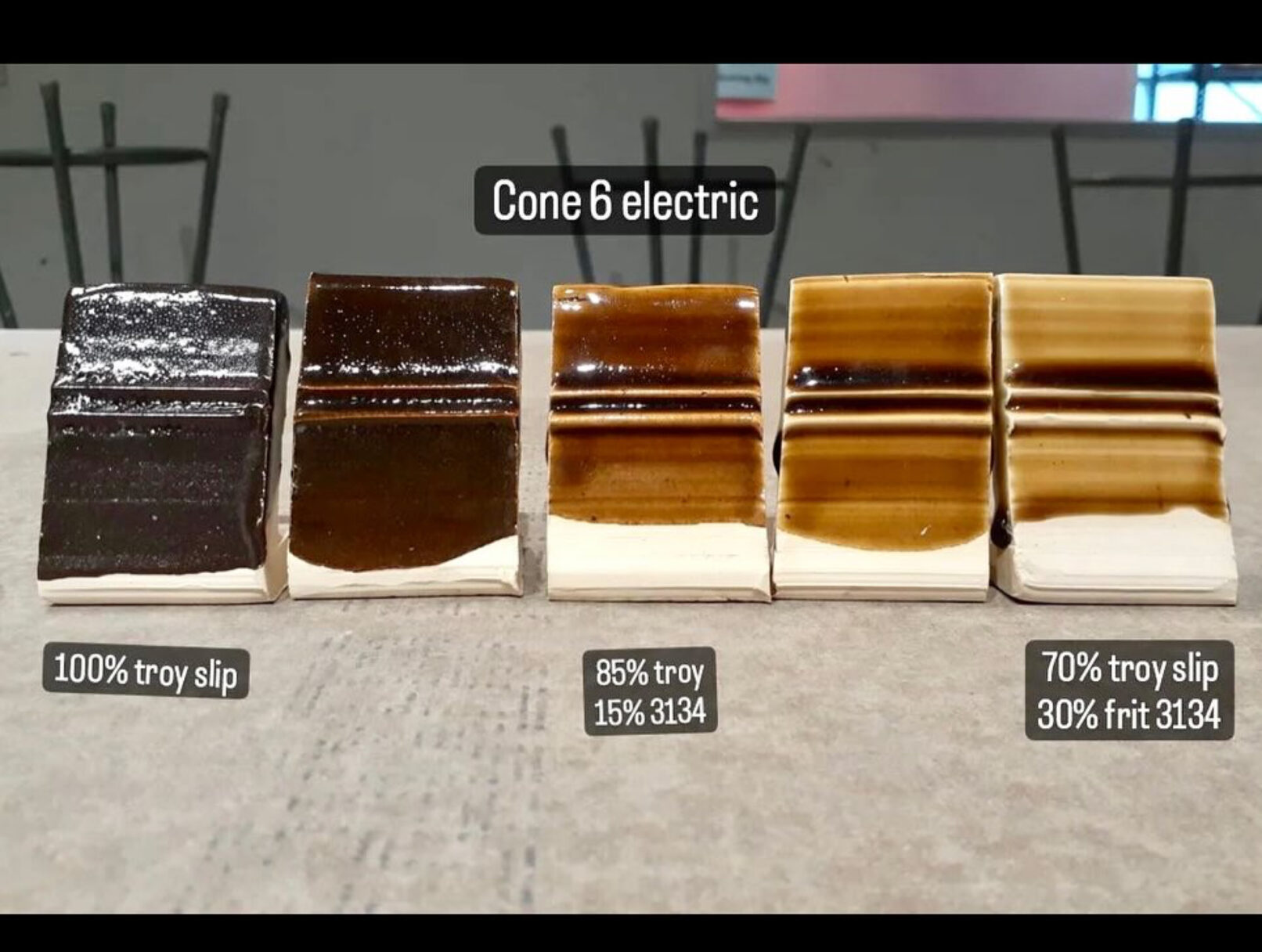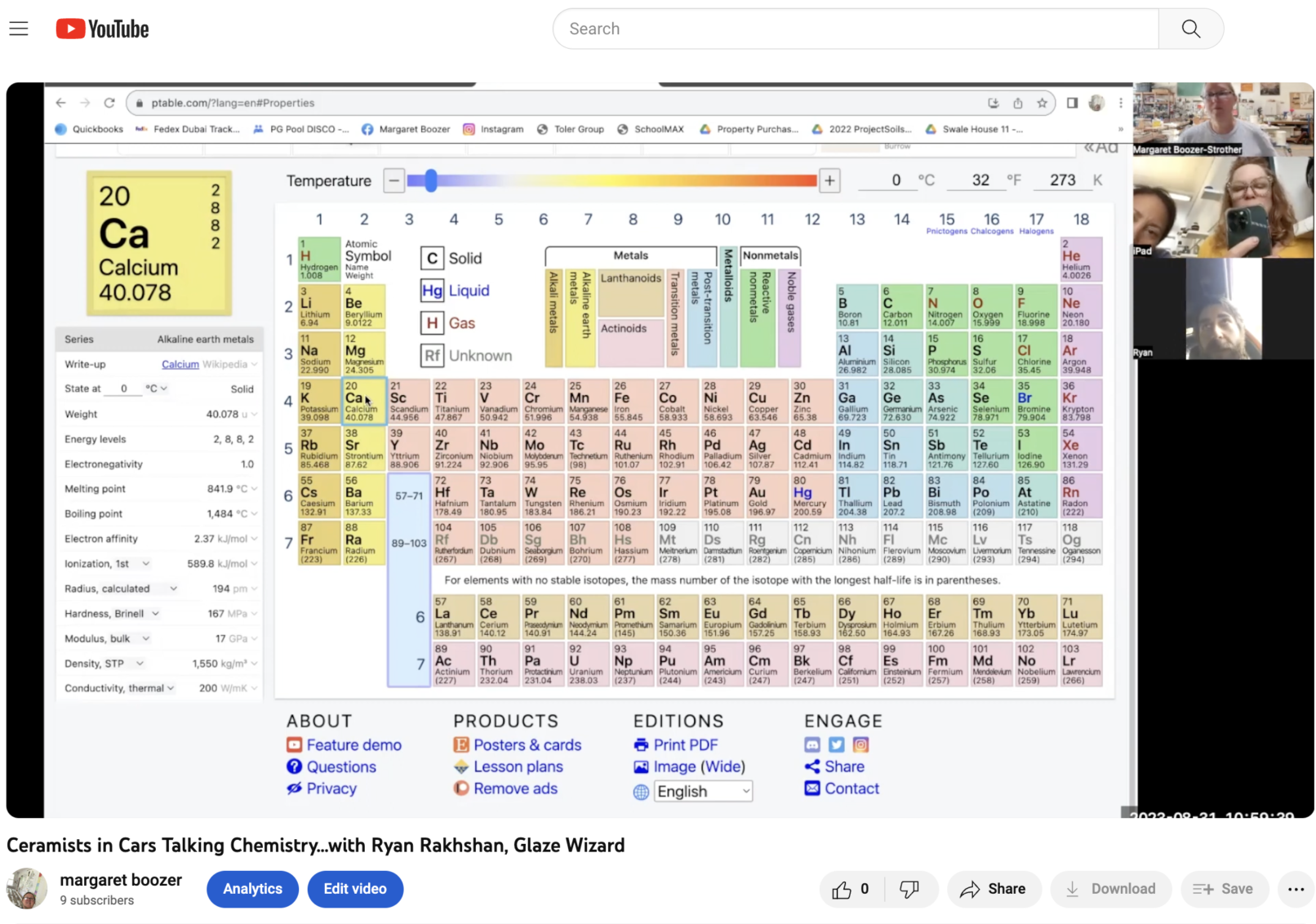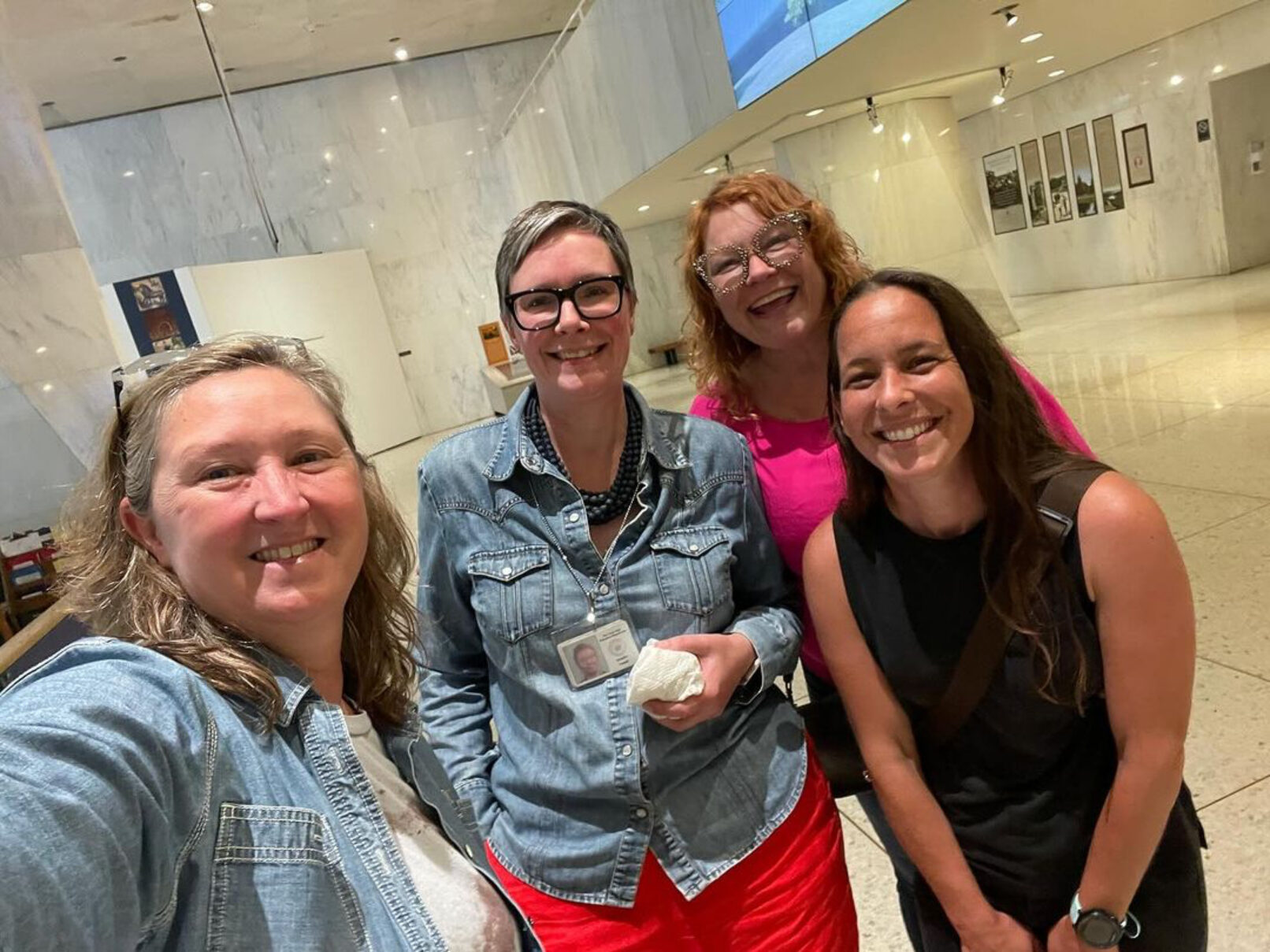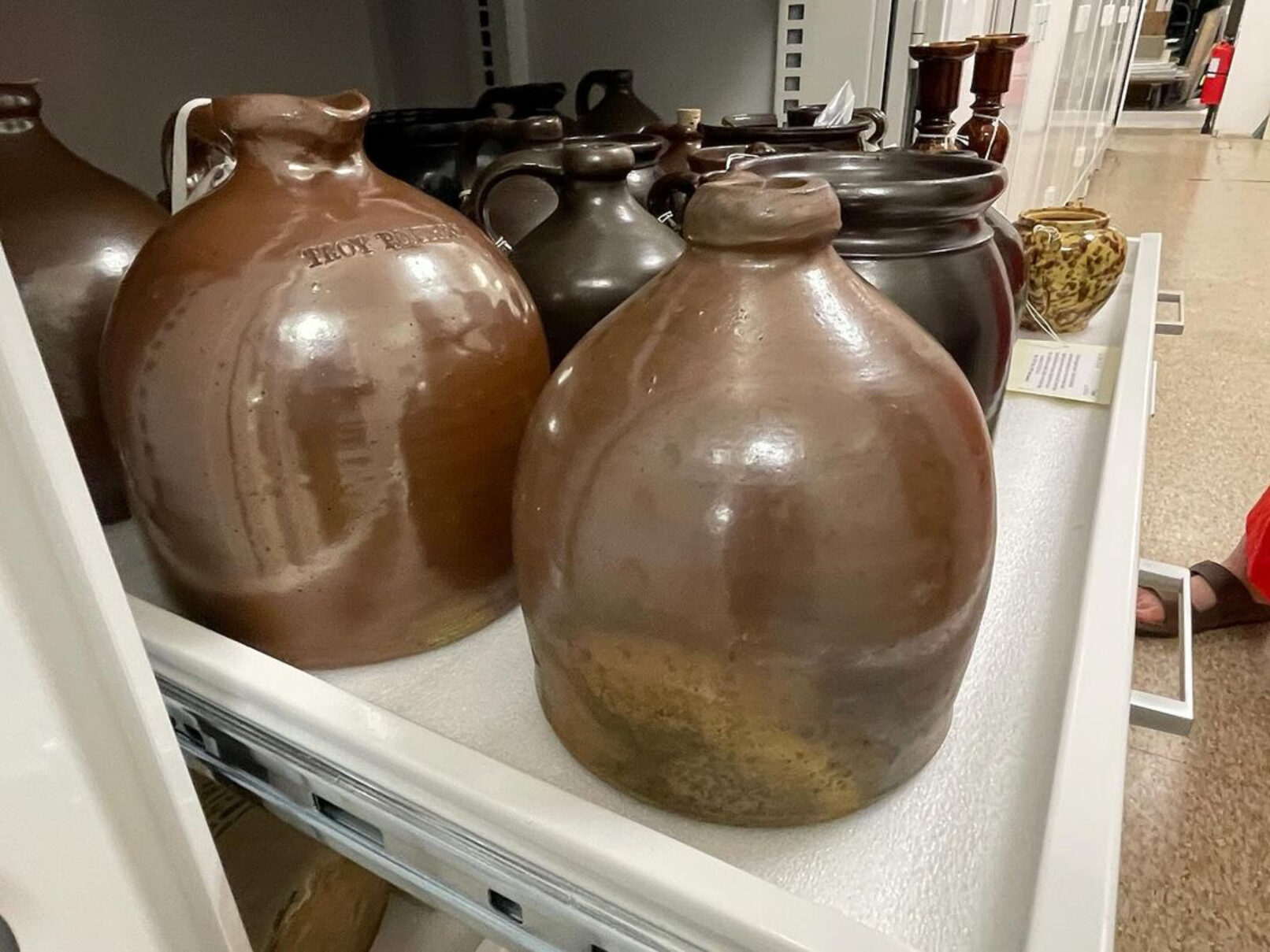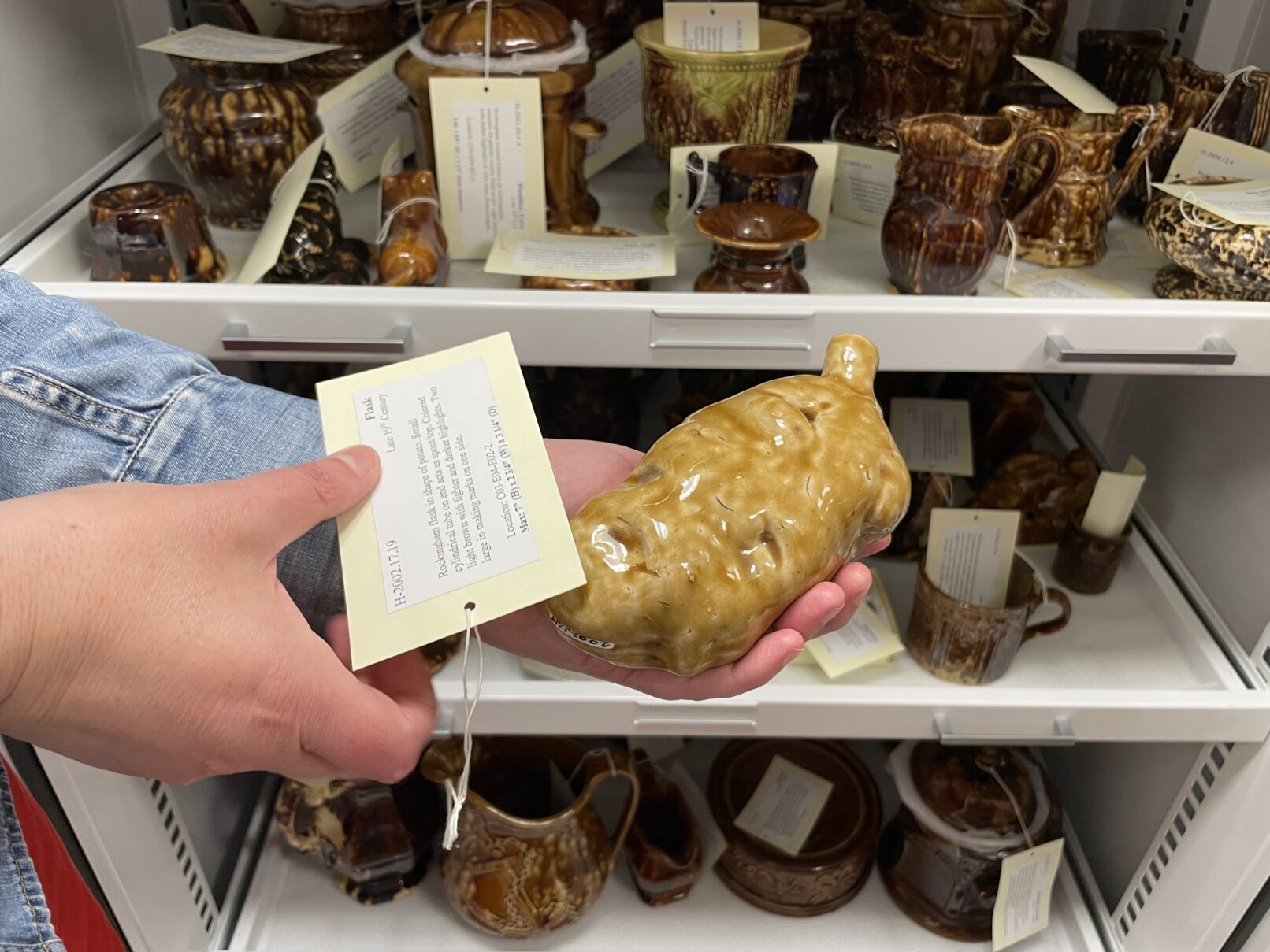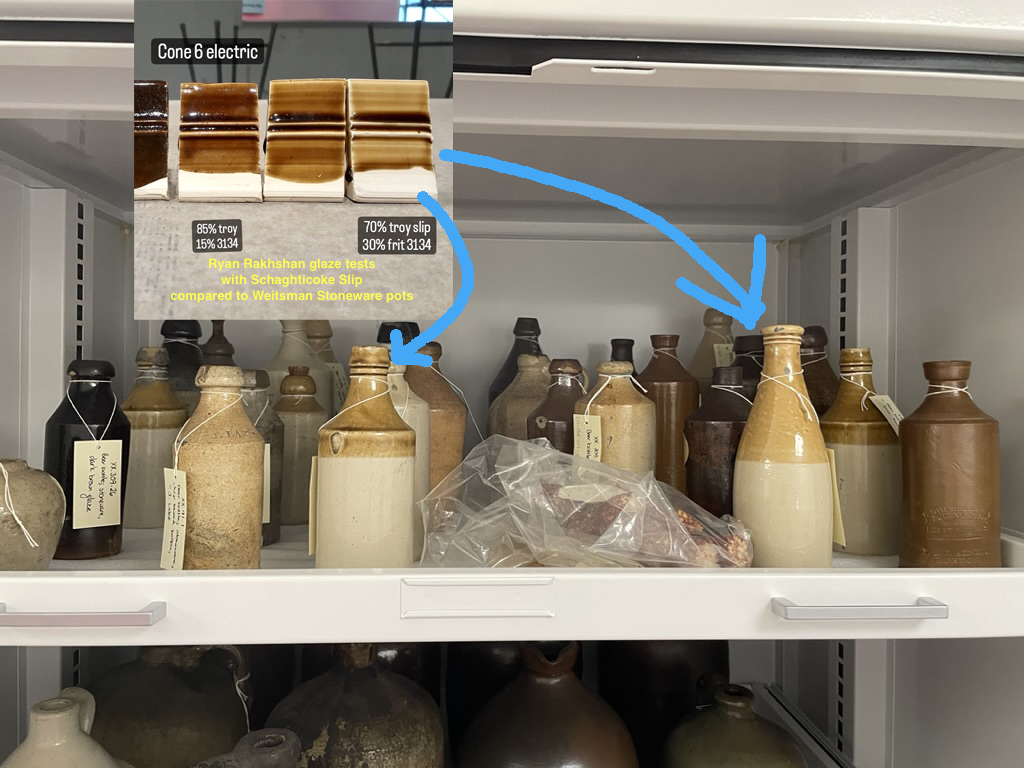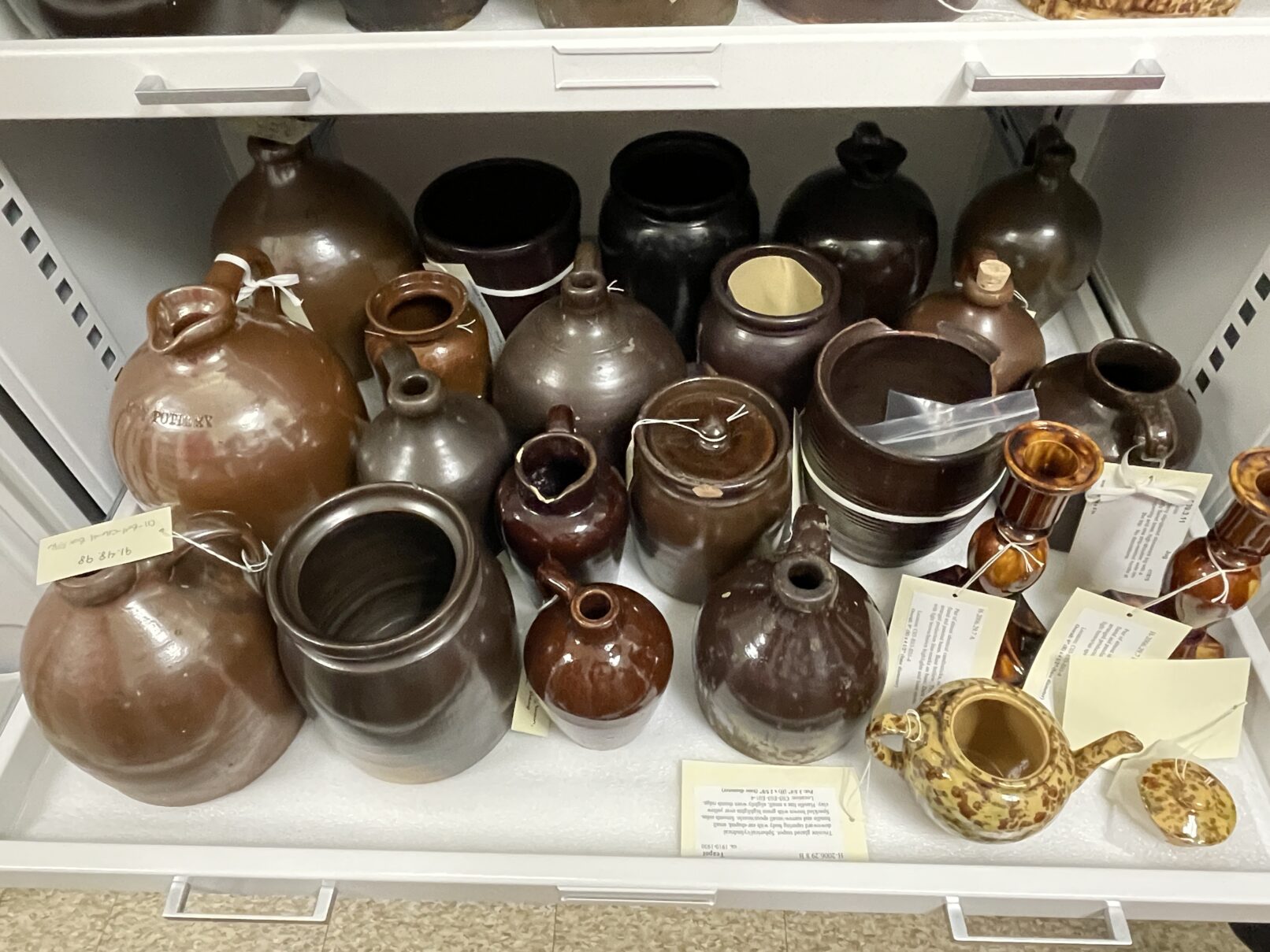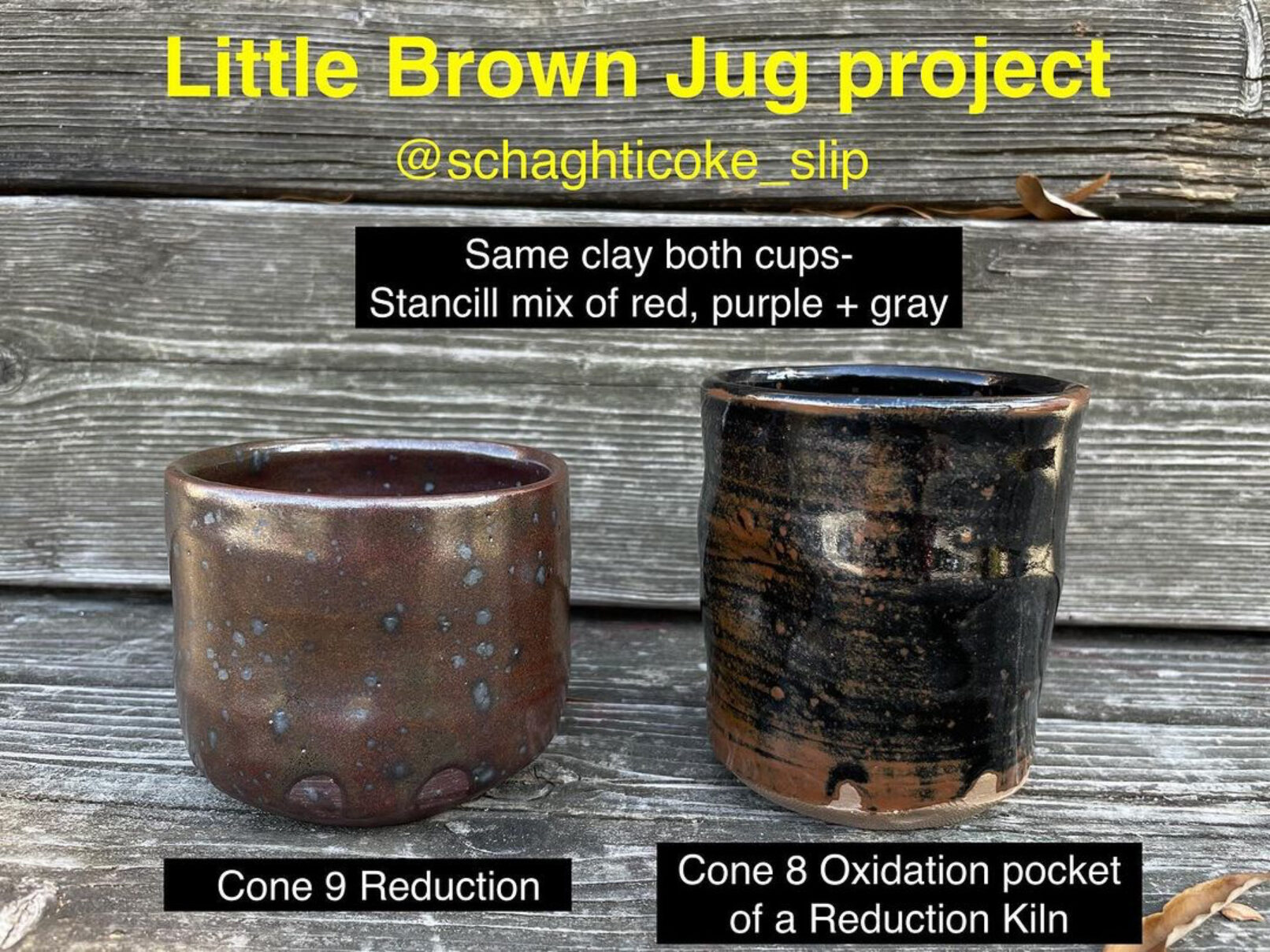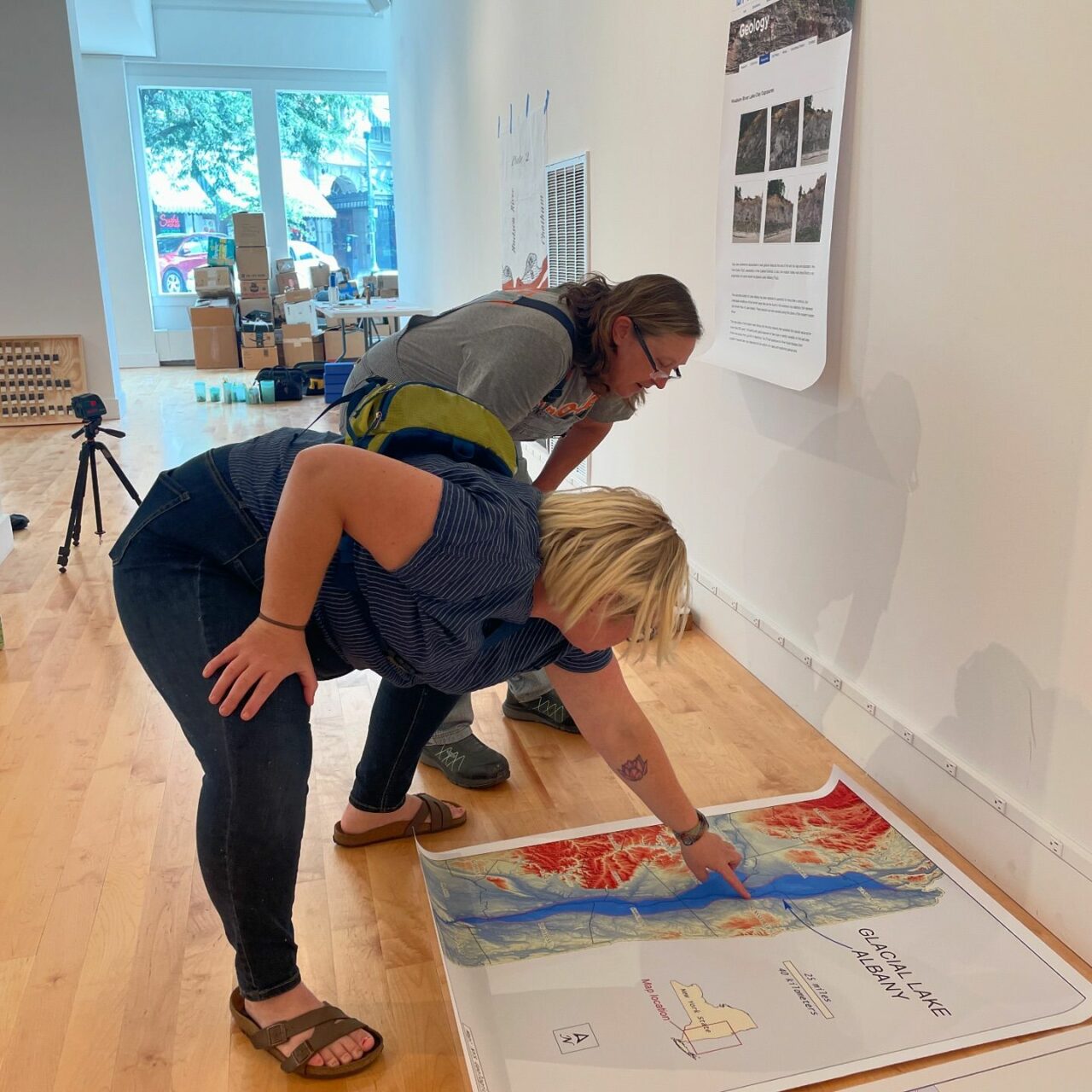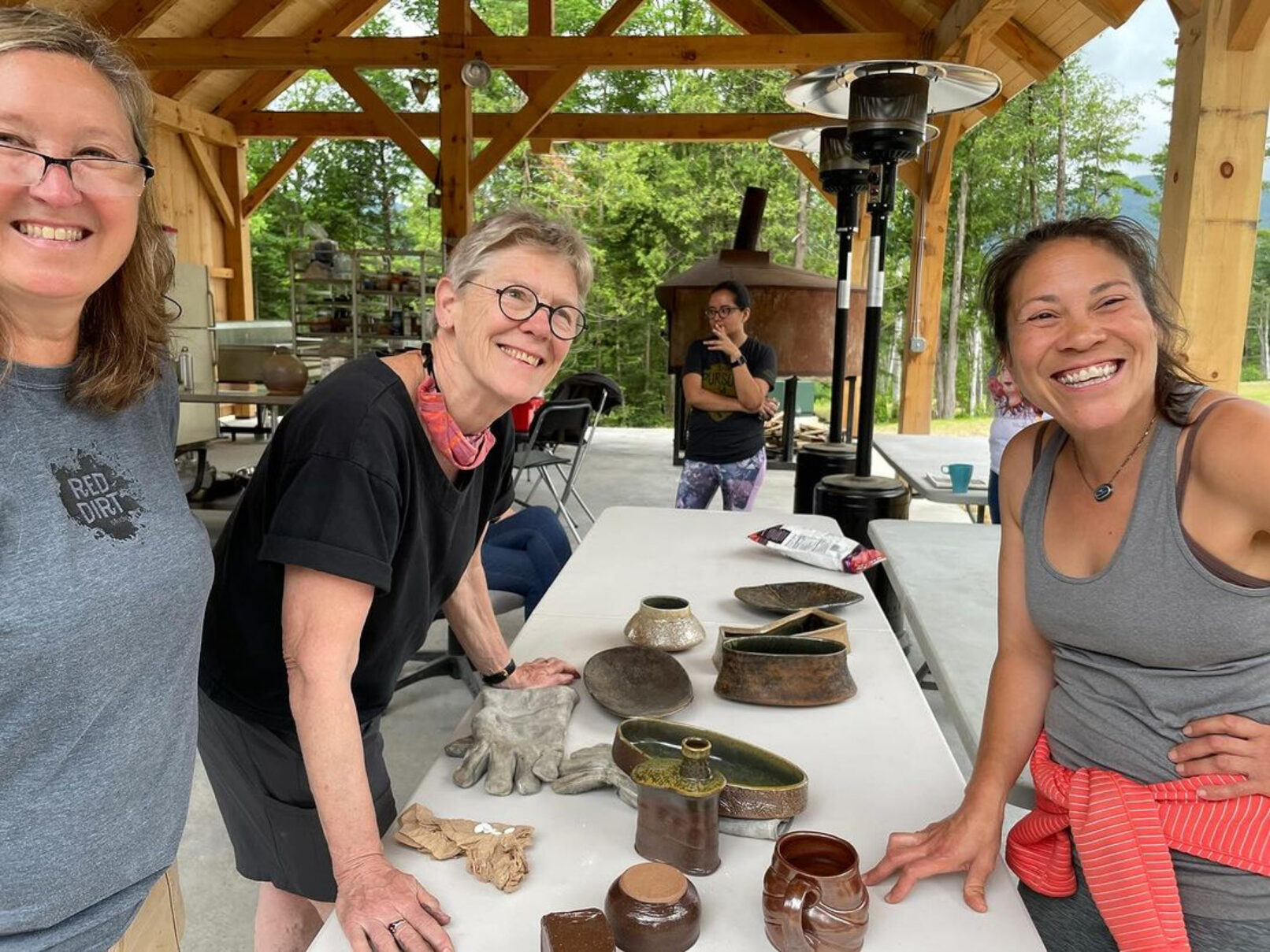2024 Little Brown Jug + Dig Deeper (Troy, NY)
Little Brown Jug + Dig Deeper:
[some] Art, Science and History of Troy Clay
September 27-November 16, 2024
The Arts Center of the Capital Region
265 River St, Troy, NY 12180
Clay and curiosity are at the center of this meandering exhibition connecting potters, soil scientists, artists, historians, engineers, curators, geologists, museums, glaze chemists and more.
Clays vary from location to location because of their unique geologic history…the rock that decomposed to create them, the impurities they accumulated as they traveled from their originating location to where they were deposited, the weathering they endured along the way.
Curiosity about Troy clay led four artists to step into the footsteps of Sam Wilson (The “Uncle Sam”) digging the clay that he and his brother Ebenezer dug to make some of the first bricks in colonial America.
It also led us to a collaborative experiment with a cousin of Albany Slip that became the Little Brown Jug project- an invitational pottery exhibit and opportunity to see this material in the hands of so many potters, on so many clay bodies, in so many firing conditions, telling so many stories.
Working on this exhibition has also made us curious to dig deeper into our own histories and making processes, to become more fully aware of the blessings and privilege that this material has afforded each of us, and to learn how to have a more reciprocal relationship with the land.
We are excited to connect with the New York State Museum and Chief Curator of History Jennifer Lemak for historic examples of New York stoneware featuring Albany slip from the Museum’s Adam Weitsman Collection. Dr. Lemak together with potter and former Studio Potter editor Mary Barringer will be the jurors for Little Brown Jug, selecting some pots at the end of the exhibition to travel back to the museum to be shown alongside their historic forebears.
The Little Brown Jug + Dig Deeper exhibit will include a range of programming for both professional and recreational audiences including opportunities to discuss ceramic history, to experiment with glaze chemistry, to make some pots, to fire a rocket kiln, to learn some geology and soil science, and to explore both practical and philosophical aspects of clay from the ground.
See exhibit and programming information at Arts Center of the Capital Region. Connect with the conversation, Little Brown Jug Project, on Instagram at @Schaghticoke_Slip
Little Brown Jug exhibiting ceramic artists:
Molly Adams, Cat Viera Akerman, Karen Arrington, Julia Bargo, Wesley Barnes, Margaret Boozer, Julie Boynton, Kendra Brown, Kate Childs Graham, a.k.a. KCG, Kelly Clendenin, Leah Cohen, Michael Corigliano, Michael Cummins, Connor Czora, Gina Mai Denn, Bianca Dupuis, Rachel Garrison, Bruce Gholson, Gina Mai Denn. Rebecca Gitter, Ian Hall-Hough, Joe Hicks, Mary Pat Hopper, Thomas Johnson, Lyla Kaplan, Patricia Keelen, Mariah Kitner, Laura Korch, Mary LaFleur, Pam Lau, Matt Levy, Tom Loggia, Levi Mahan, Robilee McIntyre, Karen Morgenstern, Rebecca Murtaugh, Lisa Orr, Alex Paton, Ryan Rakhshan, Loren Scherbak, Hitomi Shibata, Takuro Shibata, Hayley Cranberry Small, Riley Studebaker, Lou Thorne, Megan Van Wagoner
Jurors:
Dr. Jennifer Lemak, Chief Curator New York State Museum
Mary Barringer, ceramist + writer
organizers/ exhibiting artists:
Bianca Dupuis, Broken Mold Studio (Troy, NY)
Robilee McIntyre, FuzzyLightbulb Studio (Troy, NY),
Claire Sherwood, Visual Artist and K-8 Educator (Averill Park, NY)
Margaret Boozer, Red Dirt Studio and NYC Urban Soils Institute (Mount Rainier, MD)
collaborators and contributors:
P. Thomas Carroll, historian, formerly Troy, NY (now AZ!)
Kathy Sheehan, Executive Director, Hart Cluett Museum
Chris Kelly, historian, Schaghticoke, NY
Don Rittner, historian, archeologist, anthropologist, environmental activist, educator, author, film maker, Capital District, NY
Olga Vargas, USDA-NRCS, Greenwich, NY
Steve Carlisle, retired USDA-NRCS, Capital District, NY
Dr. Sarah Cadieux, Sr. Lecturer, Associate Director of Environmental Science, RPI
Ryan Rahkshan, glaze designer
Marina Tsaplina, Interdisciplinary EcoPuppetry Artist | Writer | Disability Culture Activist
RL Martens, ceramist + writer
Connor Czora, ceramist
Jeff Zamek, glaze wizard + ceramic consulting services
Shino Tanikawa, NYC Soil and Water Conservation District, Urban Soils Institute
Richard Shaw, Urban Soils Institute, retired USDA-NRCS
Dr. William Carty, ceramic engineering consultant, retired NY State College of Ceramics at Alfred University
Loren Michael Mortimer, PhD, Historian | Digital Humanist | Instructional Designer
and many more!
